The Big Chandra Picture
In more than a decade of operation, NASA's Chandra X-ray Observatory has transformed our view of the high-energy Universe with its ability to make exquisite X-ray images of star clusters, supernova remnants, galactic eruptions, and collisions between clusters of galaxies. As Chandra expands the realm of the known, it continues to raise new questions and point the way for future exploration. This photo blog presents some of Chandra's most spectacular images in a large and shareable format. Follow Chandra on Twitter
18 Jun 2020

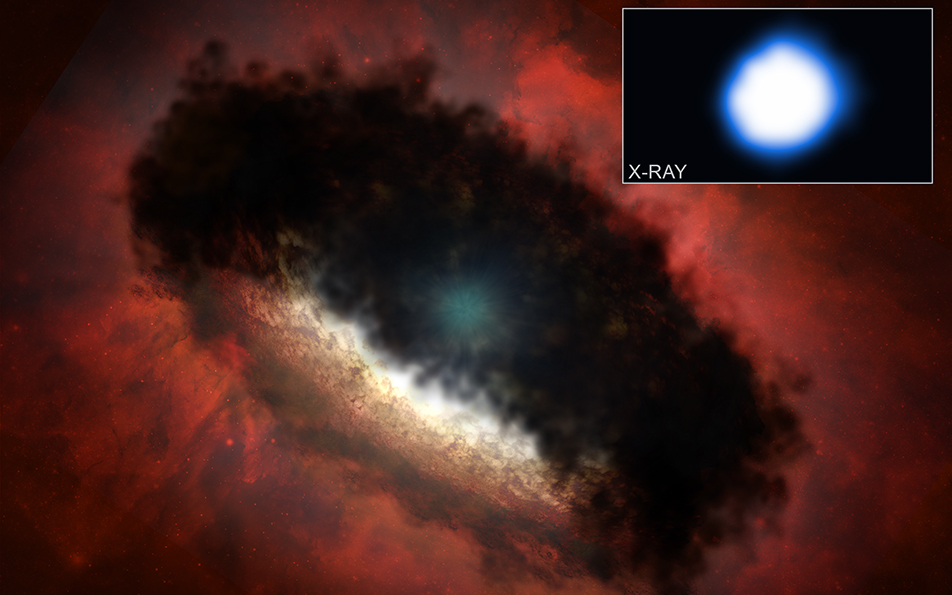 HOPS 383:
HOPS 383: By detecting an X-ray flare from a very young star using NASA's Chandra X-ray Observatory, researchers have reset the timeline for when stars like the Sun start blasting high-energy radiation into space.
[Photo Album]02 Jun 2020

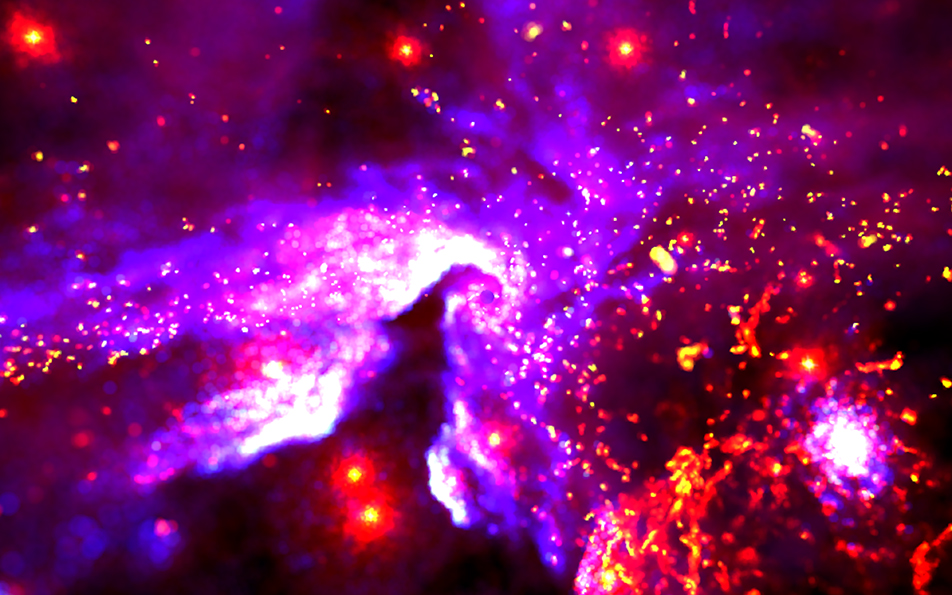 Galactic Center:
Galactic Center: By combining data from telescopes with supercomputer simulations and virtual reality (VR), a new visualization allows you to experience 500 years of cosmic evolution around the supermassive black hole at the center of the Milky Way.
[Photo Album]11 May 2020

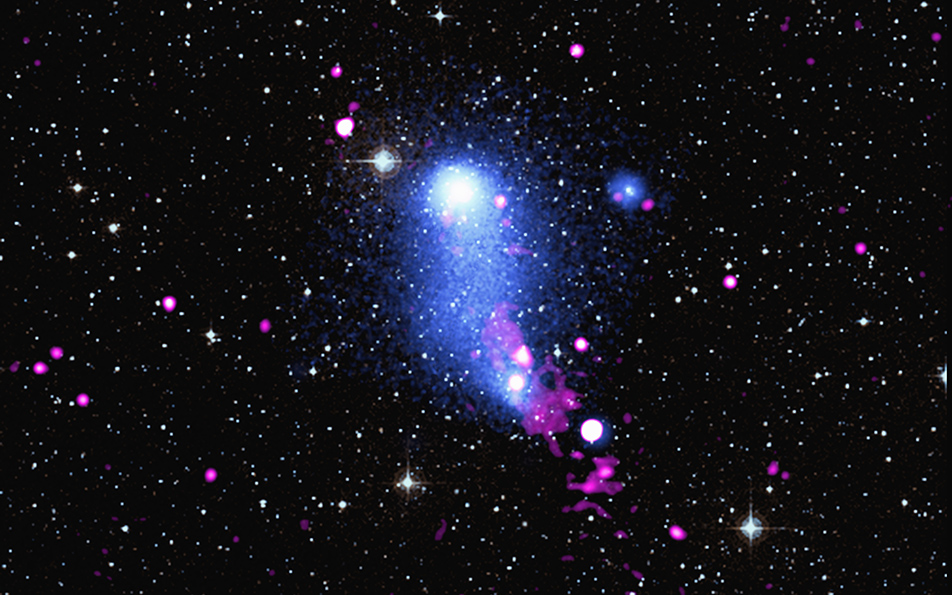 Abell 2384:
Abell 2384: Several hundred million years ago, two galaxy clusters collided and then passed through each other. This mighty event released a flood of hot gas from each galaxy cluster that formed an unusual bridge between the two objects.
[Photo Album]19 Mar 2020

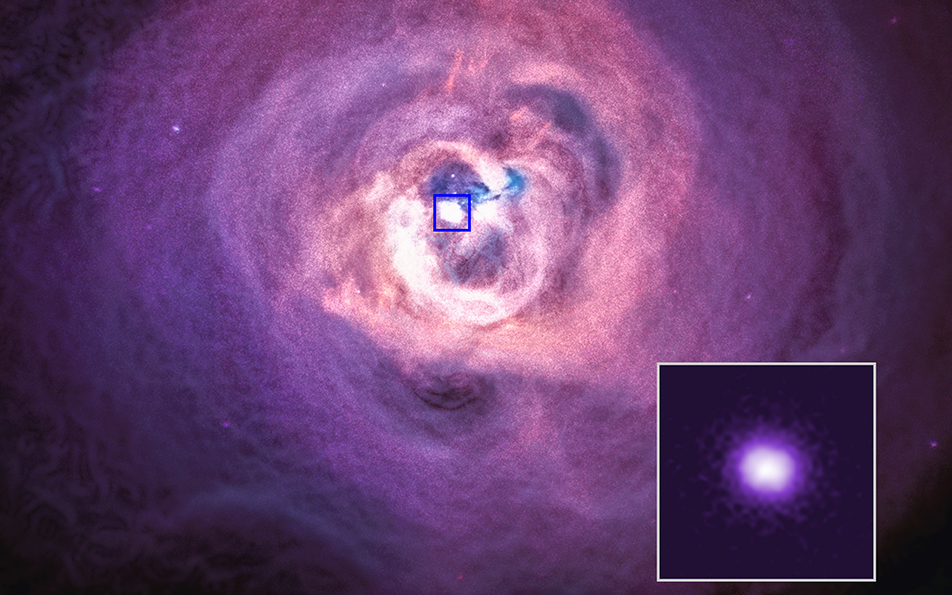 Perseus Cluster:
Perseus Cluster: Astronomers using NASA's Chandra X-ray Observatory have made one of the first experimental tests of string theory, a set of models intended to tie together all known forces, particles, and interactions.
[Photo Album]06 Jan 2020

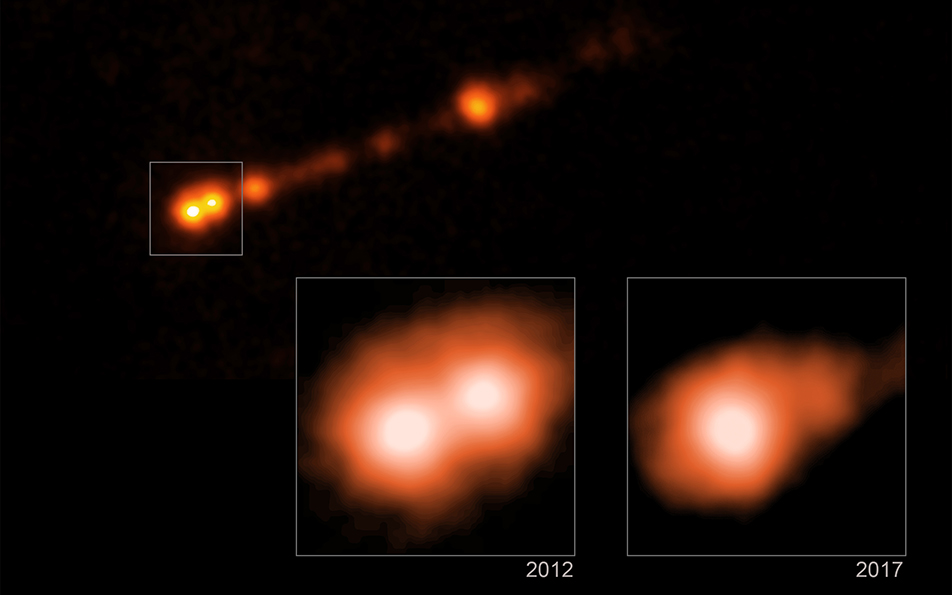 M87:
M87: These images show evidence from NASA's Chandra X-ray Observatory that the black hole in the galaxy M87 is blasting particles out at over 99% the speed of light.
[Photo Album]05 Jan 2020

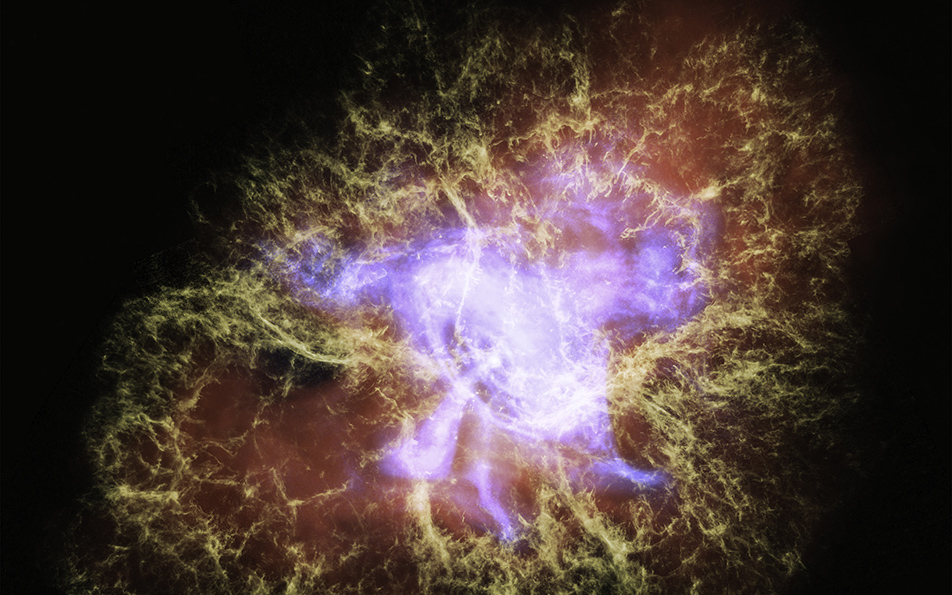 Crab Nebula:
Crab Nebula: Astronomers and visualization specialists from NASA's Universe of Learning program have combined X-ray, visible, and infrared wavelengths to create a 3D representation of the dynamic Crab Nebula.
[Photo Album]30 Oct 2019

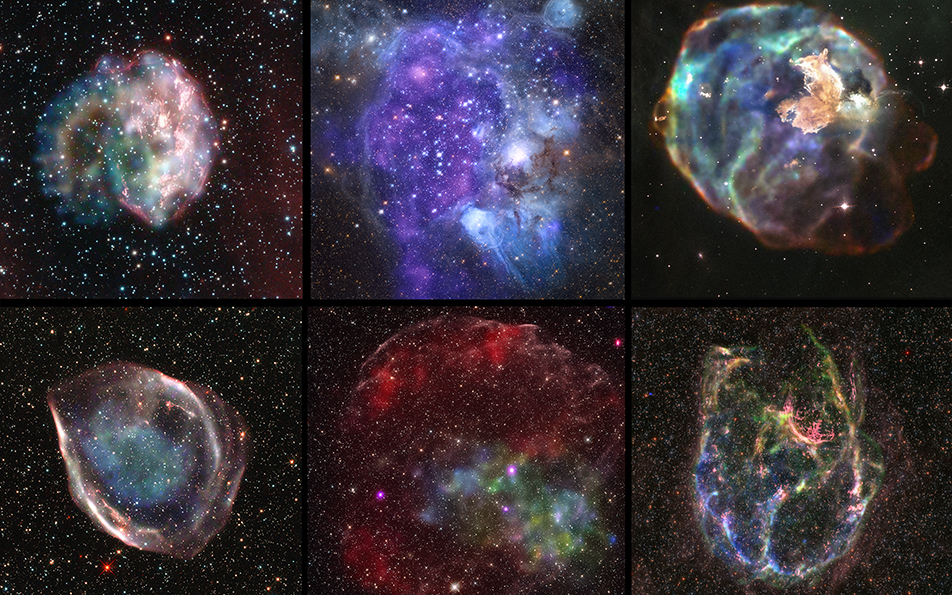 Chandra Archive Collection:
Chandra Archive Collection: Six objects in the Large Magellanic Cloud about 160,000 light years away.
[Photo Album]17 Oct 2019

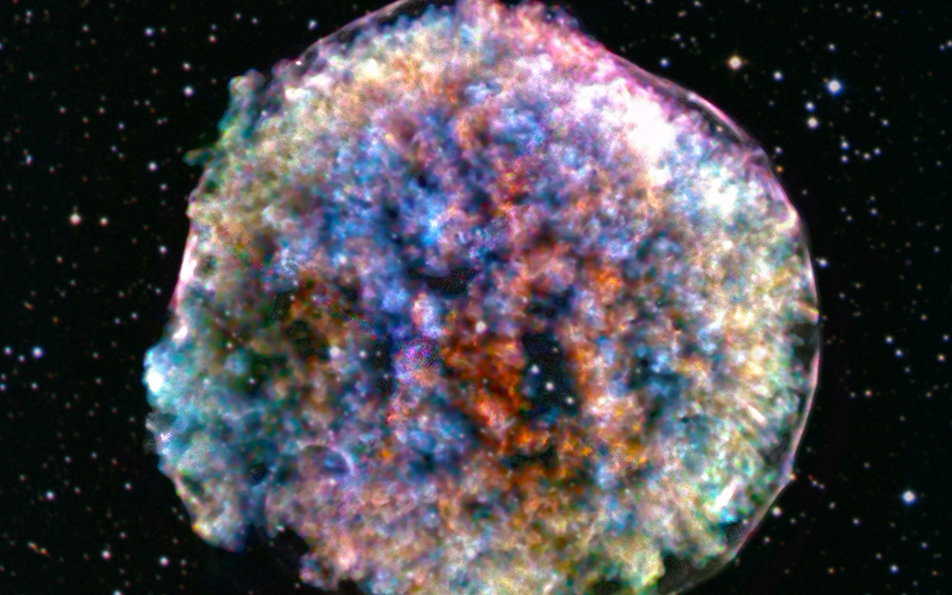 Tycho's Supernova Remnant:
Tycho's Supernova Remnant: A new image of the Tycho supernova remnant from Chandra reveals an intriguing pattern of bright clumps and fainter holes giving clues about its origin.
[Photo Album]23 Jul 2019

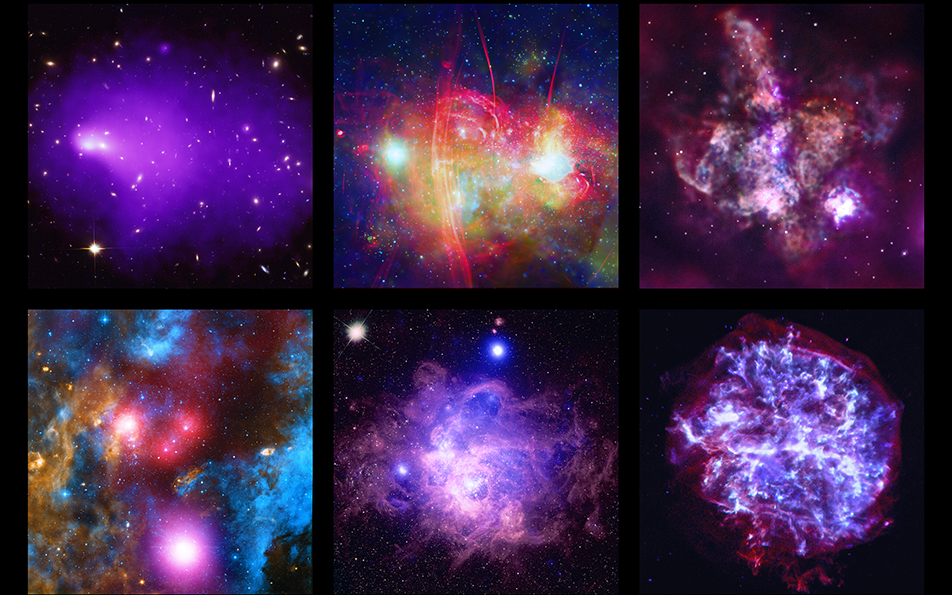 G292.0+1.8:
G292.0+1.8: To commemorate the 20th anniversary of Chandra X-ray Observatory, an assembly of new images is being released.
[Photo Album]24 Feb 2017

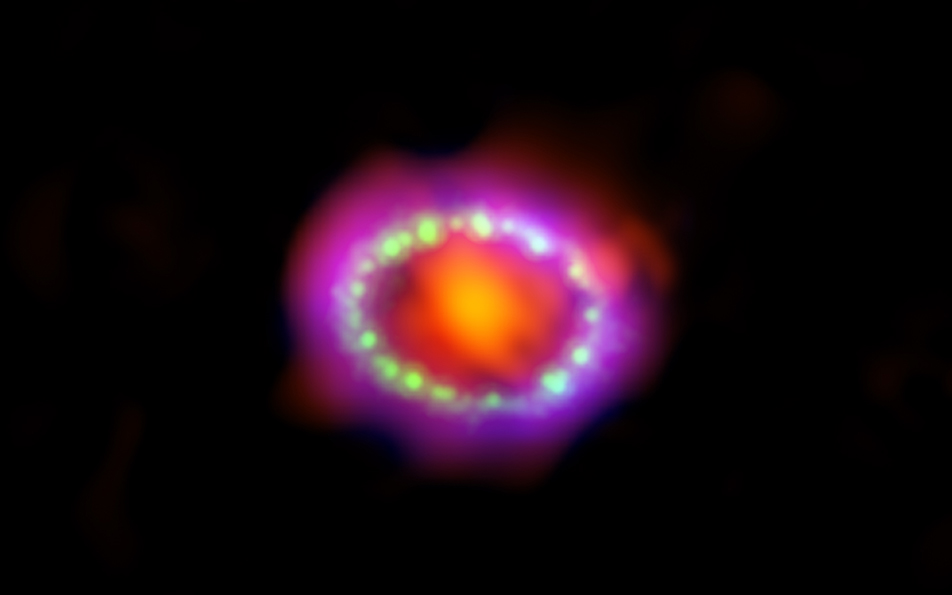 Supernova 1987A:
Supernova 1987A: Three decades ago, astronomers spotted one of the brightest exploding stars in more than 400 years.
[Photo Album]06 Feb 2017

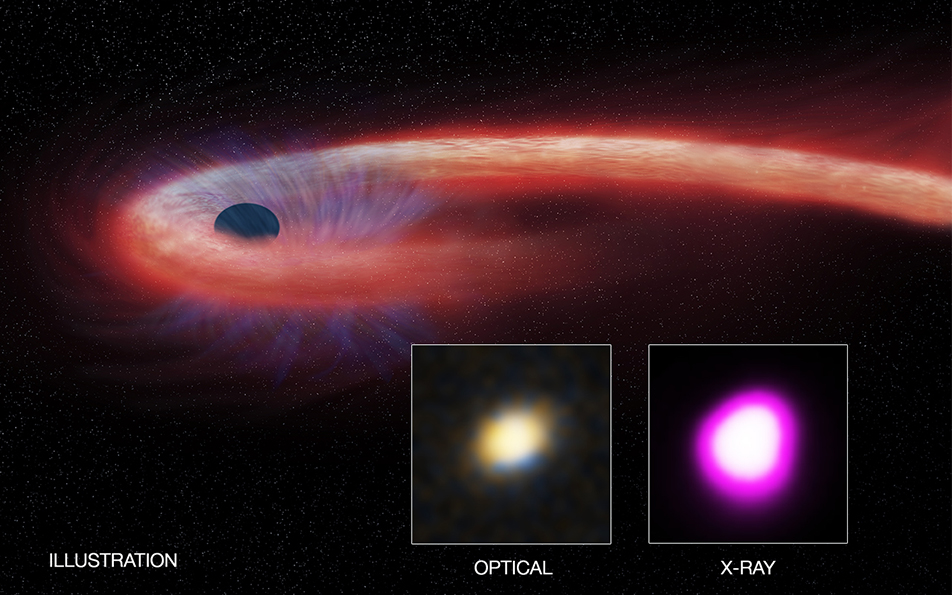 XJ1500+0154:
XJ1500+0154: An X-ray source located in a small galaxy about 1.8 billion light years from Earth.
[Photo Album]18 Jan 2017

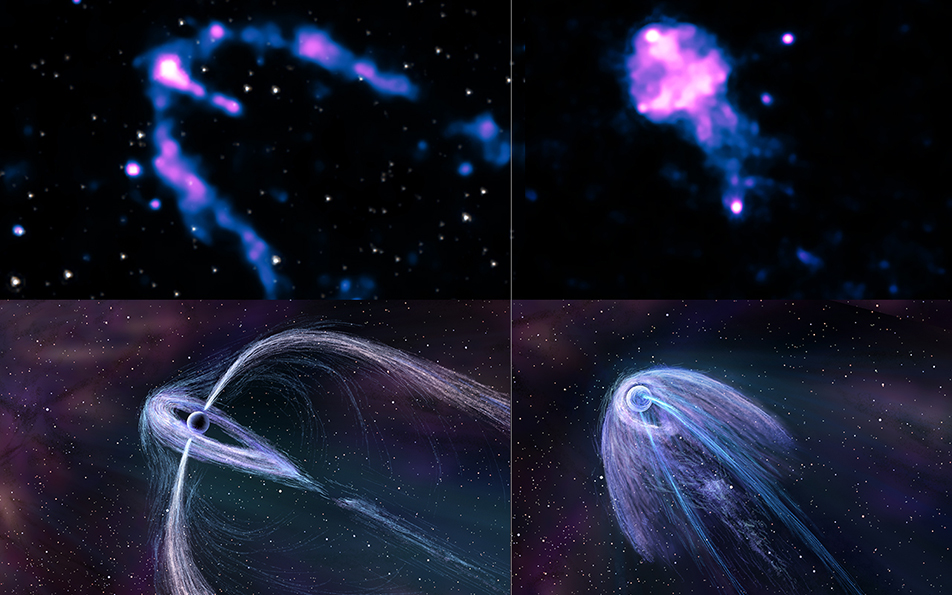 Geminga:
Geminga: Two pulsars about 800 and 3,400 light years from Earth respectively.
[Photo Album]05 Jan 2017

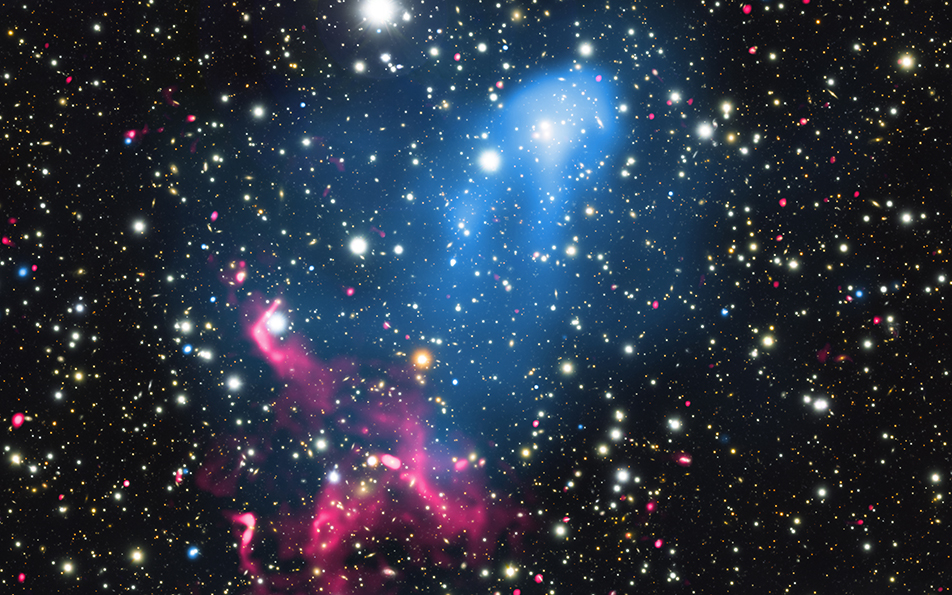 Abell 3411 and 3412:
Abell 3411 and 3412: A pair of colliding galaxy clusters about 2 billion light years away.
[Photo Album]05 Jan 2017

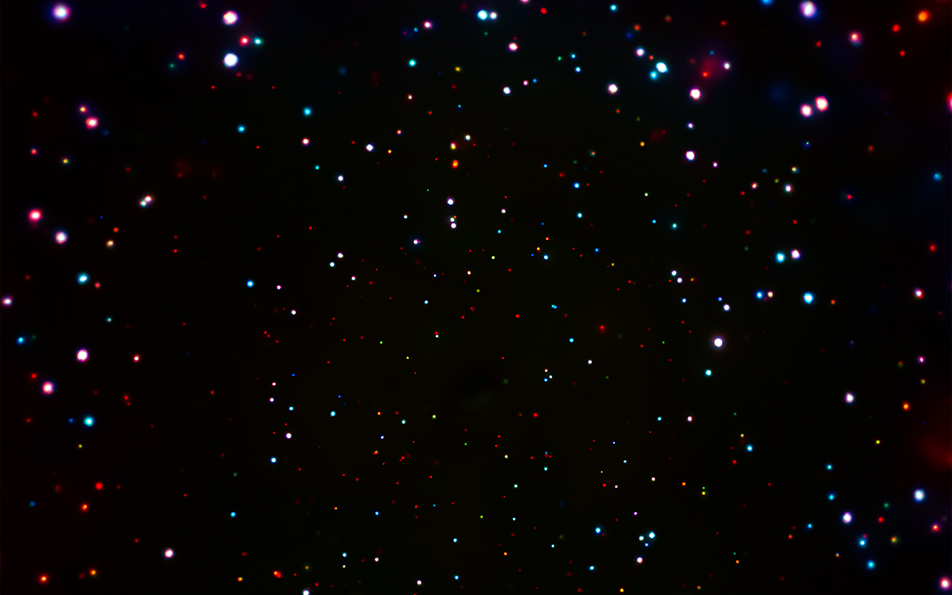 Chandra Deep Field South :
Chandra Deep Field South : An unparalleled image from NASA's Chandra X-ray Observatory gives astronomers the best look yet at the growth of black holes over billions of years beginning soon after the Big Bang.
[Photo Album]19 Dec 2016

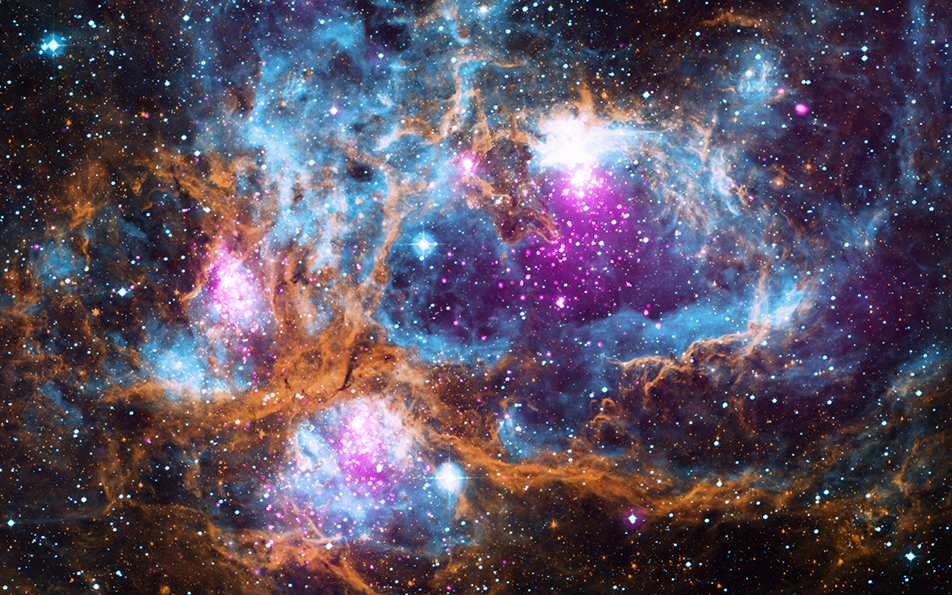 NGC 6357:
NGC 6357: A star formation region about 5,500 light years from Earth.
[Photo Album]08 Dec 2016

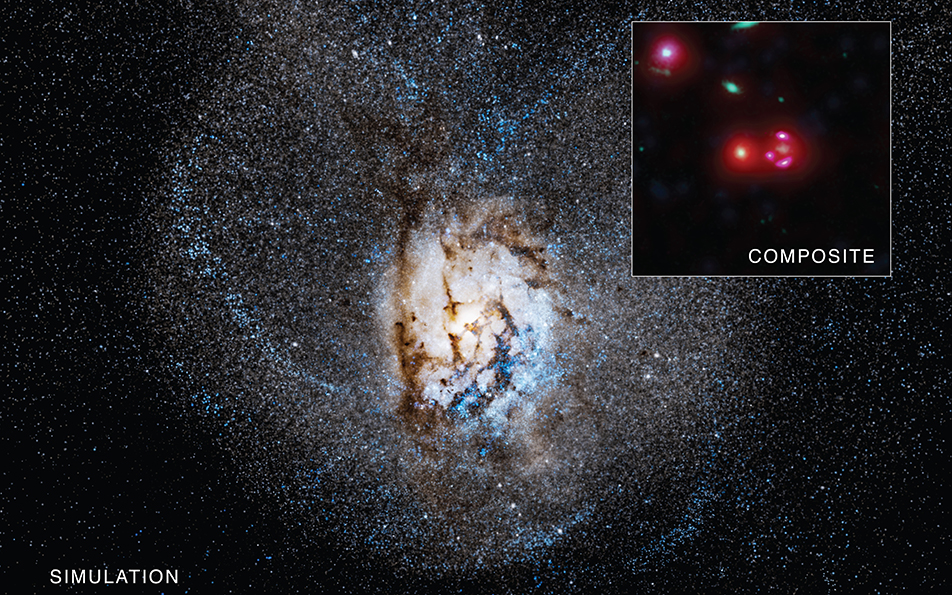 SPT 0346-52:
SPT 0346-52: A galaxy undergoing extreme star formation about 12.7 billion light years from Earth.
[Photo Album]21 Nov 2016

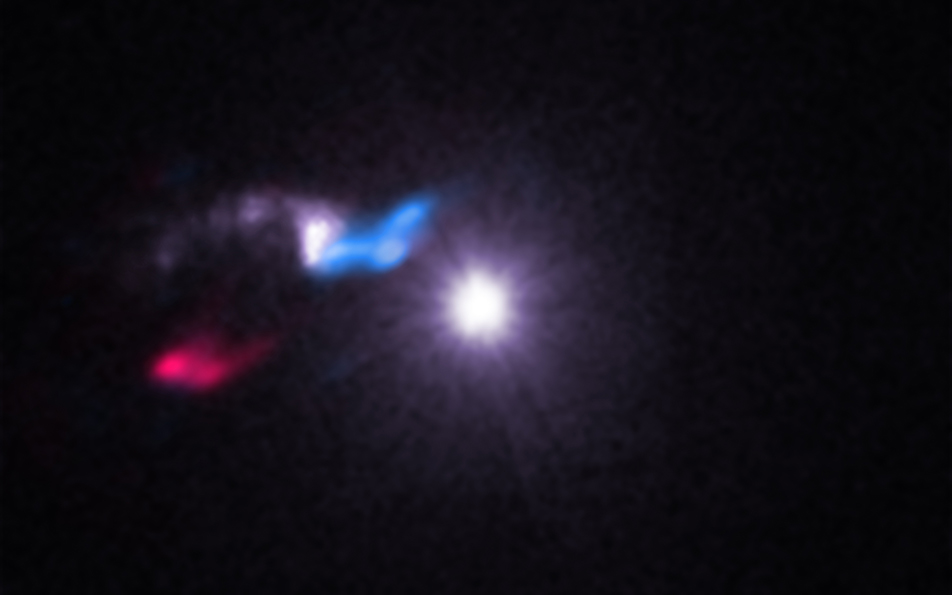 Cyg X-3's Little Friend:
Cyg X-3's Little Friend: A small cloud of dust and gas containing a new star being formed about 20,000 light years from Earth.
[Photo Album]09 Nov 2016

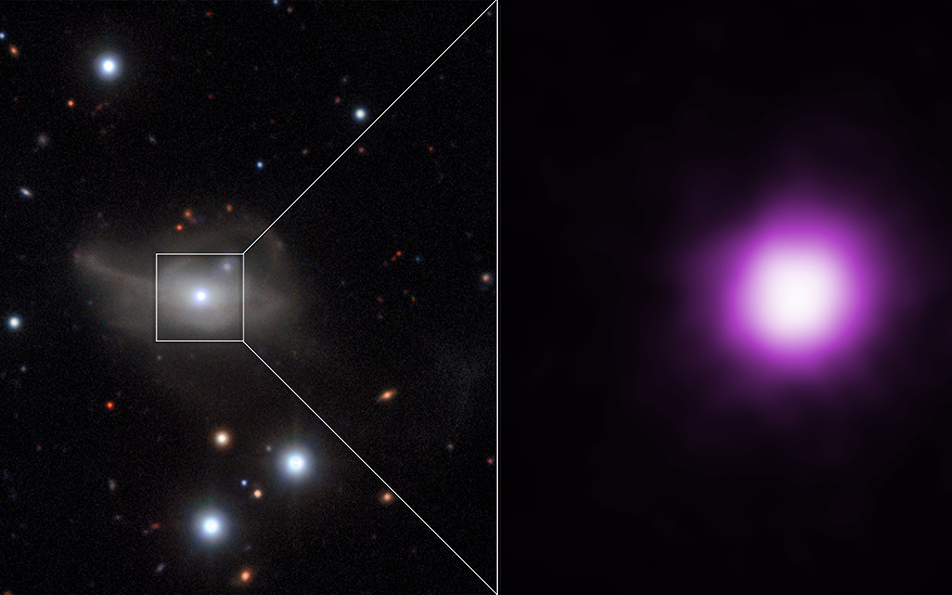 Markarian 1018:
Markarian 1018: An active galaxy located about 590 million light years from Earth.
[Photo Album]19 Oct 2016

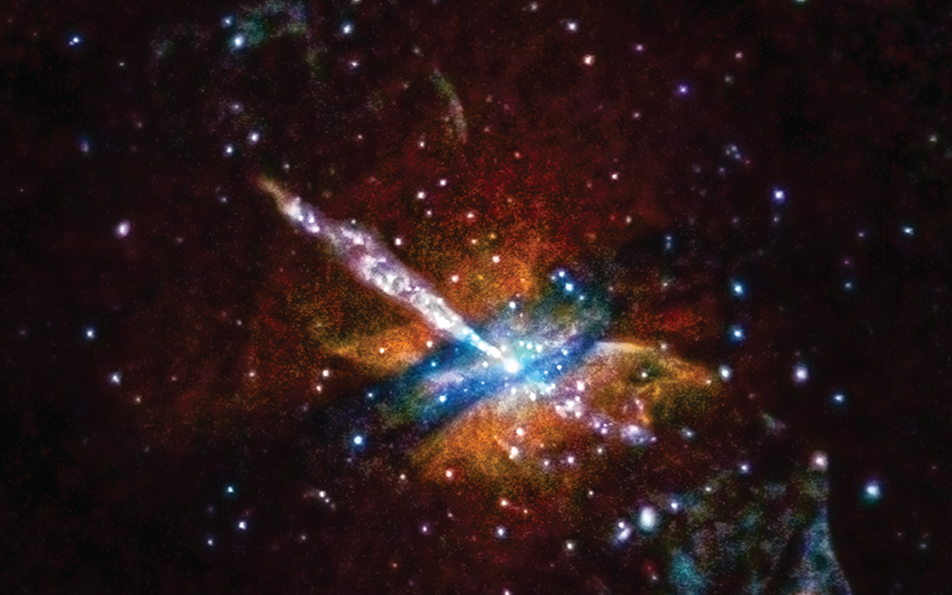 NGC 5128:
NGC 5128: An elliptical galaxy, also known as Centaurus A, located about 12 million light years away.
[Photo Album]14 Oct 2016

 Chandra Archive Collection:
Chandra Archive Collection: Six objects ranging in location from about 20,000 to nearly 3 billion light years away.
[Photo Album]05 Oct 2016

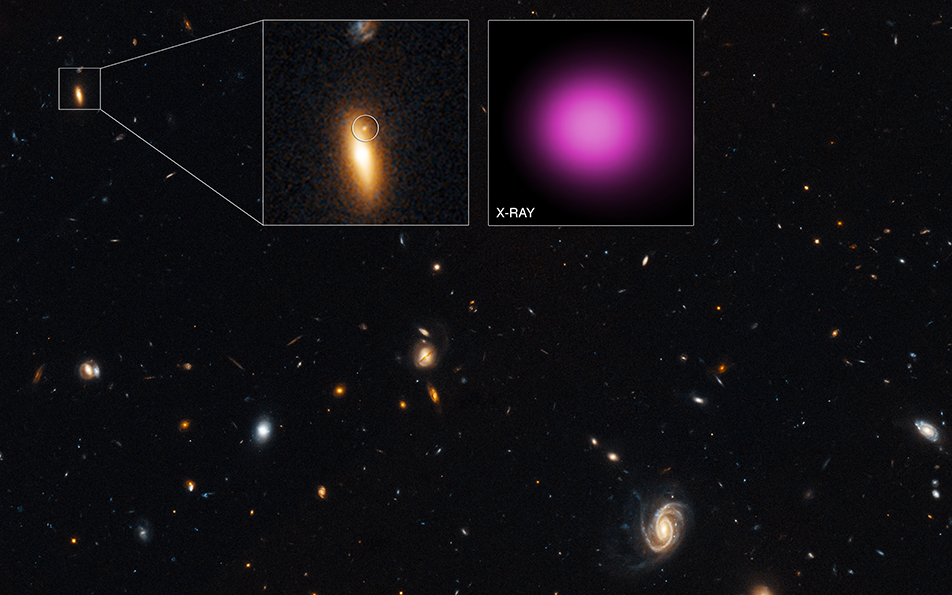 XJ1417+52:
XJ1417+52: A black hole found in the outer regions of a galaxy about 4.5 billion light years from Earth.
[Photo Album]14 Sep 2016

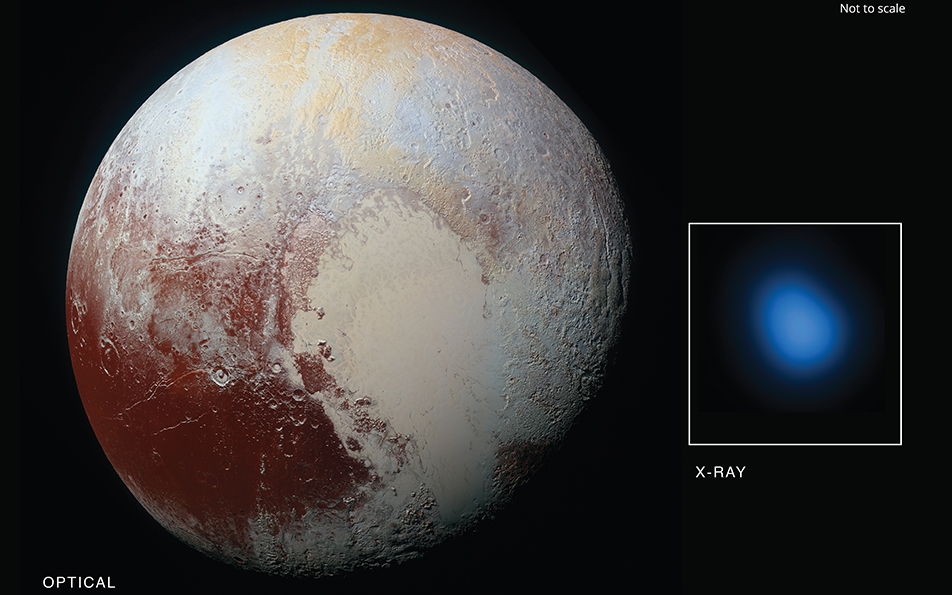 Pluto:
Pluto: A dwarf planet in the outer regions of the Solar System.
[Photo Album]08 Sep 2016

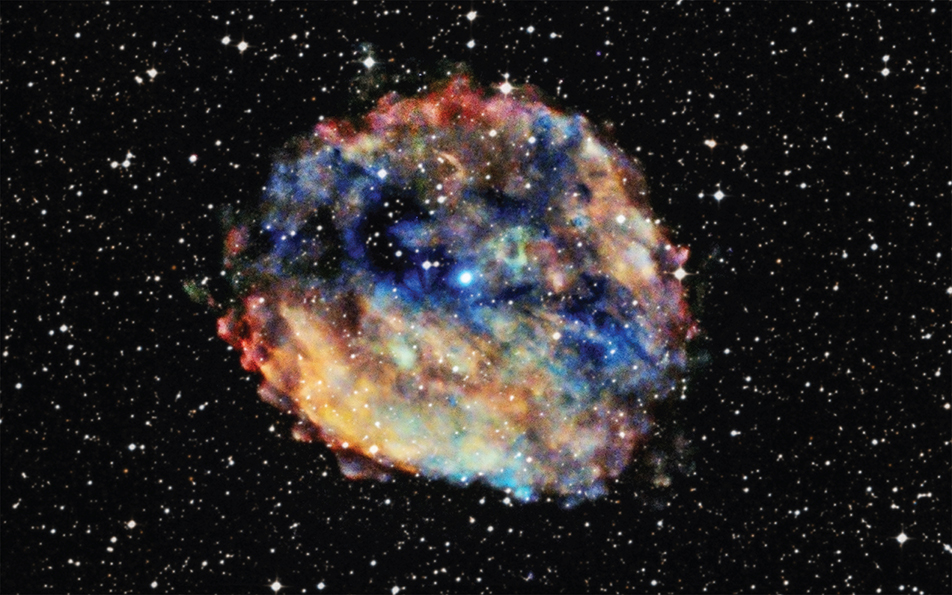 RCW 103:
RCW 103: A neutron star located in the center of the RCW 103 supernova remnant about 10,700 light years from Earth.
[Photo Album]10 Aug 2016

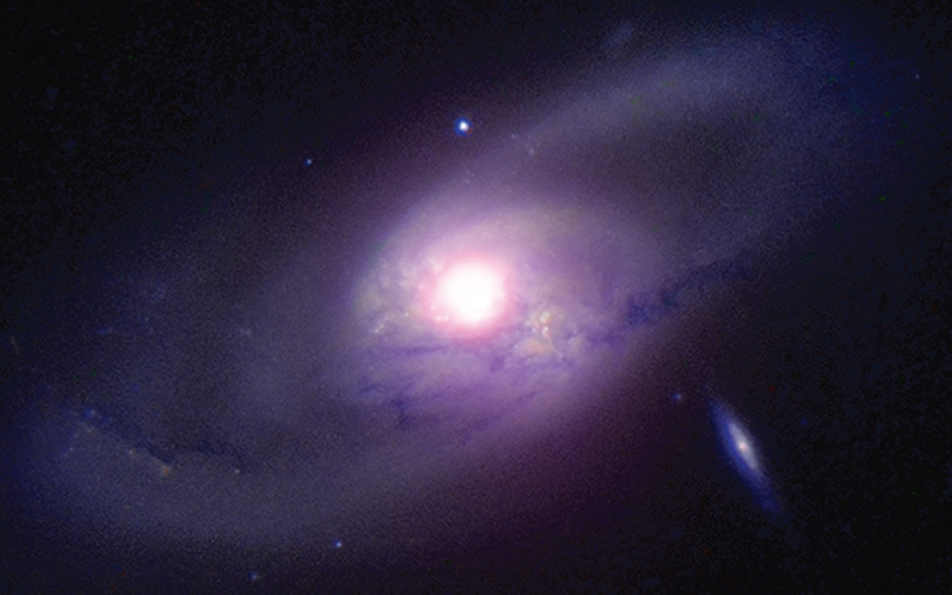 IC 2497:
IC 2497: A galaxy and a cloud of cool gas located about 680 million light years from Earth.
[Photo Album]12 May 2016

 Tycho's Supernova Remnant:
Tycho's Supernova Remnant: A supernova remnant located about 10,000 light years from Earth.
[Photo Album]28 Apr 2016

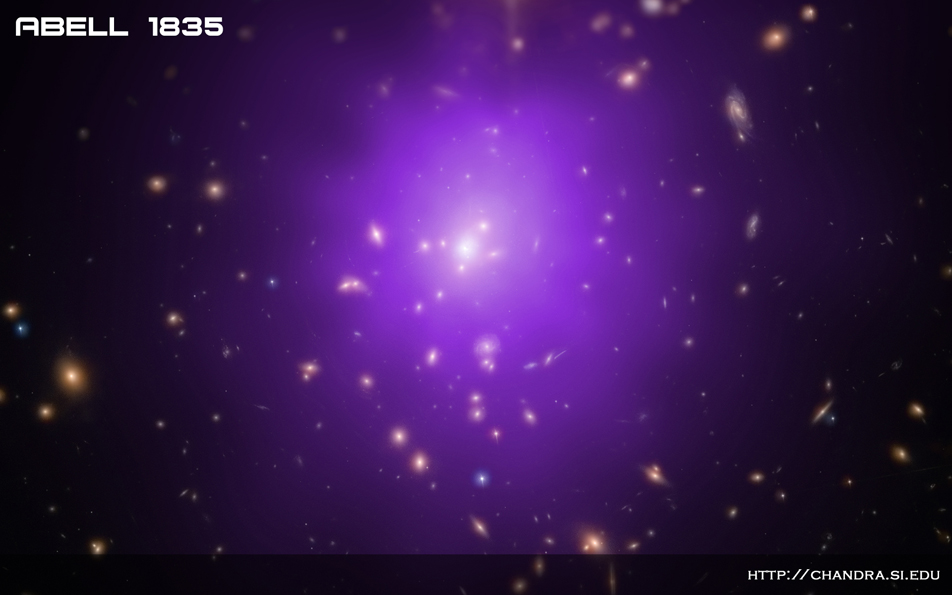 Abell 1835:
Abell 1835: From a sample of over 300 galaxy clusters used to study dark energy.
[Photo Album]18 Apr 2016

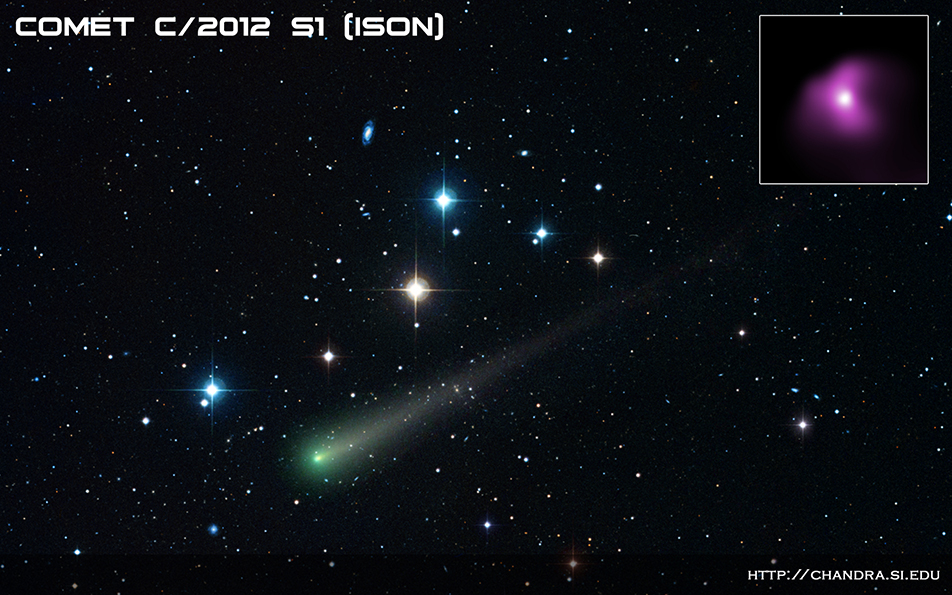 Comet ISON:
Comet ISON: Two comets observed in 2013 when both were relatively close to Earth, about 90 million and 130 million miles for Comets ISON and PanSTARRS respectively.
[Photo Album]30 Mar 2016

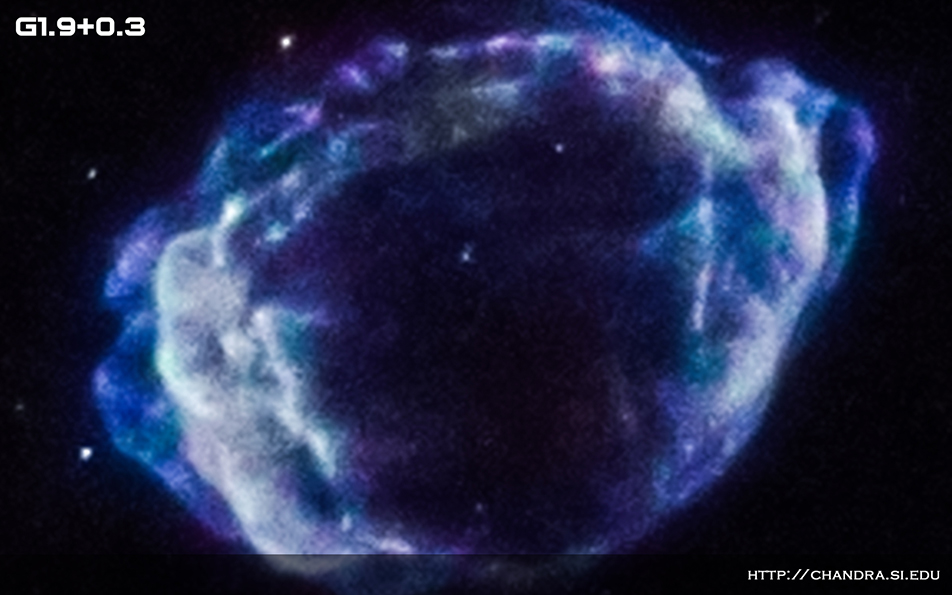 G1.9+0.3:
G1.9+0.3: A supernova remnant located about 28,000 light years from Earth.
[Photo Album]10 Mar 2016

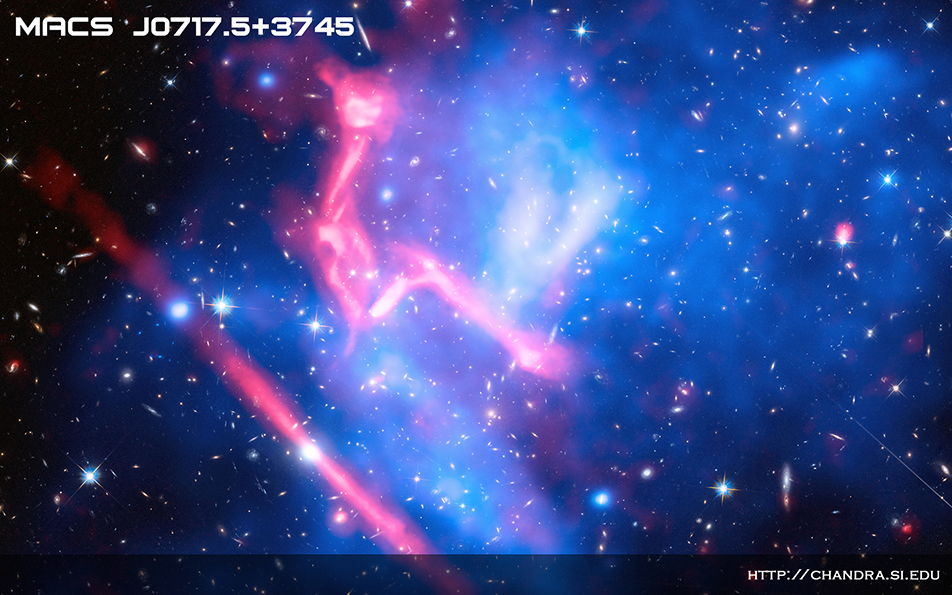 MACS J0416.1-2403:
MACS J0416.1-2403: Two galaxy clusters located about 4.3 billion and 5.4 billion light years away respectively.
[Photo Album]02 Feb 2016

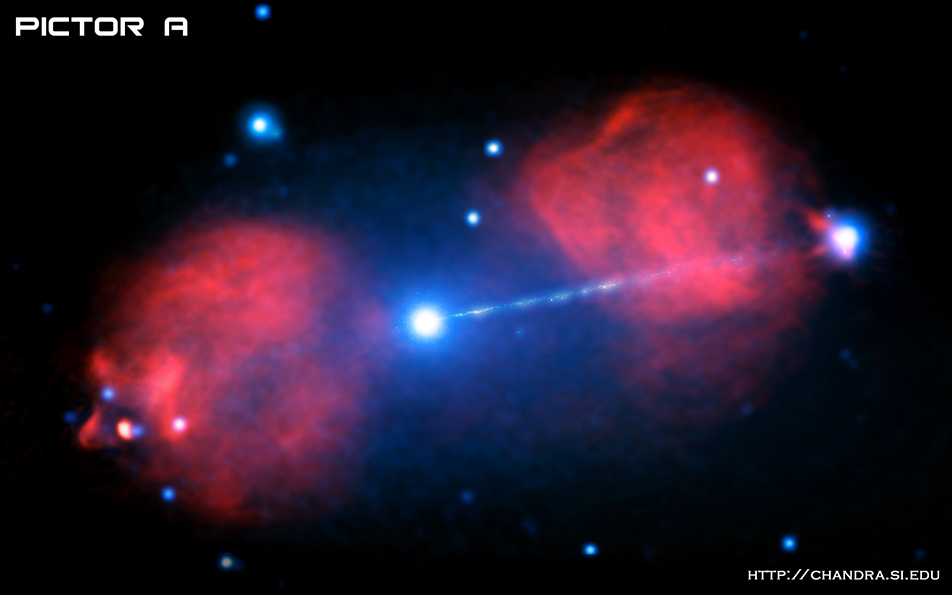 Pictor A:
Pictor A: A galaxy with an extensive jet located about 500 million light years from Earth.
[Photo Album]05 Jan 2016

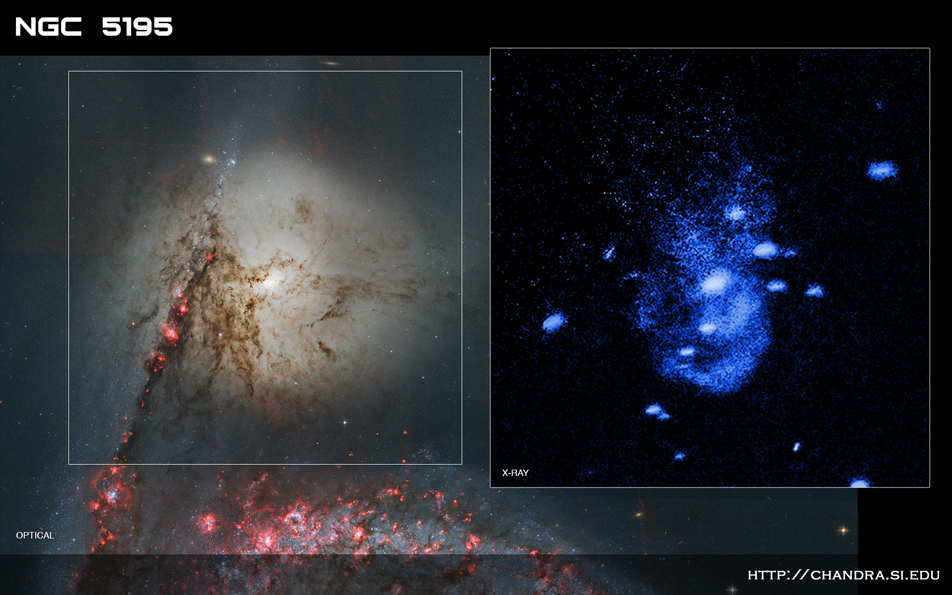 NGC 5195:
NGC 5195: A small galaxy merging with a larger spiral galaxy about 26 million light years from Earth.
[Photo Album]21 Dec 2015

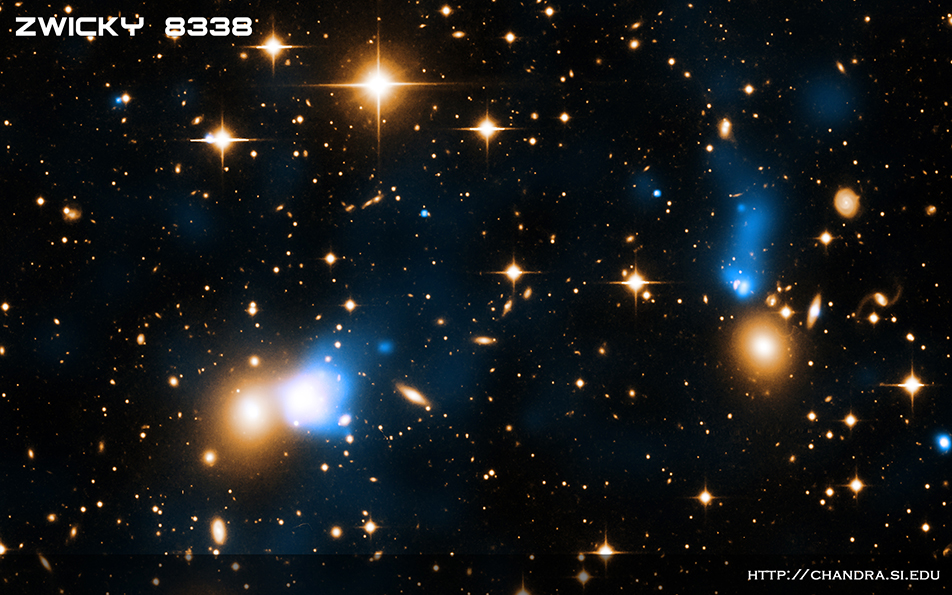 Zwicky 8338:
Zwicky 8338: A galaxy cluster located almost 700 million light years from Earth.
[Photo Album]10 Dec 2015

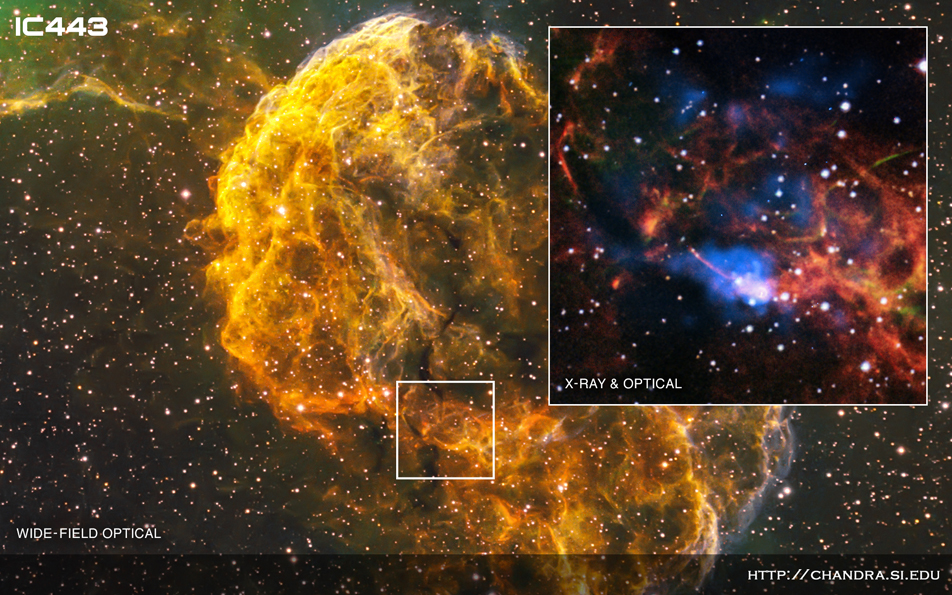 IC 443:
IC 443: A supernova remnant nicknamed the "Jellyfish Nebula" located about 5,000 light years from Earth.
[Photo Album]23 Nov 2015

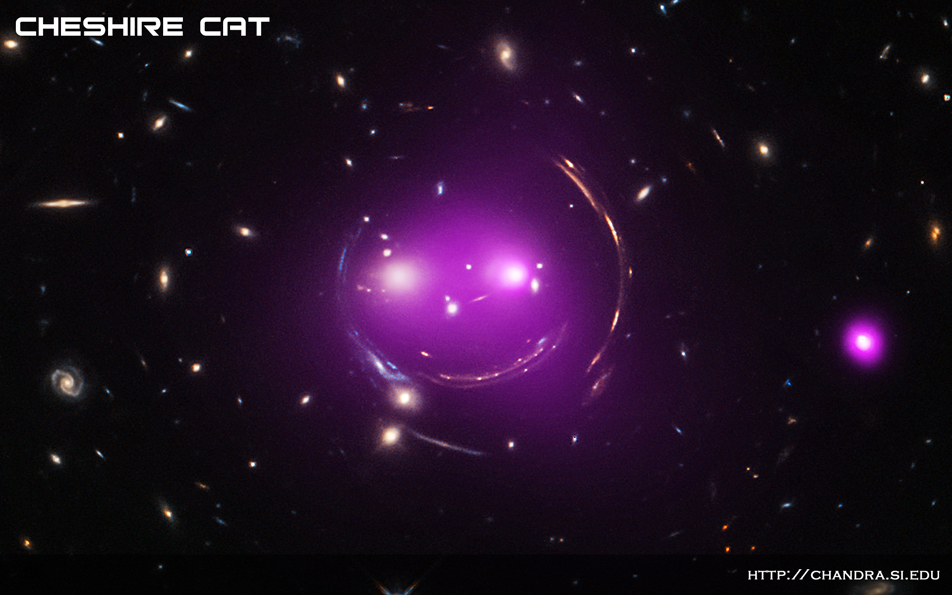 SDSS J103842.59+484917.7:
SDSS J103842.59+484917.7: A group of galaxies nicknamed the "Cheshire Cat" about 4.6 billion light years from Earth.
[Photo Album]30 Sep 2015

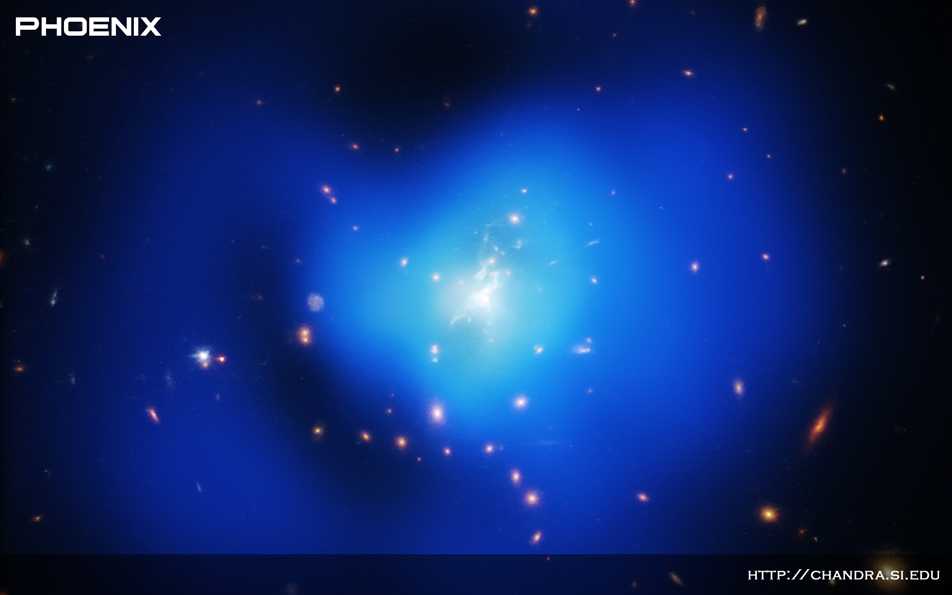 Phoenix Cluster:
Phoenix Cluster: A galaxy cluster nicknamed the "Phoenix Cluster" located about 5.7 billion light years from Earth.
[Photo Album]26 Aug 2015

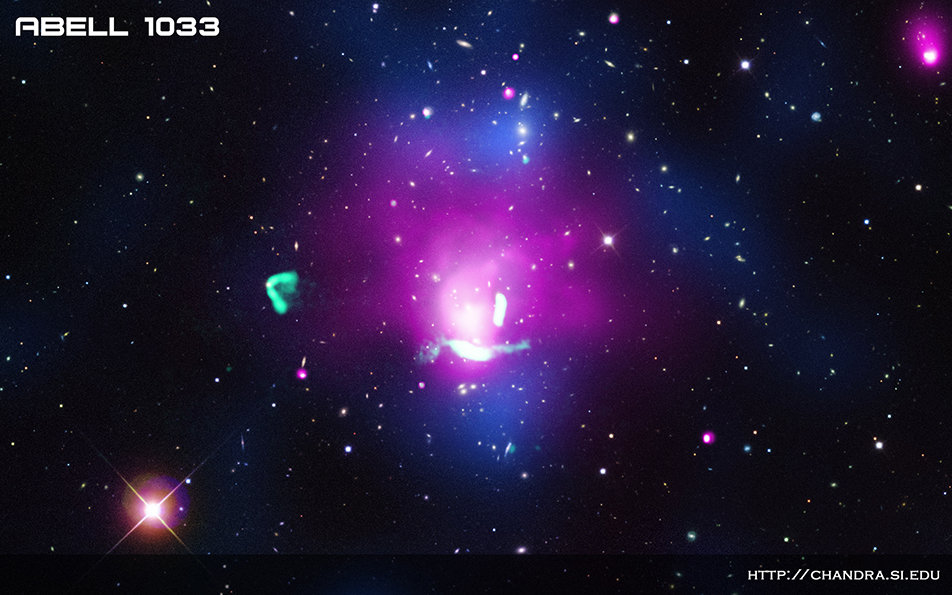 Abell 1033:
Abell 1033: A collision of two galaxy clusters located about 1.6 billion light years from Earth.
[Photo Album]02 Jul 2015

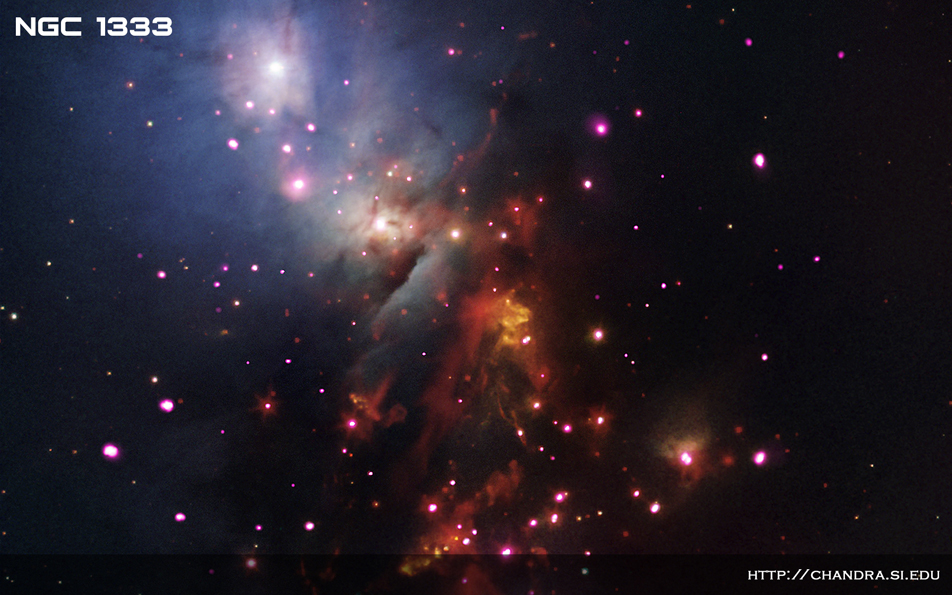 NGC 1333:
NGC 1333: While fireworks only last a short time here on Earth, a bundle of cosmic sparklers in a nearby cluster of stars will be going off for a very long time.
[Photo Album]10 Jun 2015

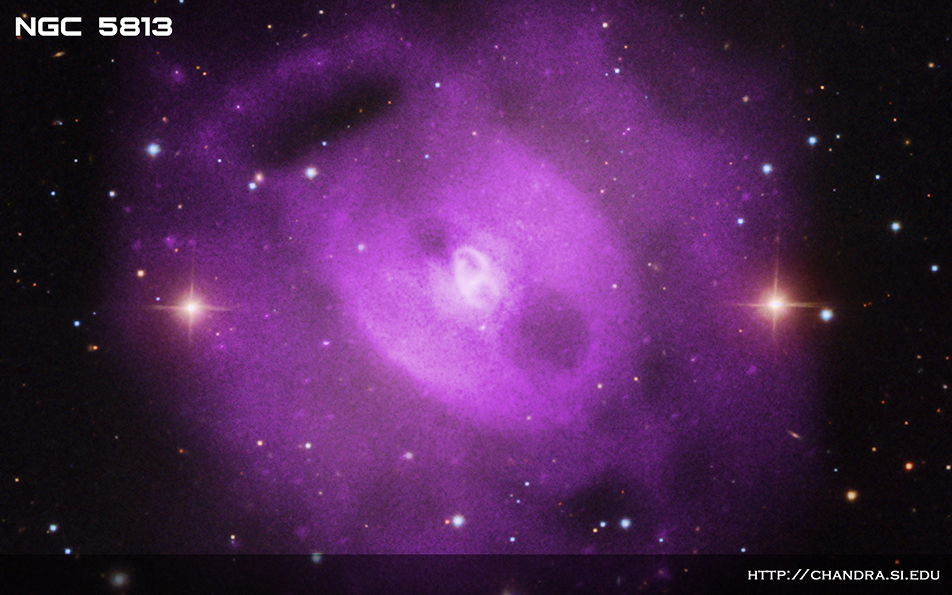 NGC 5813:
NGC 5813: Astronomers have used NASA's Chandra X-ray Observatory to show that multiple eruptions from a supermassive black hole over 50 million years have rearranged the cosmic landscape at the center of a group of galaxies.
[Photo Album]16 Apr 2015

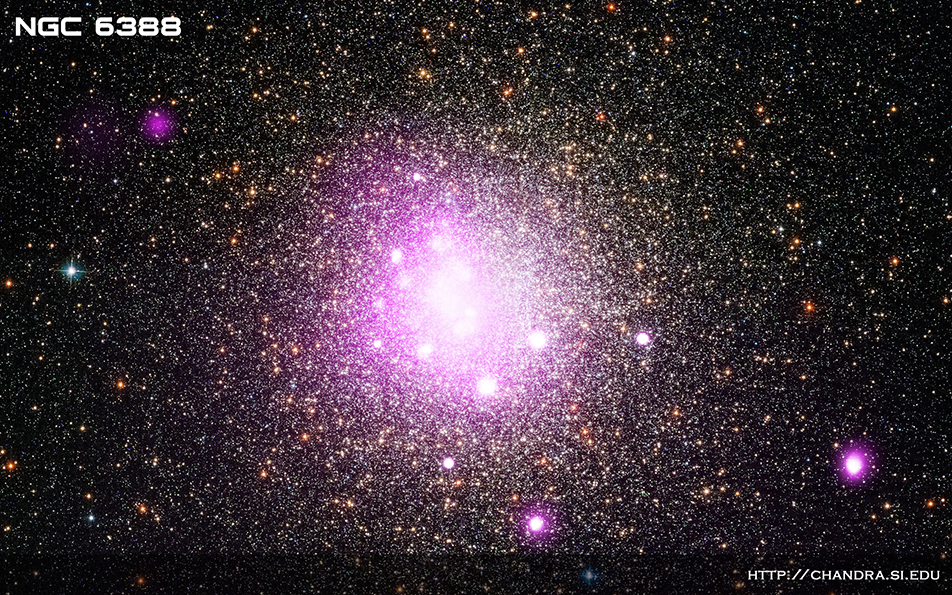 NGC 6388:
NGC 6388: The destruction of a planet may sound like the stuff of science fiction, but a team of astronomers has found evidence that this may have happened in an ancient cluster of stars at the edge of the Milky Way galaxy.
[Photo Album]26 Mar 2015

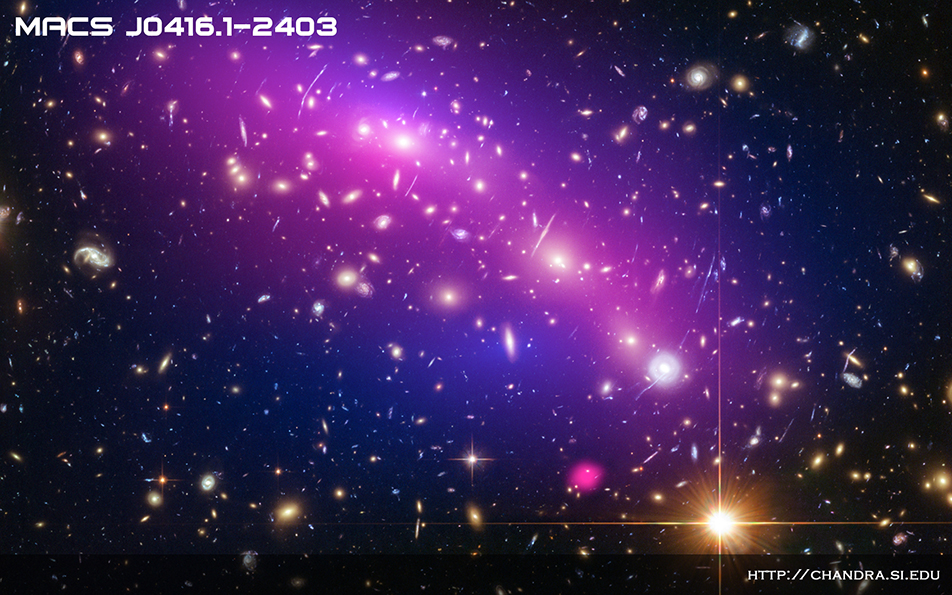 MACS J0416.1-2403:
MACS J0416.1-2403: Astronomers have found that dark matter does not slow down when colliding with itself, meaning it interacts with itself less than previously thought.
[Photo Album]16 Mar 2015

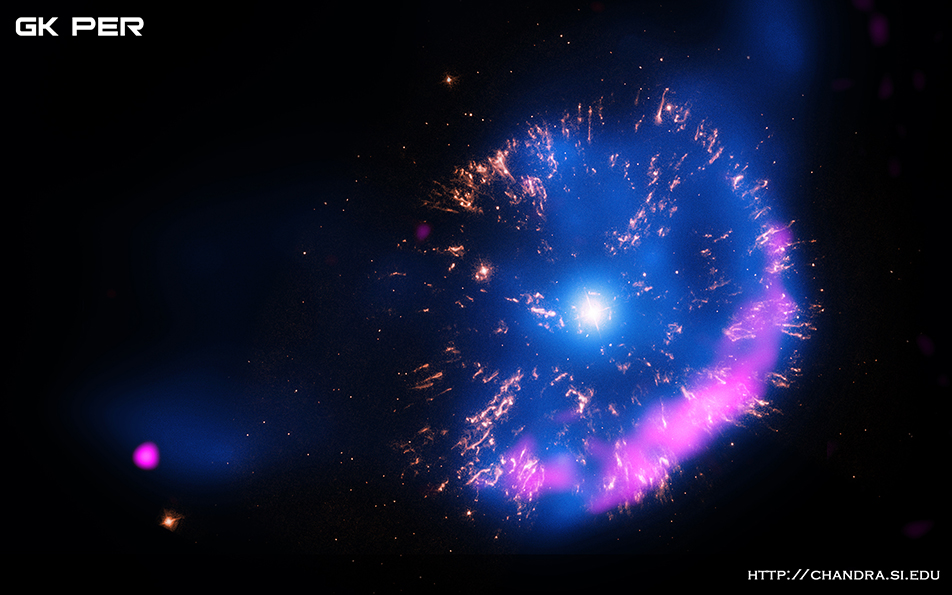 GK Persei:
GK Persei: A stellar explosion, called a nova, which is about 1,500 light years from Earth.
[Photo Album]12 Feb 2015

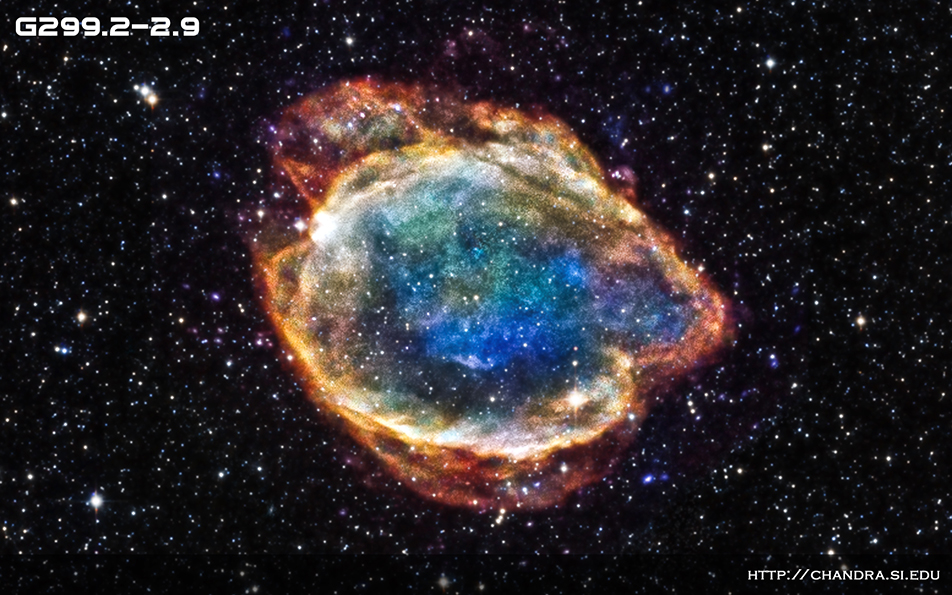 G299.2-2.9:
G299.2-2.9: A supernova remnant in the Milky Way about 16,000 light years from Earth.
[Photo Album]11 Dec 2014

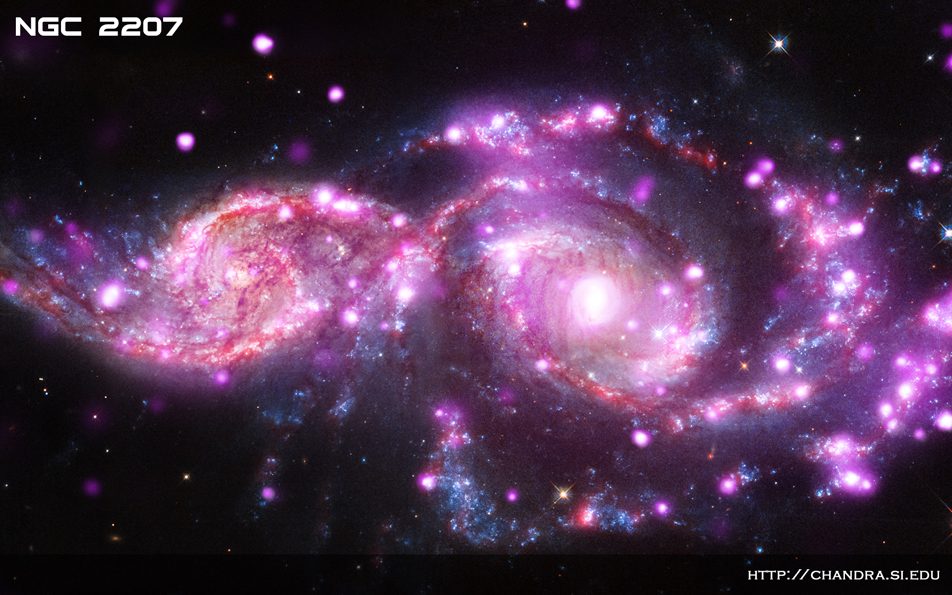 NGC 2207:
NGC 2207: NGC 2207 and IC 2163 are two spiral galaxies in the process of merging.
[Photo Album]13 Nov 2014

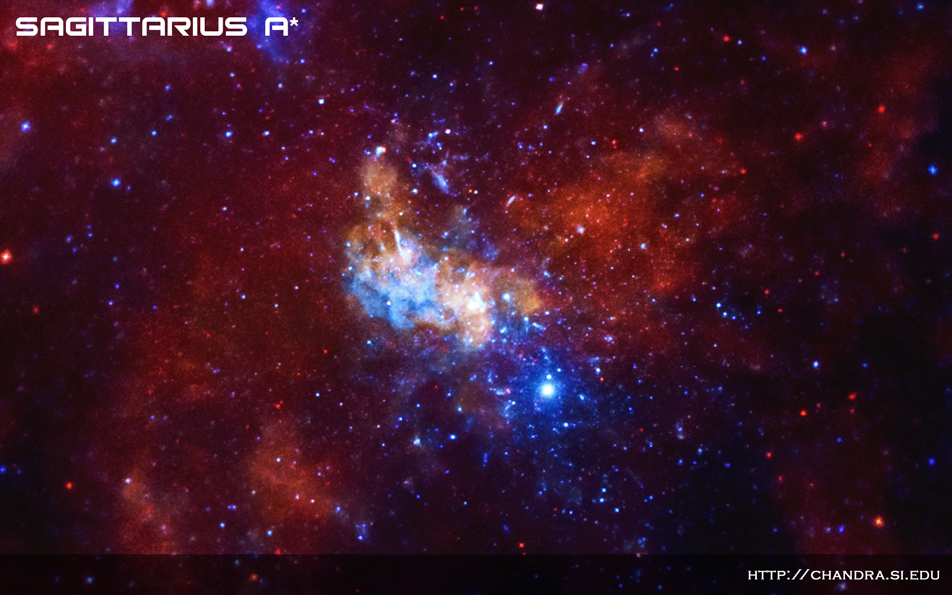 Sagittarius A*:
Sagittarius A*: The giant black hole at the center of the Milky Way may be producing mysterious particles called neutrinos. If confirmed, this would be the first time that scientists have traced neutrinos back to a black hole.
[Photo Album]08 Oct 2014

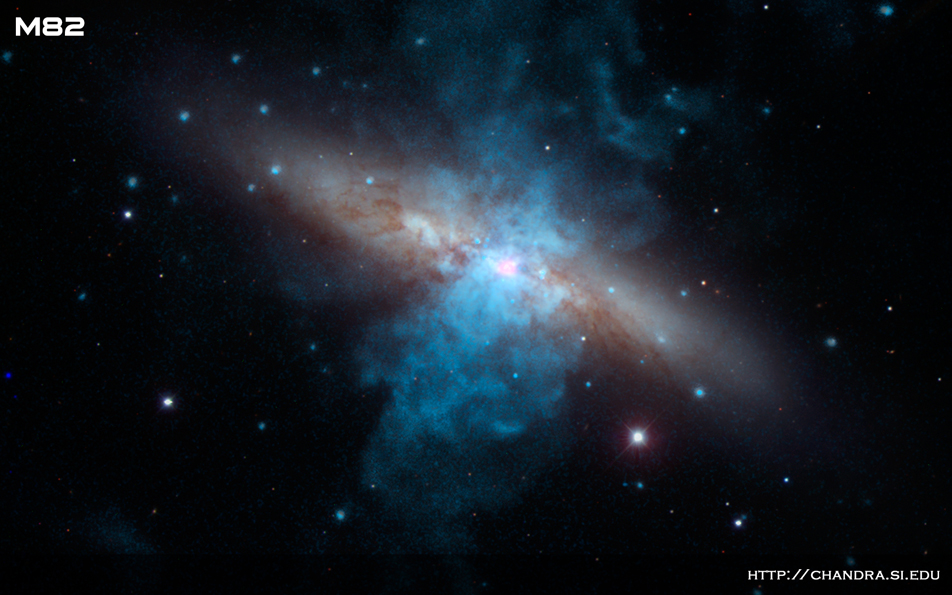 M82X-2:
M82X-2: A source with unusual pulsations in the M82 galaxy about 11.4 million light years from Earth.
[Photo Album]10 Sep 2014

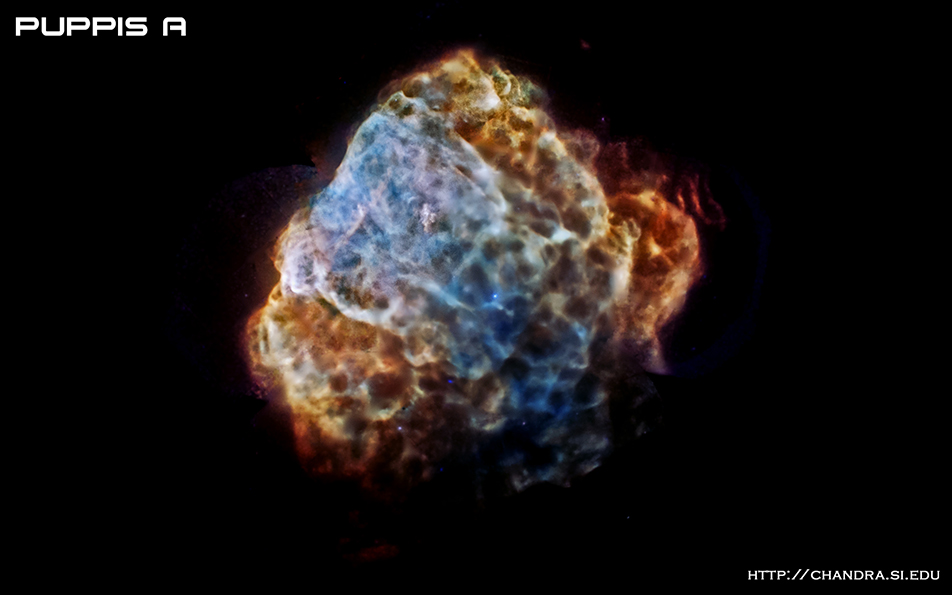 Puppis A:
Puppis A: A supernova remnant located about 7,000 light years from Earth.
[Photo Album]14 Aug 2014

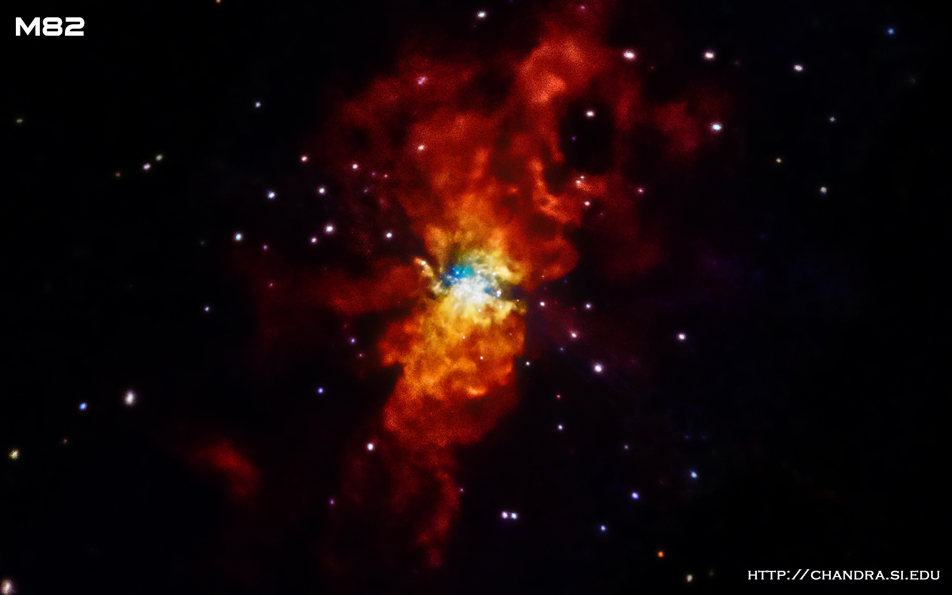 M82 SN2014J:
M82 SN2014J: SN 2014J is a Type Ia supernova, an important class of objects used to measure the expansion of the Universe.
[Photo Album]22 Jul 2014

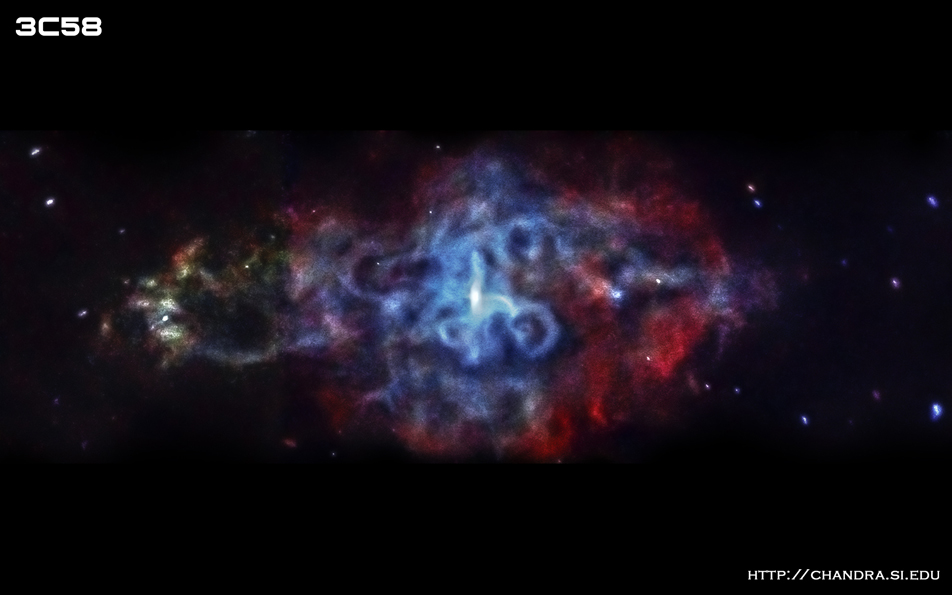 3C 58:
3C 58: Four newly processed images of supernova remnants have been released.
[Photo Album]02 Jul 2014

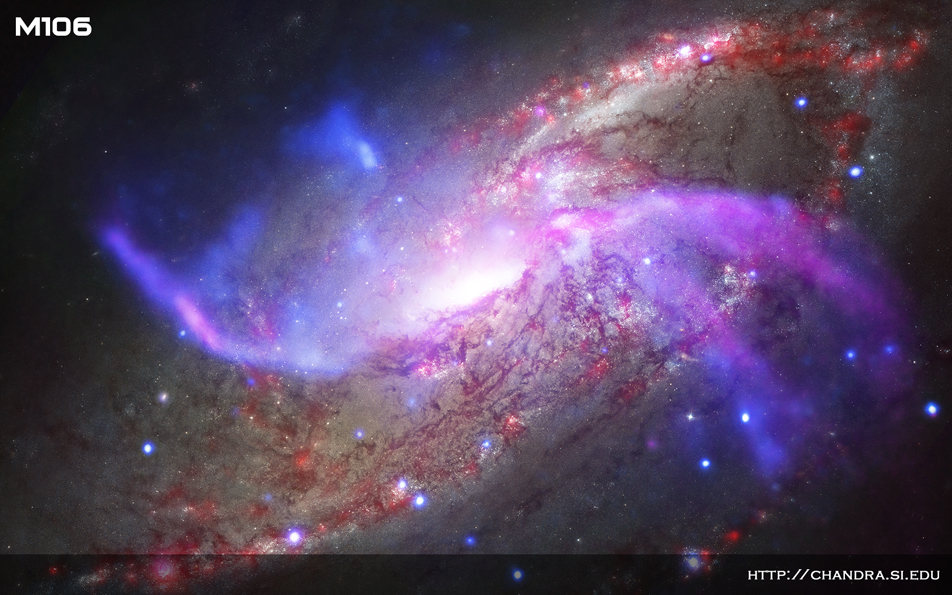 NGC 4258 (M106):
NGC 4258 (M106): A spiral galaxy, also known as M106, about 23 million light years from Earth.
[Photo Album]24 Jun 2014

 Perseus Cluster:
Perseus Cluster: A giant collection of galaxies immersed in hot gas about 250 million light years from Earth.
[Photo Album]03 Jun 2014

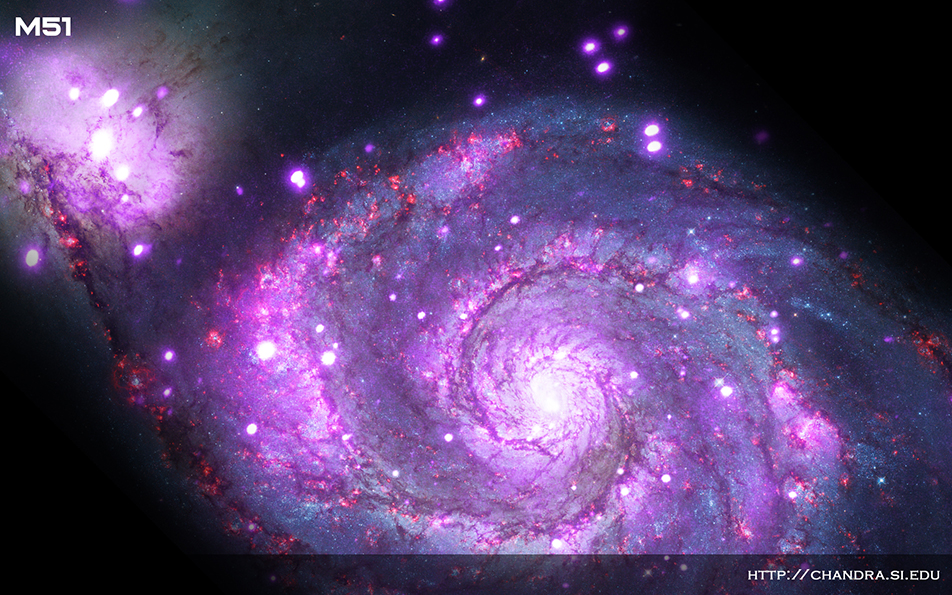 Whirlpool Galaxy:
Whirlpool Galaxy: Nearly a million seconds of observing time with NASA's Chandra X-ray Observatory has revealed a spiral galaxy similar to the Milky Way glittering with hundreds of X-ray points of light.
[Photo Album]07 May 2014

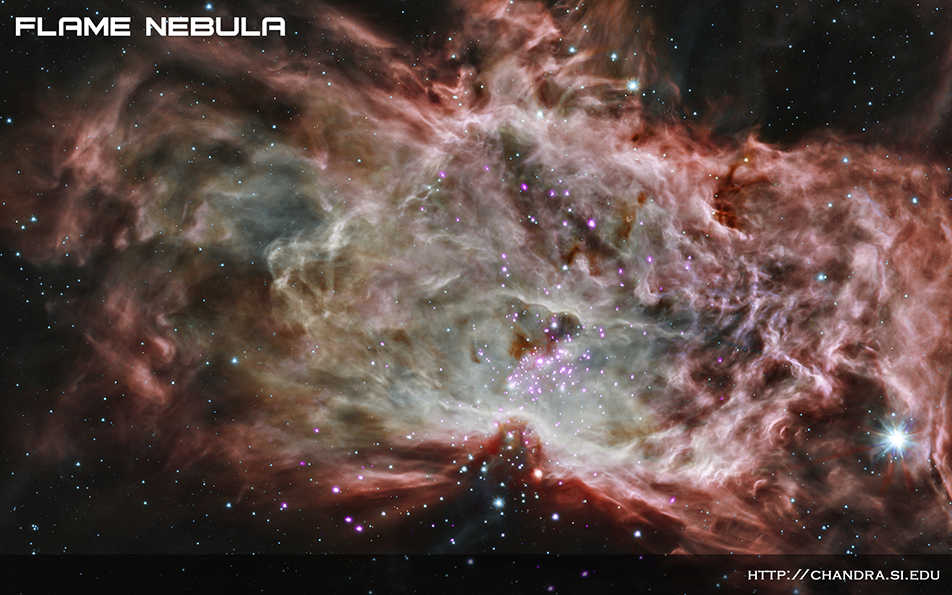 Flame Nebula:
Flame Nebula: Using data from NASA's Chandra X-ray Observatory and infrared telescopes, astronomers have made an important advance in the understanding of how clusters of stars come into being.
[Photo Album]23 Apr 2014

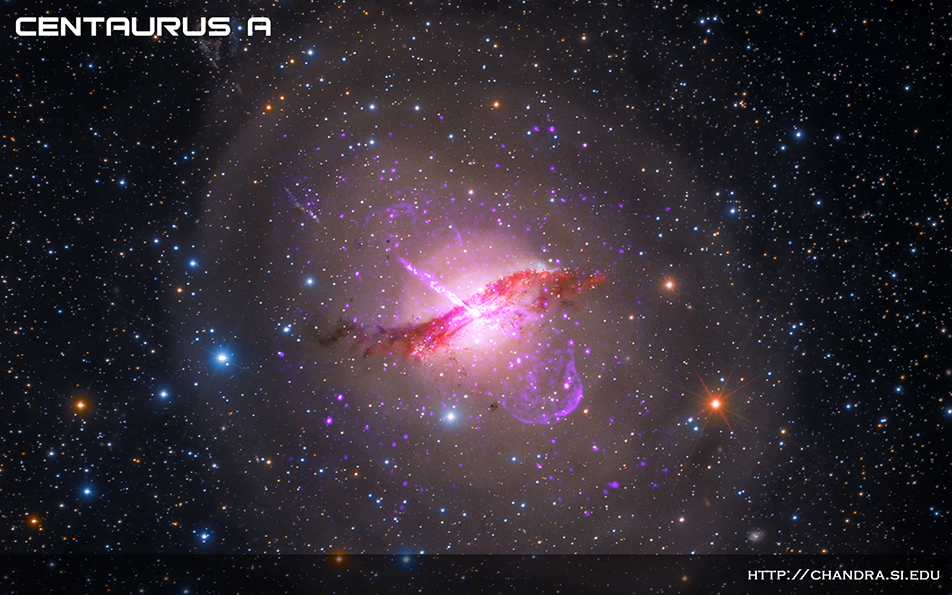 M101:
M101: Four images of galaxies that have been made using data from both amateur and professional telescopes.
[Photo Album]10 Apr 2014

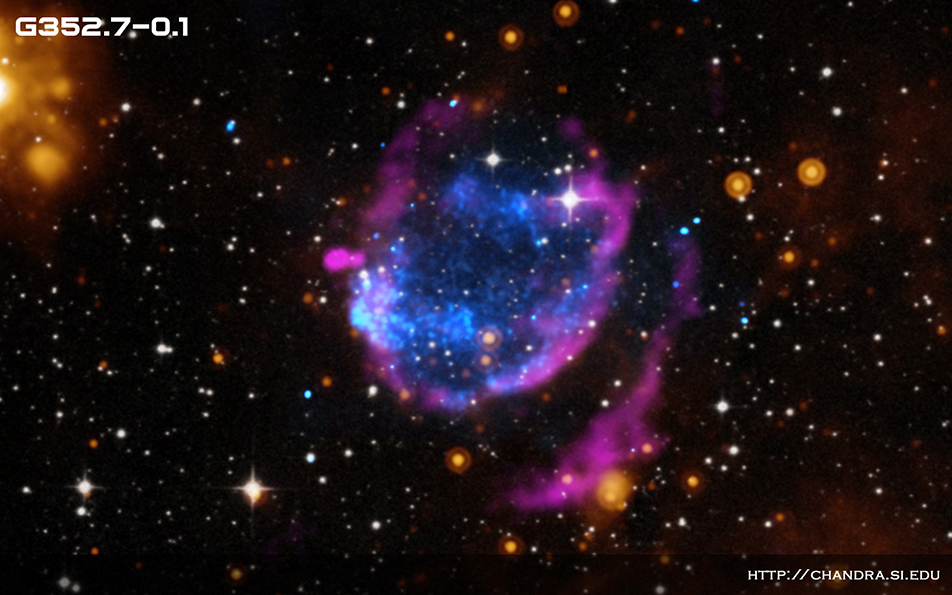 G352.7-0.1:
G352.7-0.1: Supernovas are the spectacular ends to the lives of many massive stars. These explosions can produce enormous amounts of energy and be as bright as an entire galaxy.
[Photo Album]03 Apr 2014

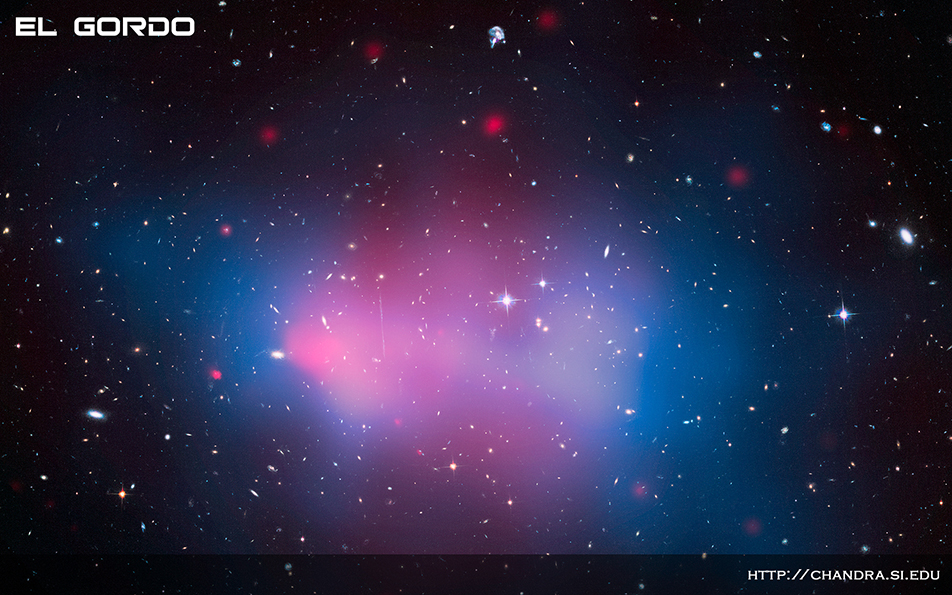 El Gordo:
El Gordo: This is a composite image of X-rays from Chandra and optical data from Hubble of the galaxy cluster ACT-CL J0102-4915, located about 7 billion light years from Earth.
[Photo Album]20 Mar 2014

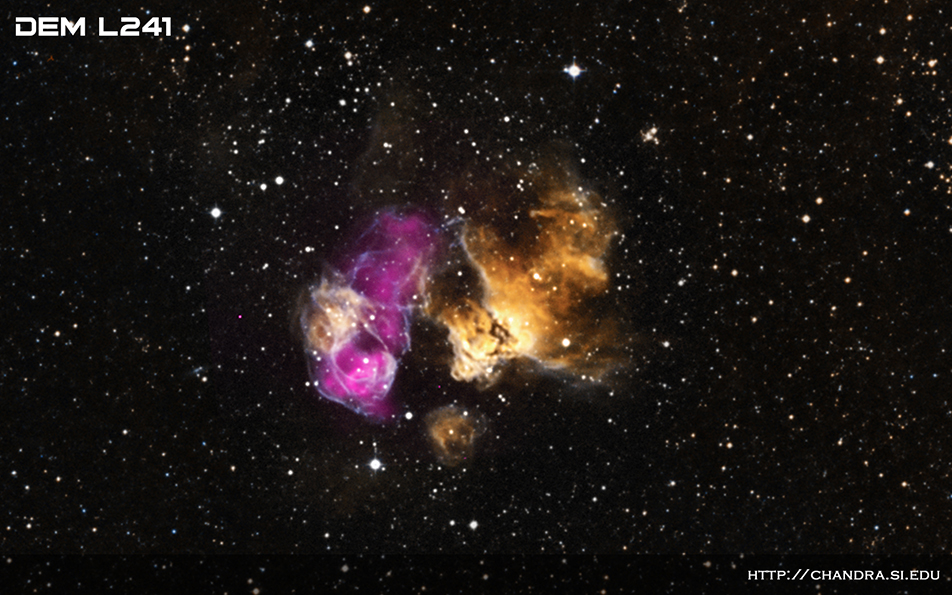 DEM L241:
DEM L241: When a massive star runs out fuel, it collapses and explodes as a supernova. Although these explosions are extremely powerful, it is possible for a companion star to endure the blast.
[Photo Album]05 Mar 2014

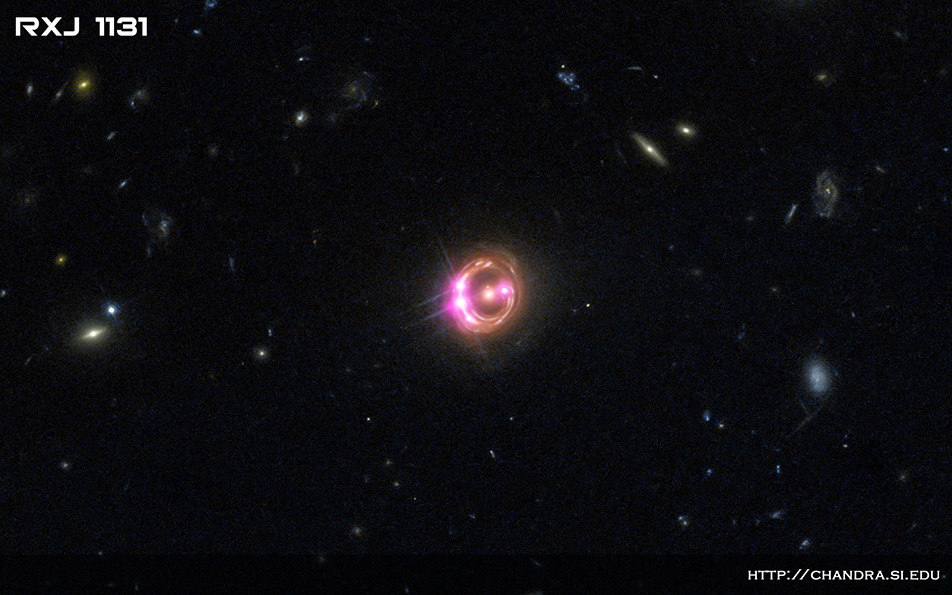 RX J1131-1231:
RX J1131-1231: A quasar located about 6 billion light years from Earth.
[Photo Album]04 Mar 2014

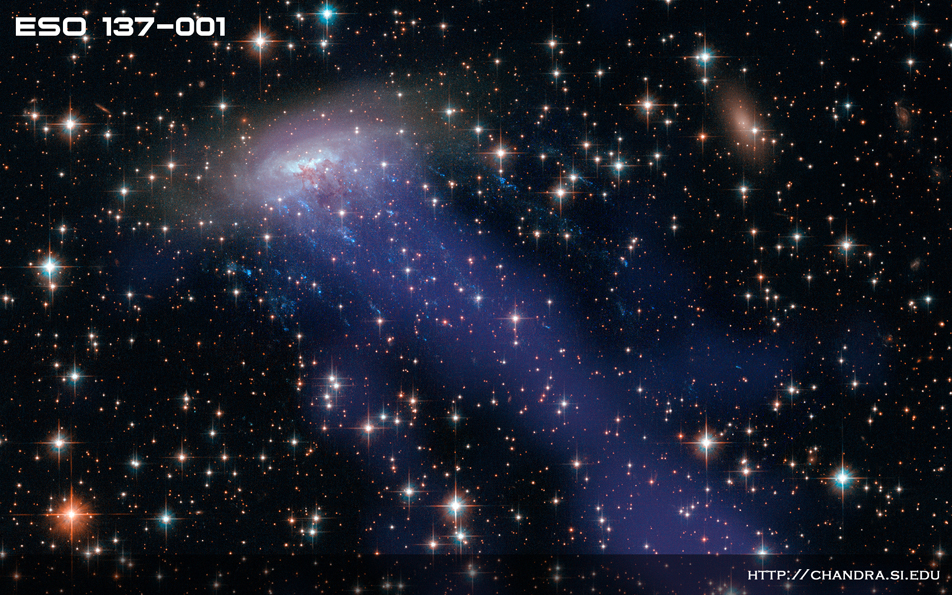 ESO 137-001:
ESO 137-001: The spiral galaxy ESO 137-001 looks like a dandelion caught in a breeze in this new composite image from the Hubble Space Telescope and the Chandra X-ray Observatory.
[Photo Album]18 Feb 2014

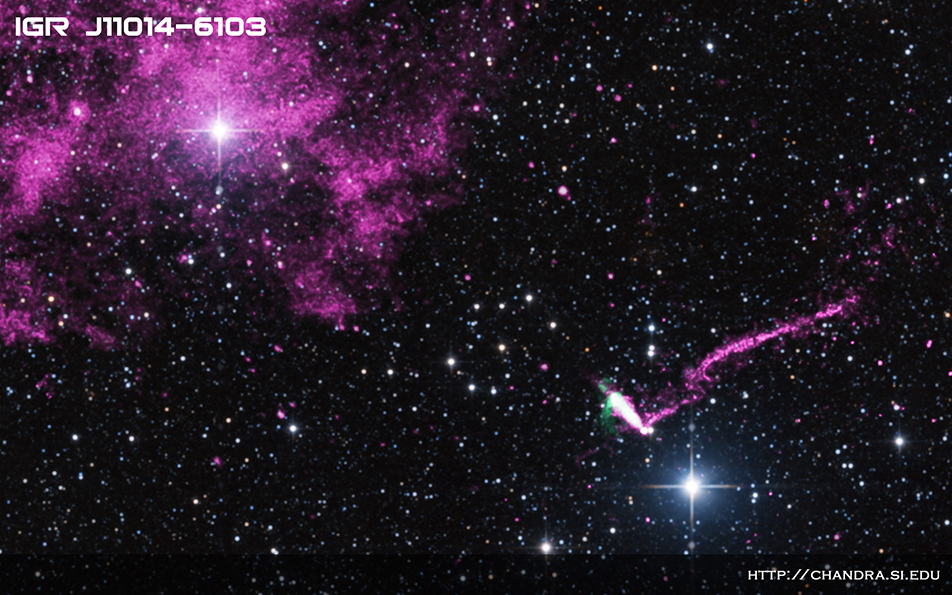 IGR J11014-6103:
IGR J11014-6103: NASA's Chandra X-ray Observatory has seen a fast-moving pulsar escaping from a supernova remnant while spewing out a record-breaking jet - the longest of any object in the Milky Way galaxy -- of high-energy particles.
[Photo Album]06 Feb 2014

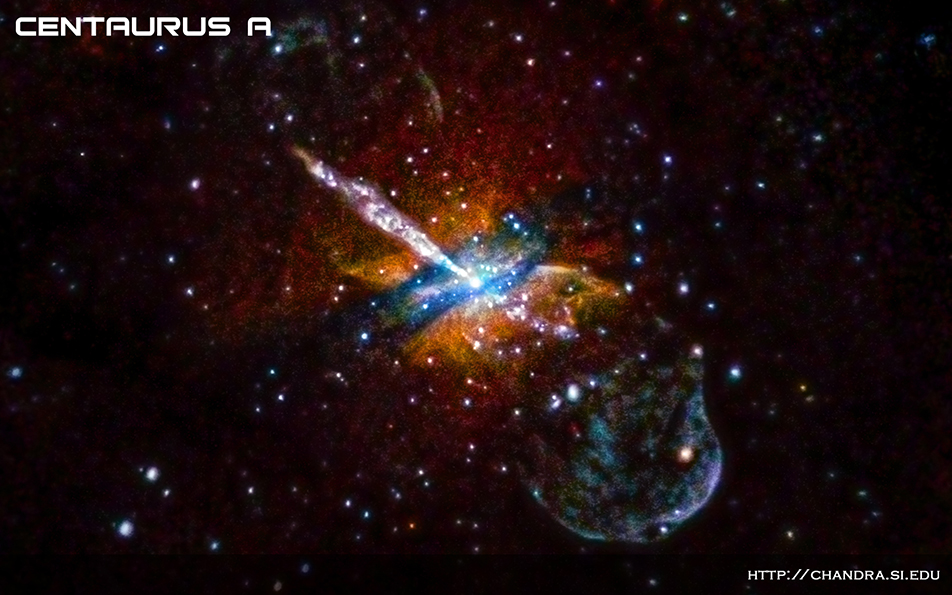 Centaurus A:
Centaurus A: This galaxy, at a distance of about 12 million light years from Earth, contains a gargantuan jet blasting away from a central supermassive black hole.
[Photo Album]23 Jan 2014

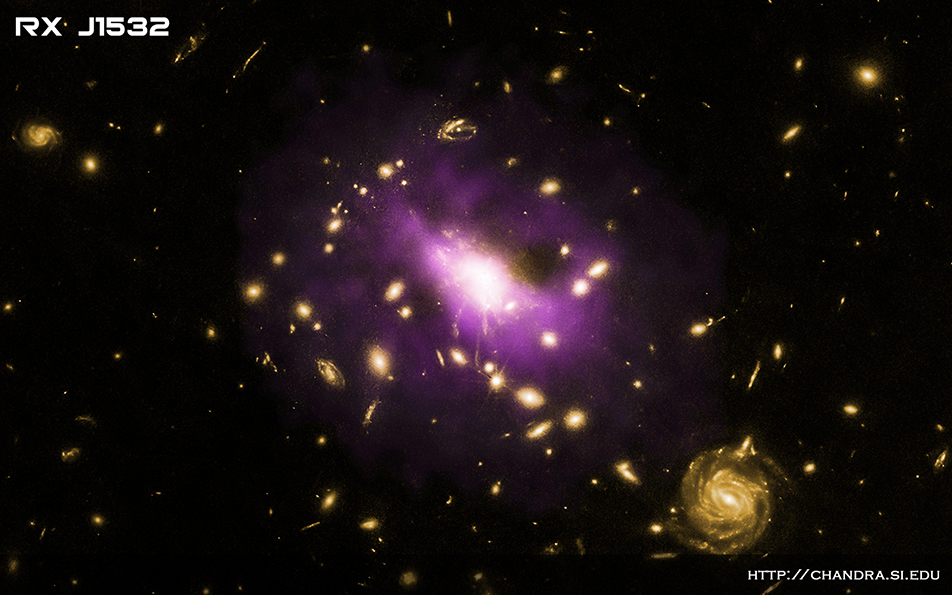 RX J1532.9+3021:
RX J1532.9+3021: The black hole is in a galaxy cluster located about 3.9 billion light years from Earth.
[Photo Album]08 Jan 2014

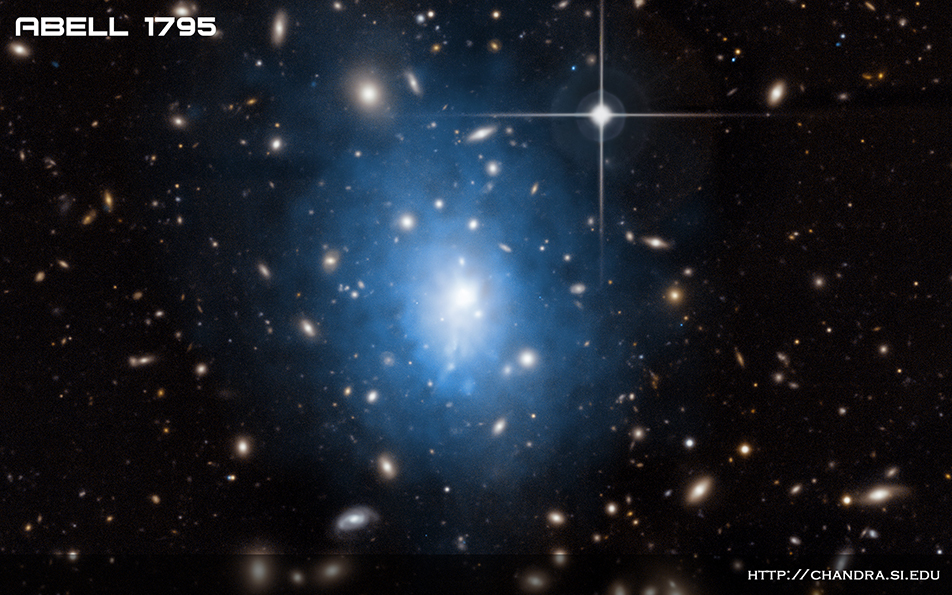 Abell 1795:
Abell 1795: A bright, long duration flare may be the first recorded event of a black hole destroying a star in a dwarf galaxy.
[Photo Album]04 Dec 2013

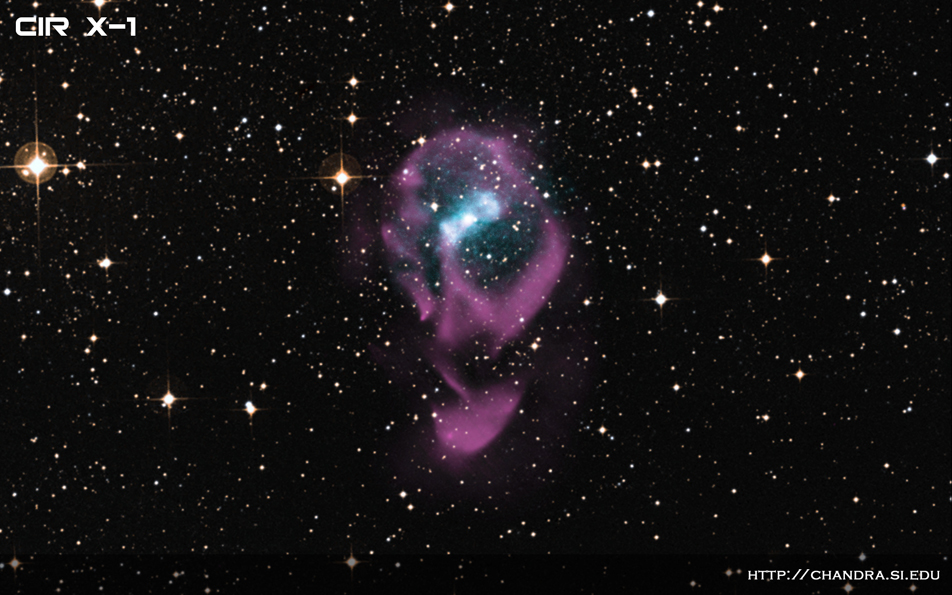 Circinus X-1:
Circinus X-1: A neutron star and normal star binary pair about 26,000 light years away in the Milky Way galaxy.
[Photo Album]20 Nov 2013

 Sagittarius A*:
Sagittarius A*: New evidence has been uncovered for the presence of a jet of high-energy particles blasting out of the Milky Way's supermassive black hole.
[Photo Album]28 Oct 2013

 Chandra Archive Collection:
Chandra Archive Collection: Every year, October is designated as American Archive Month.
[Photo Album]24 Sep 2013

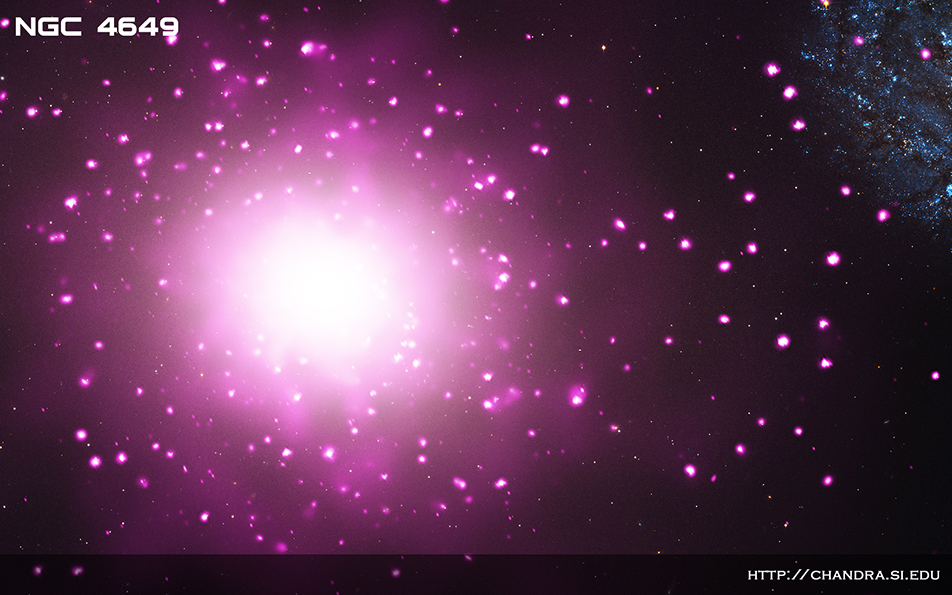 M60-UCD1:
M60-UCD1: A galaxy about 54 million light years from Earth.
[Photo Album]19 Sep 2013

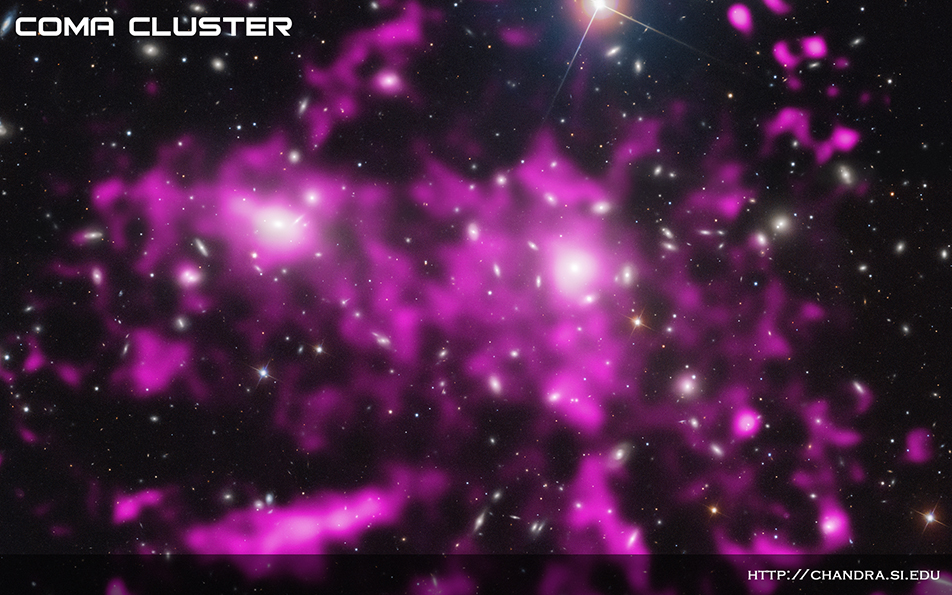 Coma Cluster:
Coma Cluster: A collection of thousands of galaxies about 320 million light years from Earth.
[Photo Album]14 Aug 2013

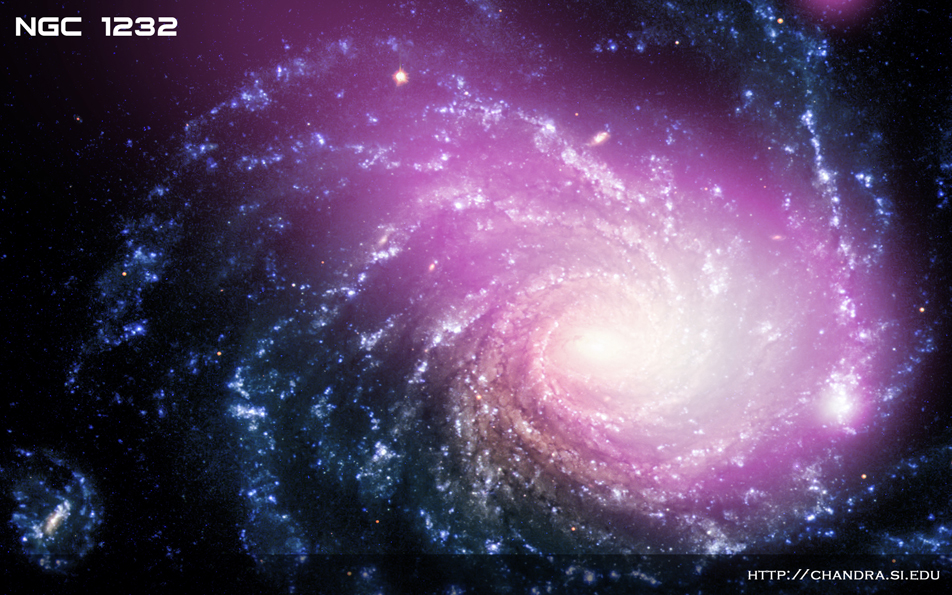 NGC 1232:
NGC 1232: A giant cloud of superheated gas that is likely caused by a collision between galaxies.
[Photo Album]11 Jul 2013

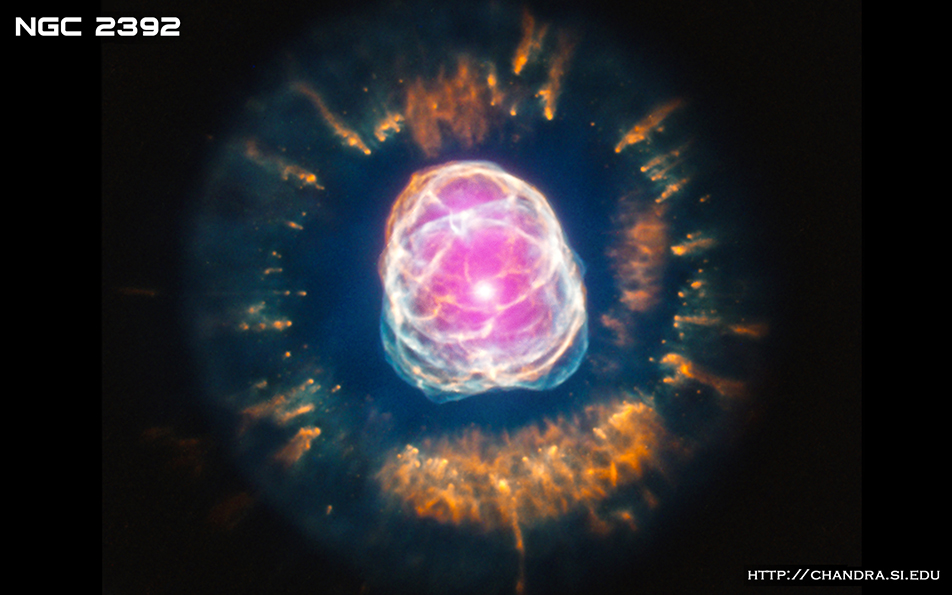 NGC 2392:
NGC 2392: A Sun-like star in its end phase of life about 4,200 light years from Earth.
[Photo Album]26 Jun 2013

 G1.9+0.3:
G1.9+0.3: A supernova remnant in the Milky Way located about 28,000 light years from Earth
[Photo Album]12 Jun 2013

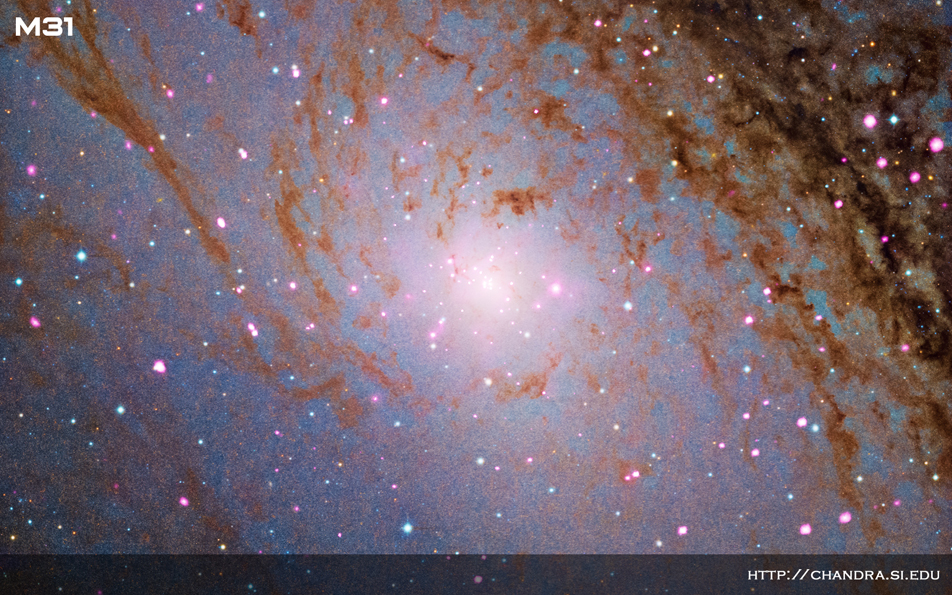 M31:
M31: An unprecedented bonanza of black holes has been found in one of the nearest galaxies to the Milky Way.
[Photo Album]15 May 2013

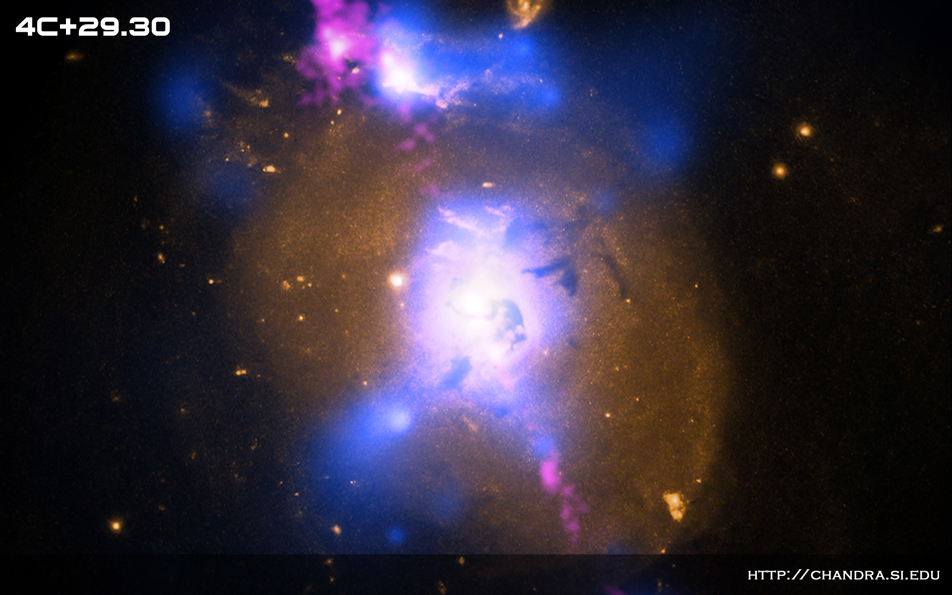 4C+29.30:
4C+29.30: This composite image of a galaxy illustrates how the intense gravity of a supermassive black hole can be tapped to generate immense power.
[Photo Album]30 Apr 2013

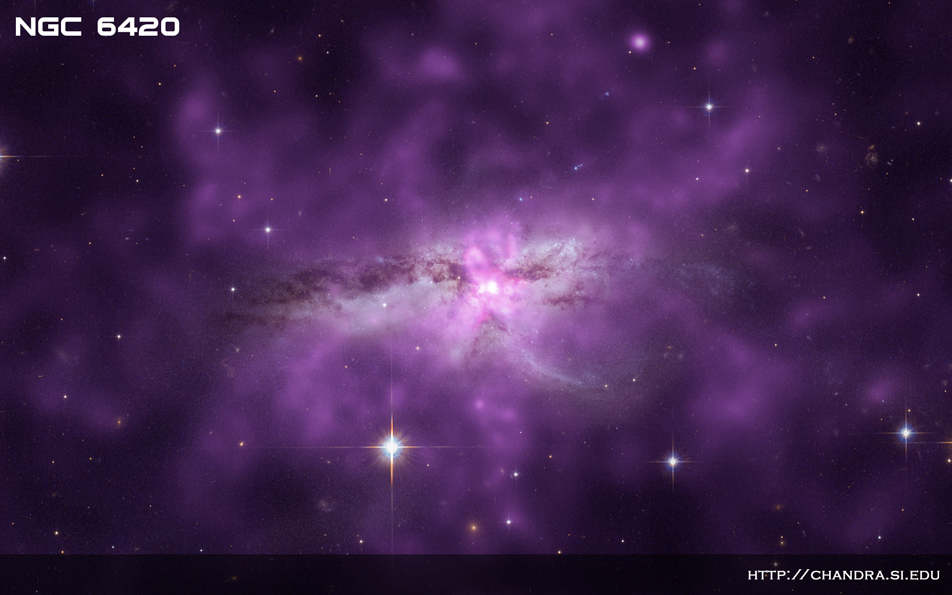 NGC 6240:
NGC 6240: Two large galaxies are colliding and scientists have used Chandra to make a detailed study of an enormous cloud of hot gas that surrounds them.
[Photo Album]17 Apr 2013

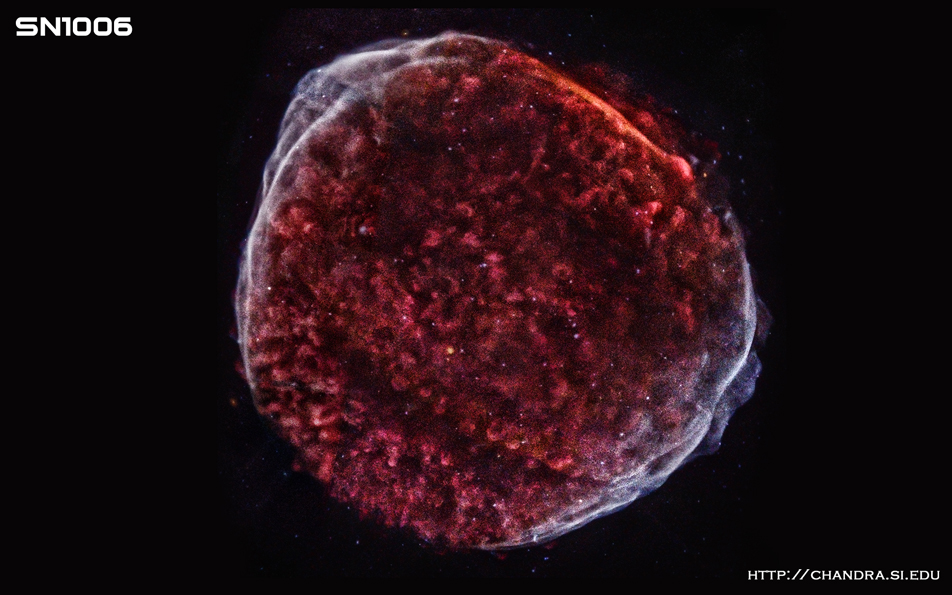 SN 1006:
SN 1006: A supernova remnant whose progenitor explosion was seen from Earth over a thousand years ago.
[Photo Album]03 Apr 2013

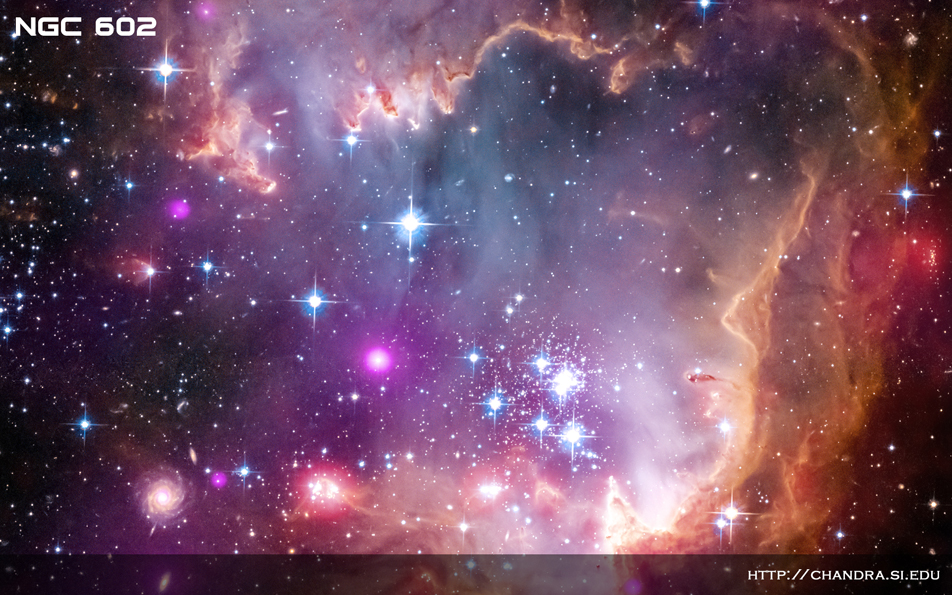 NGC 602:
NGC 602: The Small Magellanic Cloud (SMC) is one of the Milky Way's closest galactic neighbors. Even though it is a small, or so-called dwarf galaxy, the SMC is so bright that it is visible to the unaided eye from the Southern Hemisphere and near the equator.
[Photo Album]18 Mar 2013

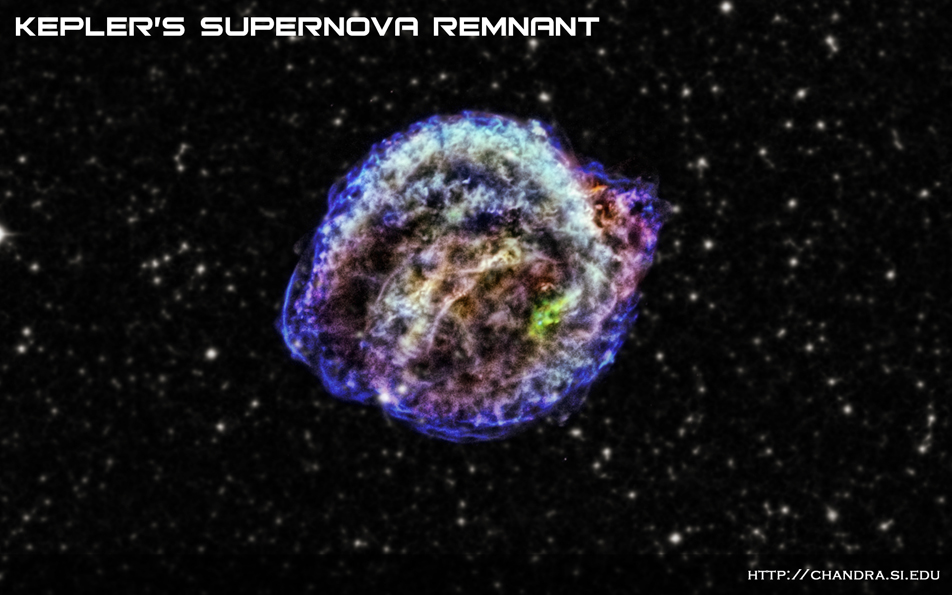 Kepler's Supernova Remnant:
Kepler's Supernova Remnant: A new study using data from NASA's Chandra X-ray Observatory points to the origin of a famous supernova. This supernova belongs to an important class of objects that are used to measure the rate of expansion of the Universe.
[Photo Album]15 Mar 2013

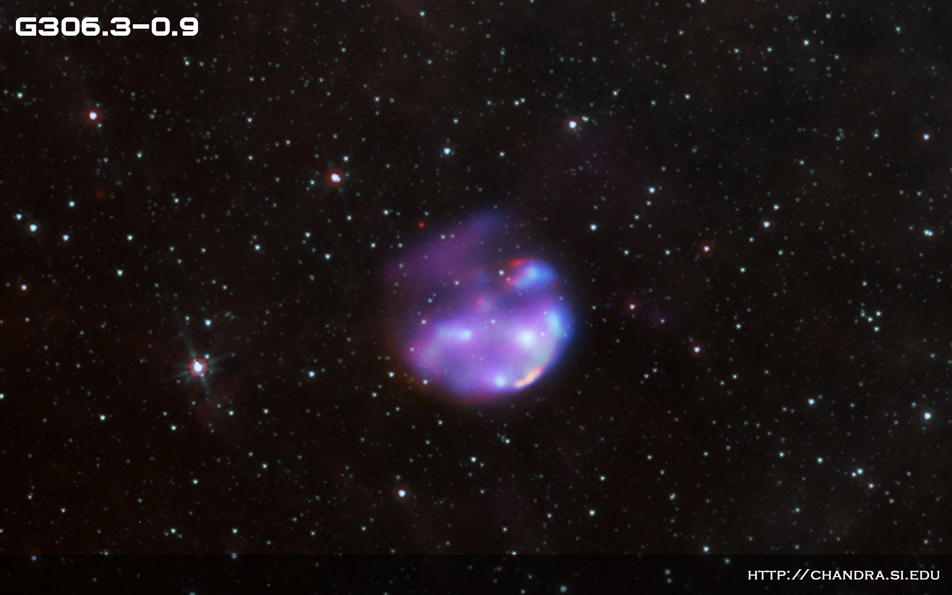 G306.3-0.9:
G306.3-0.9: A supernova remnant in the Milky Way at a distance of about 26,000 light years away from Earth.
[Photo Album]06 Mar 2013

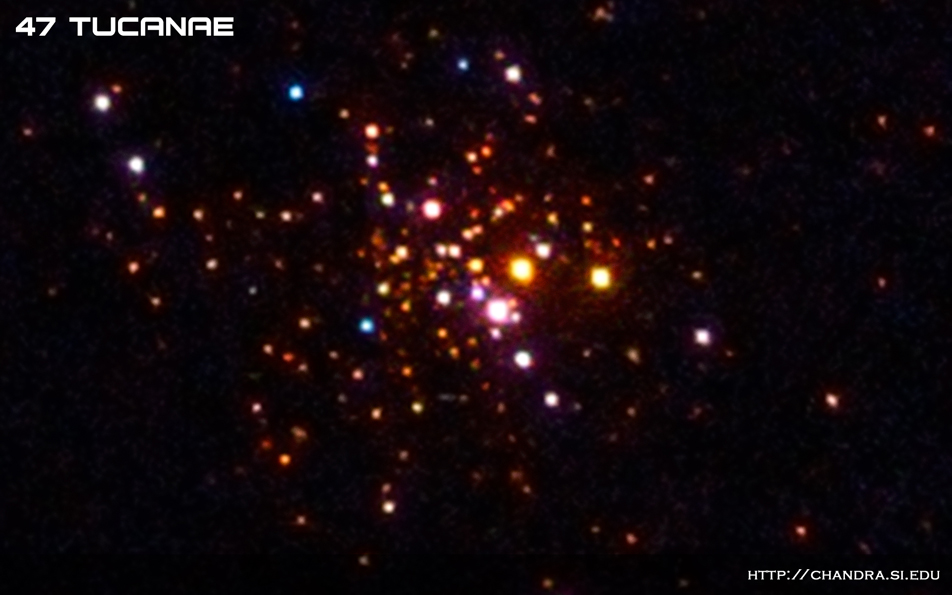 47 Tucanae:
47 Tucanae: Neutron stars, the ultra-dense cores left behind after massive stars collapse, contain the densest matter known in the Universe outside of a black hole.
[Photo Album]13 Feb 2013

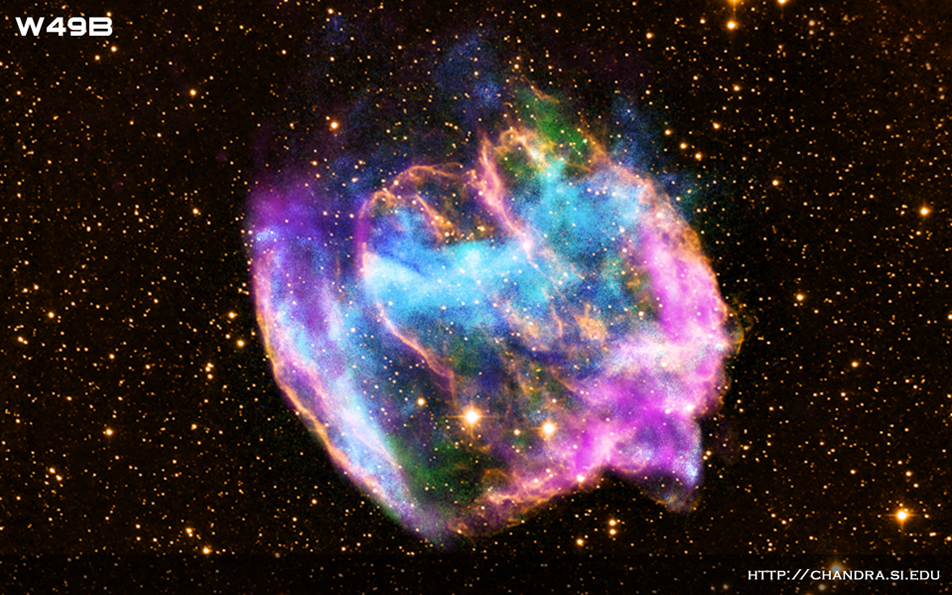 W49B:
W49B: New data from NASA's Chandra X-ray Observatory suggest a highly distorted supernova remnant may contain the most recent black hole formed in the Milky Way galaxy. The remnant appears to be the product of a rare explosion in which matter is ejected at high speeds along the poles of a rotating star.
[Photo Album]28 Jan 2013

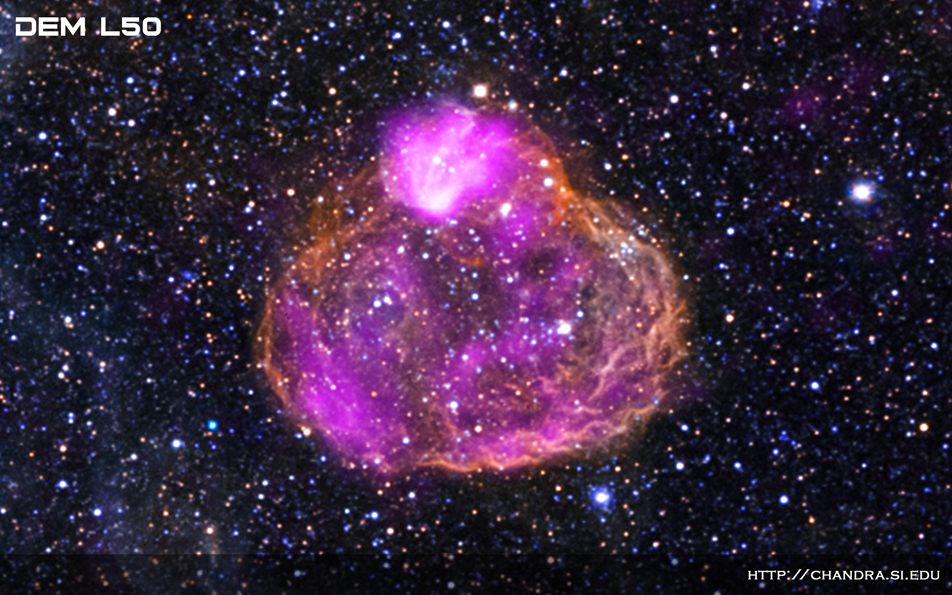 DEM L50:
DEM L50: A superbubble located in the Large Magellanic Cloud about 160,000 light years from Earth. Superbubbles are found in regions where massive stars have formed in the last few million years.
[Photo Album]07 Jan 2013

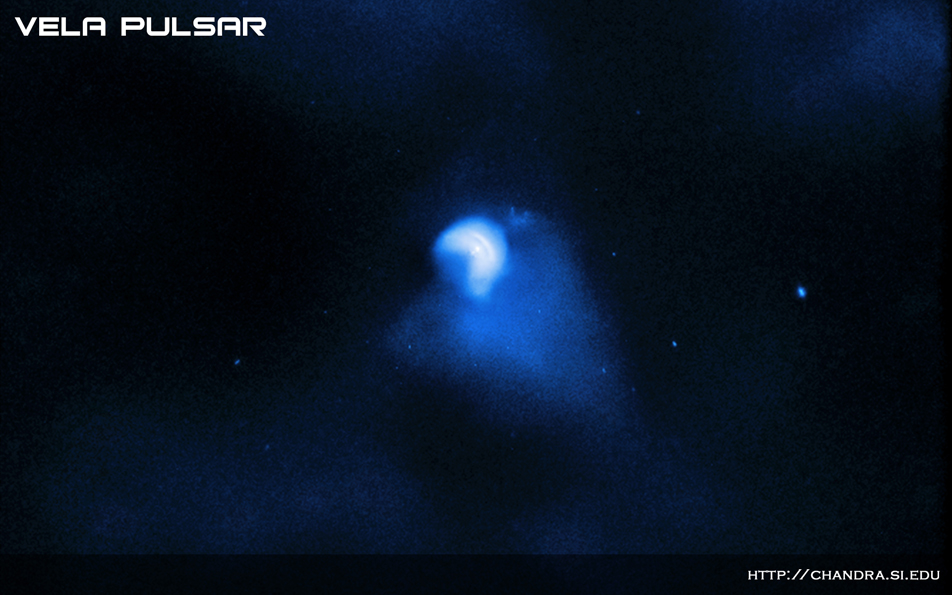 Vela Pulsar Jet:
Vela Pulsar Jet: A new Chandra movie of the Vela pulsar shows it may be "precessing," or wobbling as it spins.
[Photo Album]18 Dec 2012

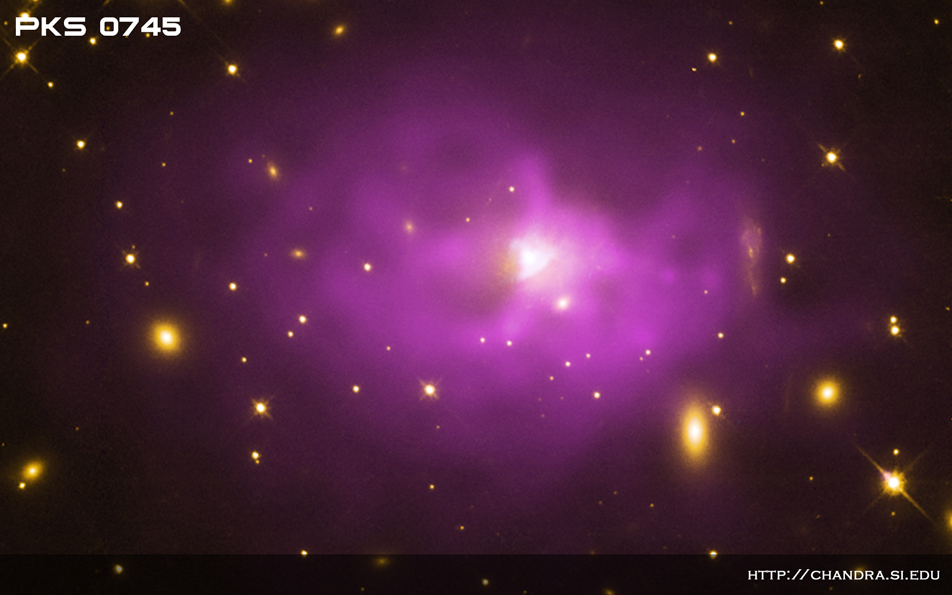 PKS 0745:
PKS 0745: Some of the biggest black holes in the Universe may actually be even bigger than previously thought, according to a study using data from NASA's Chandra X-ray Observatory.
[Photo Album]13 Dec 2012

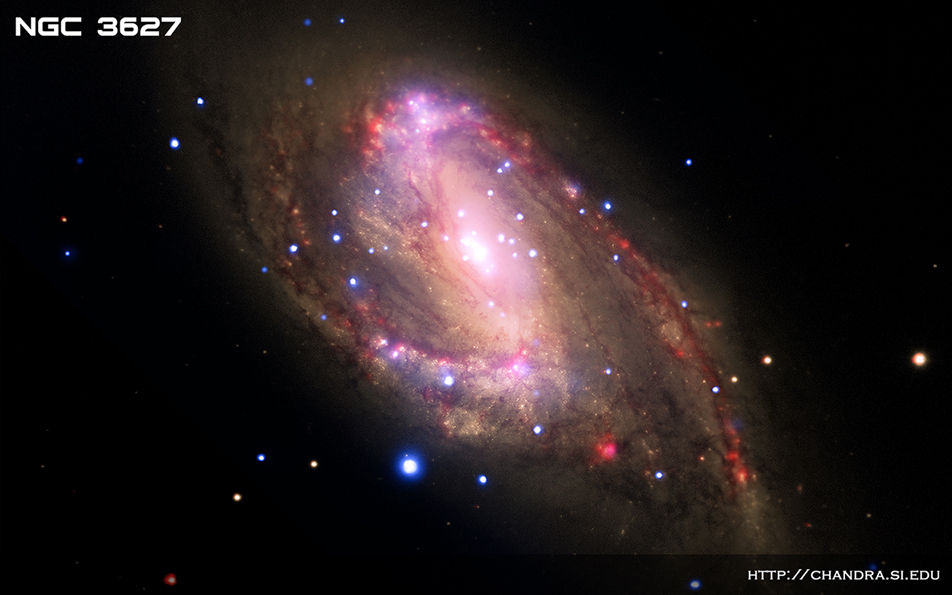 NGC 3627:
NGC 3627: This composite image shows the spiral galaxy NGC 3627, located about 30 million light years from Earth.
[Photo Album]06 Dec 2012

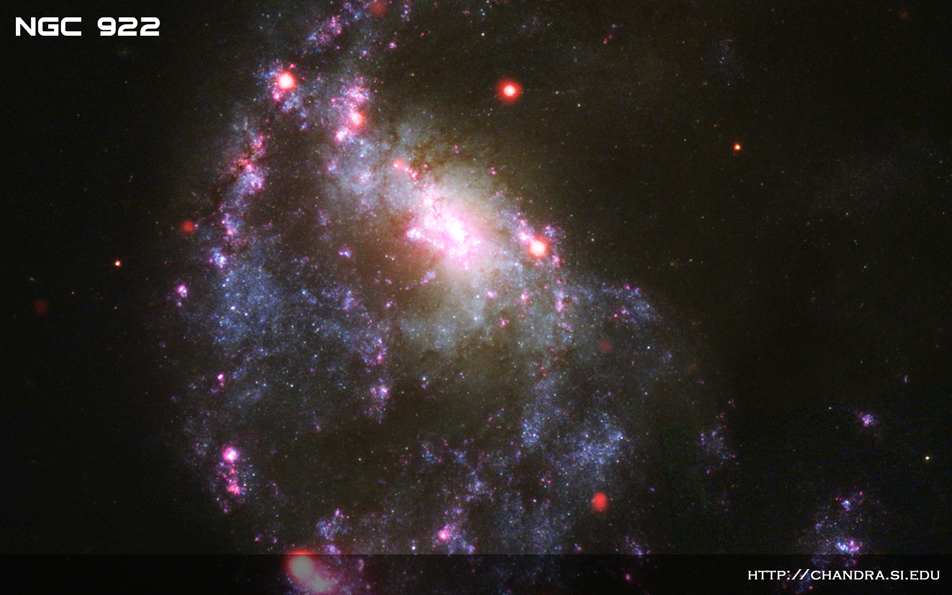 NGC 922:
NGC 922: NGC 922 was formed by the collision between two galaxies - one seen in this image and another located outside the field of view.
[Photo Album]15 Nov 2012

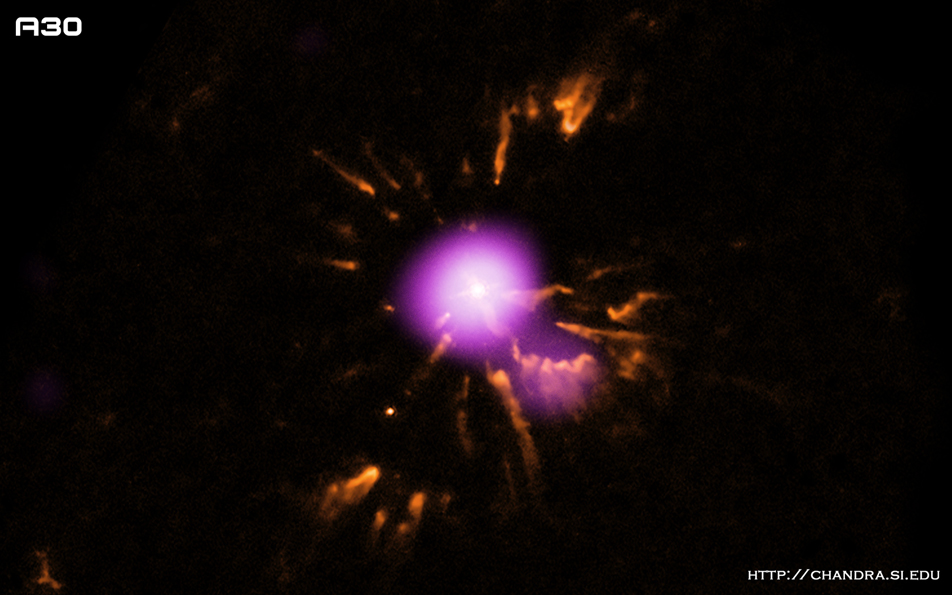 Abell 30:
Abell 30: These images of the planetary nebula Abell 30, (a.k.a. A30), show one of the clearest views ever obtained of a special phase of evolution for these objects.
[Photo Album]07 Nov 2012

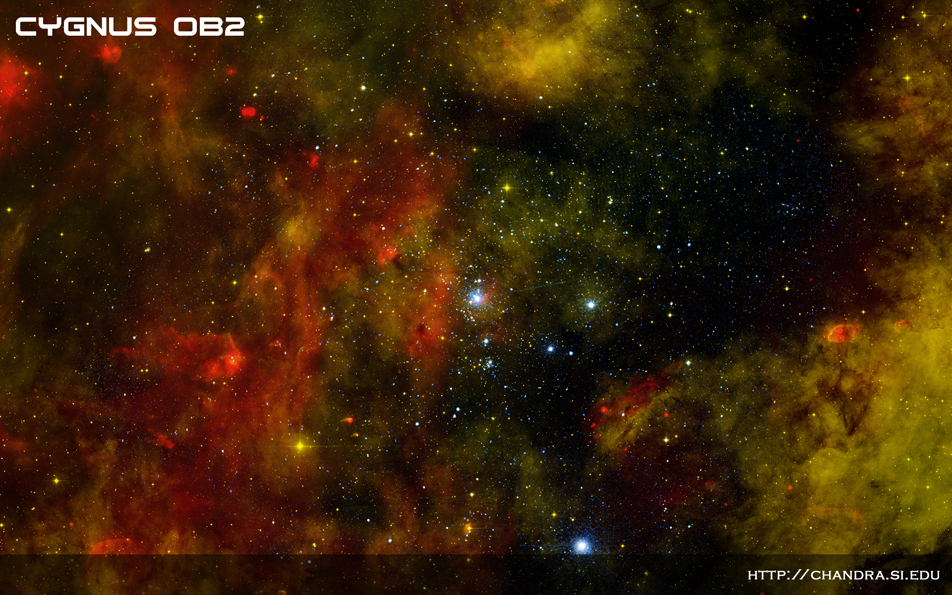 Cygnus OB2:
Cygnus OB2: The Milky Way and other galaxies in the universe harbor many young star clusters and associations that each contain hundreds to thousands of hot, massive, young stars known as O and B stars.
[Photo Album]10 Oct 2012

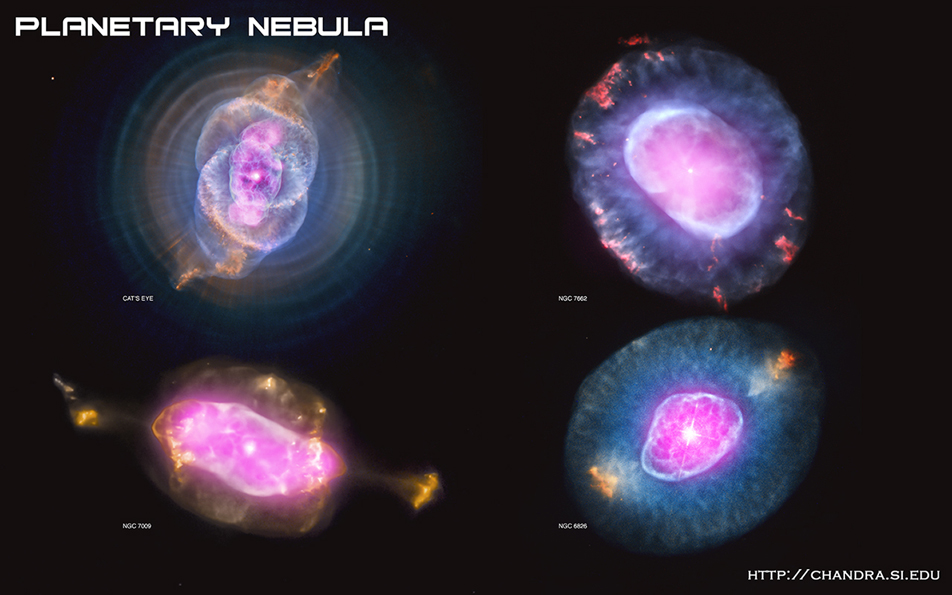 NGC 6543:
NGC 6543: This gallery shows four planetary nebulas from the first systematic survey of such objects in the solar neighborhood made with NASA's Chandra X-ray Observatory.
[Photo Album]11 Sep 2012

 Kepler's Supernova Remnant:
Kepler's Supernova Remnant: In 1604, a new star appeared in the night sky that was much brighter than Jupiter and dimmed over several weeks. This event was witnessed by sky watchers including the famous astronomer Johannes Kepler.
[Photo Album]30 Aug 2012

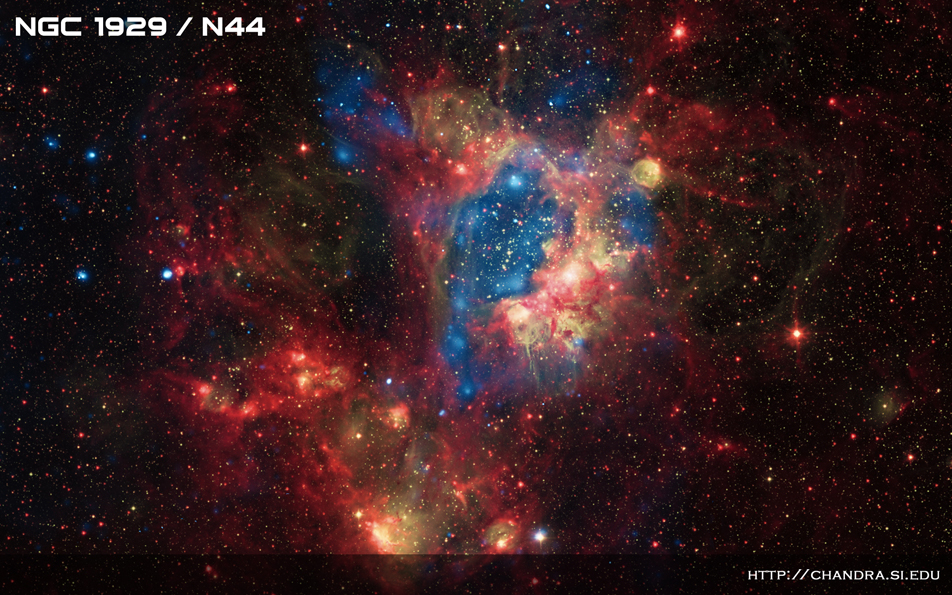 NGC 1929:
NGC 1929: A superbubble in the Large Magellanic Cloud (LMC), a small satellite galaxy of the Milky Way, located about 160,000 light years from Earth.
[Photo Album]15 Aug 2012

 Phoenix Cluster:
Phoenix Cluster: The Phoenix Cluster is an extraordinary galaxy cluster that is breaking several important astronomical records.
[Photo Album]30 Jul 2012

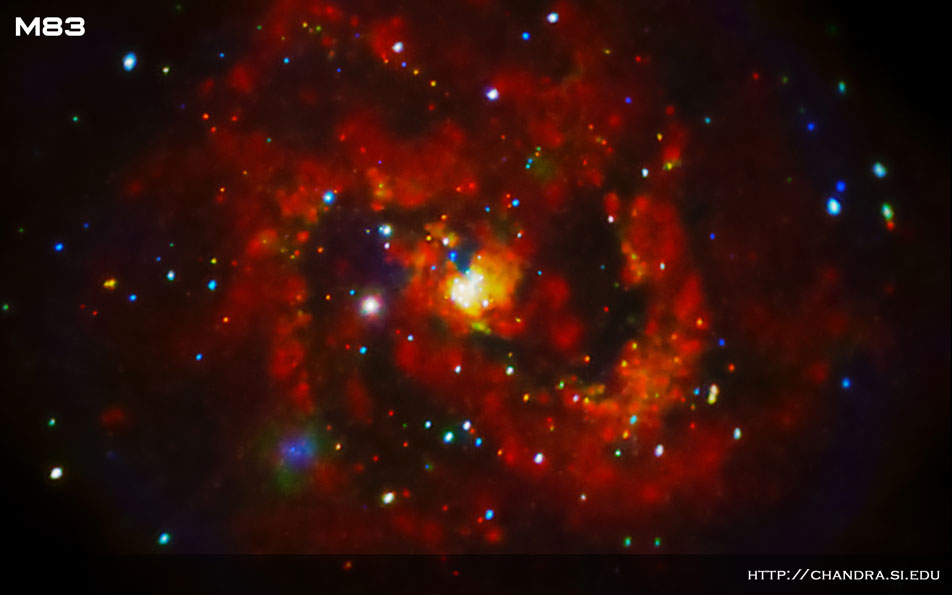 M83:
M83: Over fifty years ago, a supernova was discovered in M83, a spiral galaxy about 15 million light years from Earth.
[Photo Album]28 Jun 2012

 IGR J11014-6103:
IGR J11014-6103: Researchers using three different telescopes -- NASA's Chandra X-ray Observatory and ESA's XMM-Newton in space, and the Parkes radio telescope in Australia -- may have found the fastest moving pulsar ever seen.
[Photo Album]04 Jun 2012

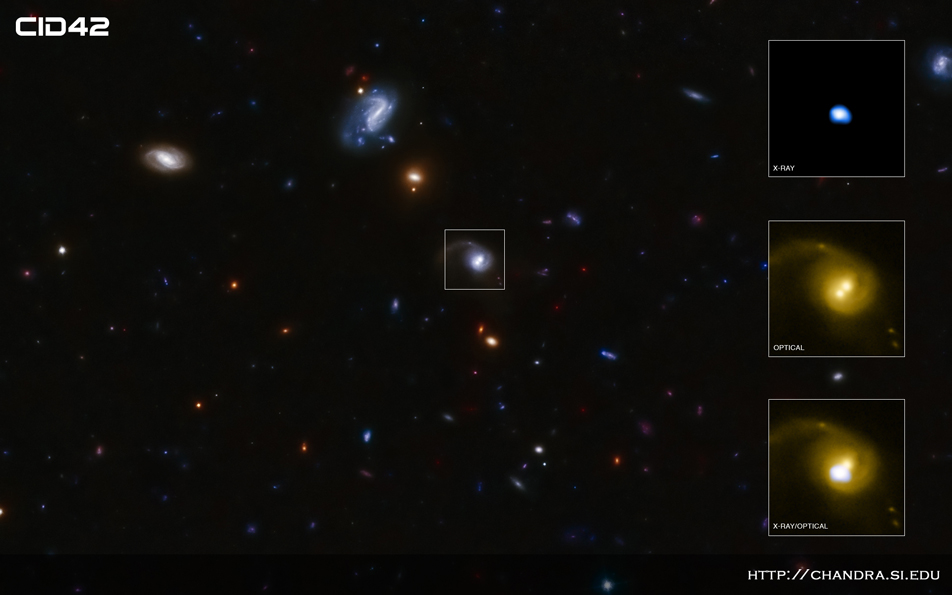 CID-42:
CID-42: The galaxy at the center of this image contains an Xray source, CID-42, with exceptional properties.
[Photo Album]24 May 2012

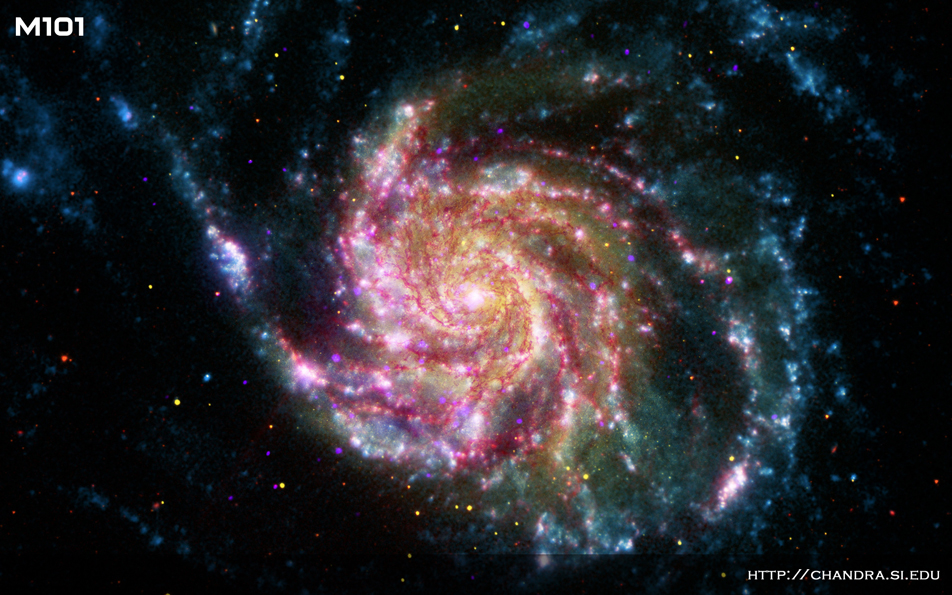 M101:
M101: This image of the Pinwheel Galaxy, or also known as M101, combines data in the infrared, visible, ultraviolet and X-rays from four of NASA's space-based telescopes.
[Photo Album]15 May 2012

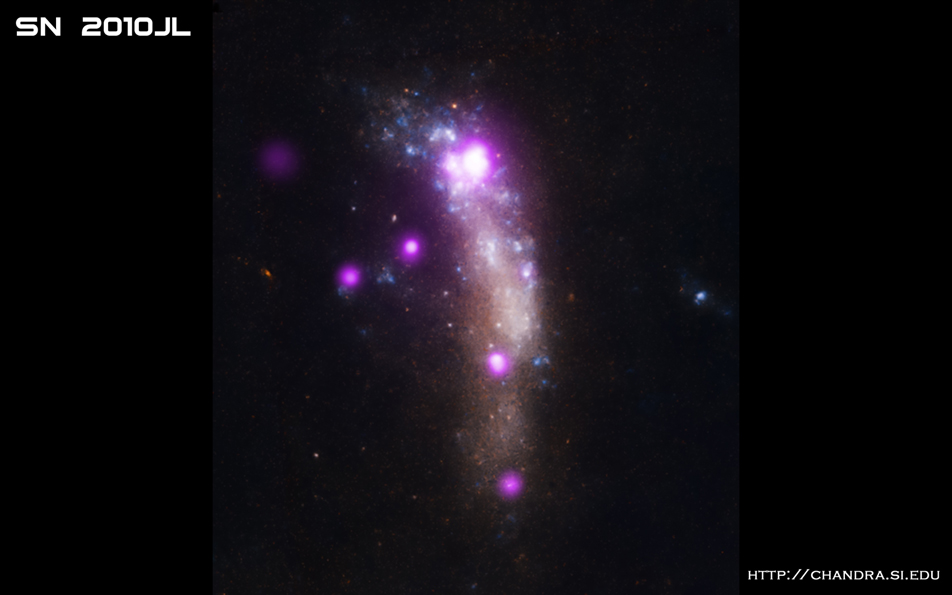 SN 2010jl:
SN 2010jl: Observations with NASA's Chandra X-ray Observatory have provided the first X-ray evidence of a supernova shock wave breaking through a cocoon of gas surrounding the star that exploded.
[Photo Album]17 Apr 2012

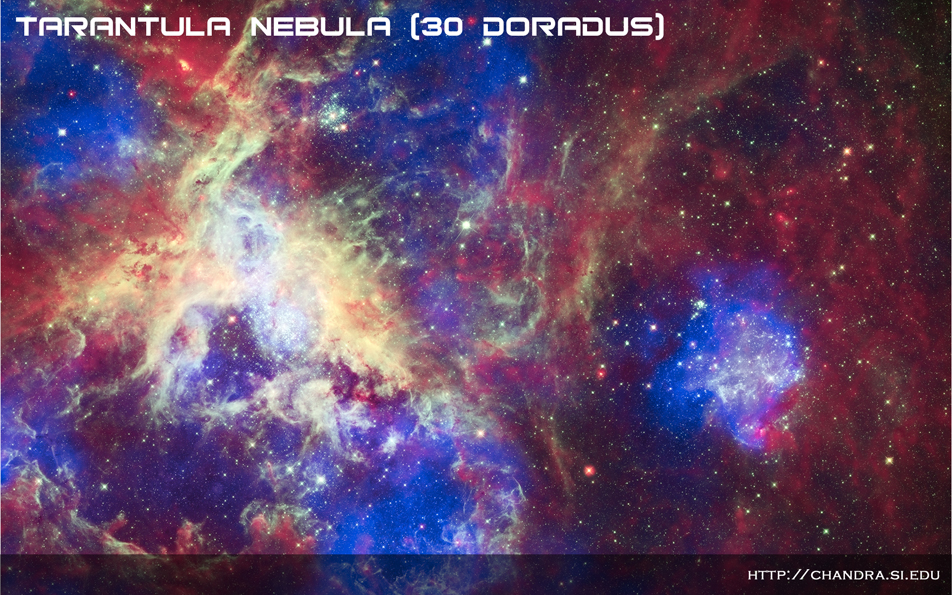 Tarantula Nebula:
Tarantula Nebula: A massive star-forming region located about 160,000 light years away.
[Photo Album]12 Apr 2012

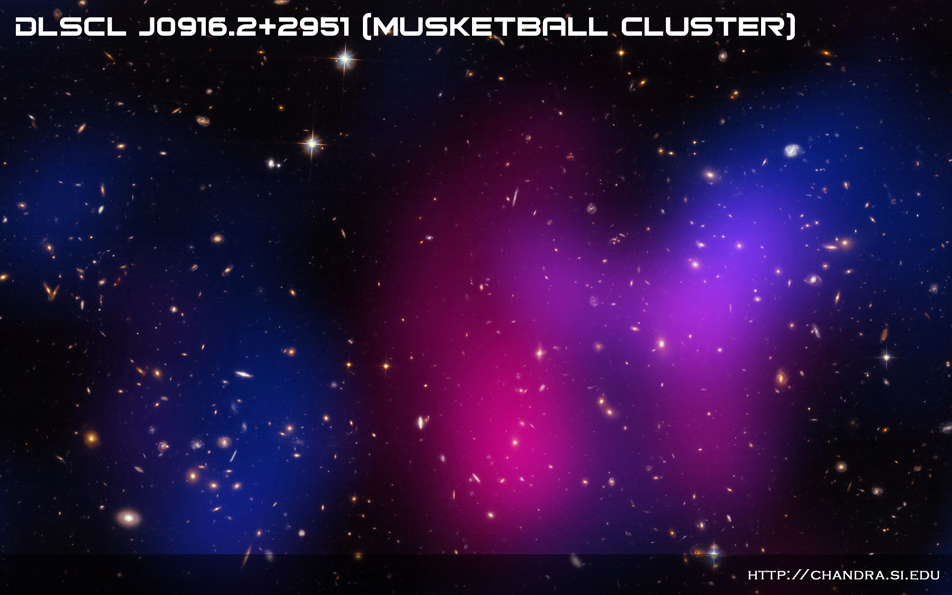 DLSCL J0916.2+2951:
DLSCL J0916.2+2951: A merger of galaxy clusters about 5.2 billion light years from Earth.
[Photo Album]14 Mar 2012

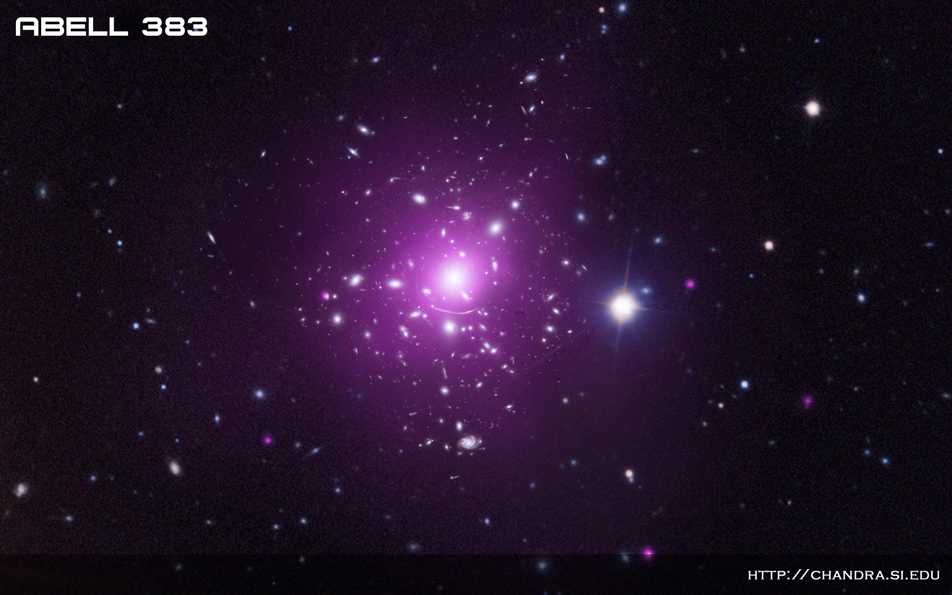 Abell 383:
Abell 383: A cluster of galaxies located about 2.3 billion light years from Earth.
[Photo Album]02 Mar 2012

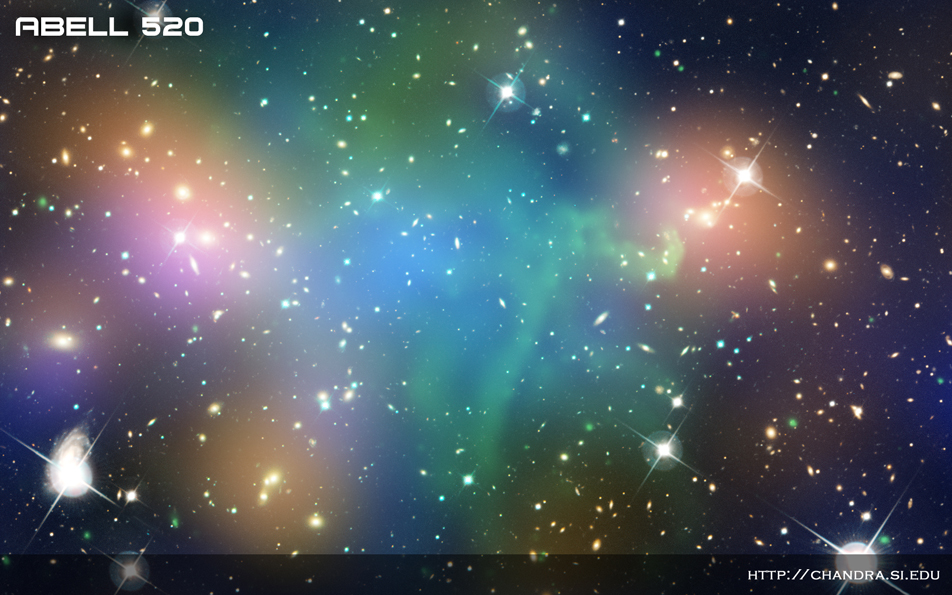 Abell 520:
Abell 520: A collision of massive galaxy clusters located about 2.4 billion light years from Earth.
[Photo Album]01 Feb 2012

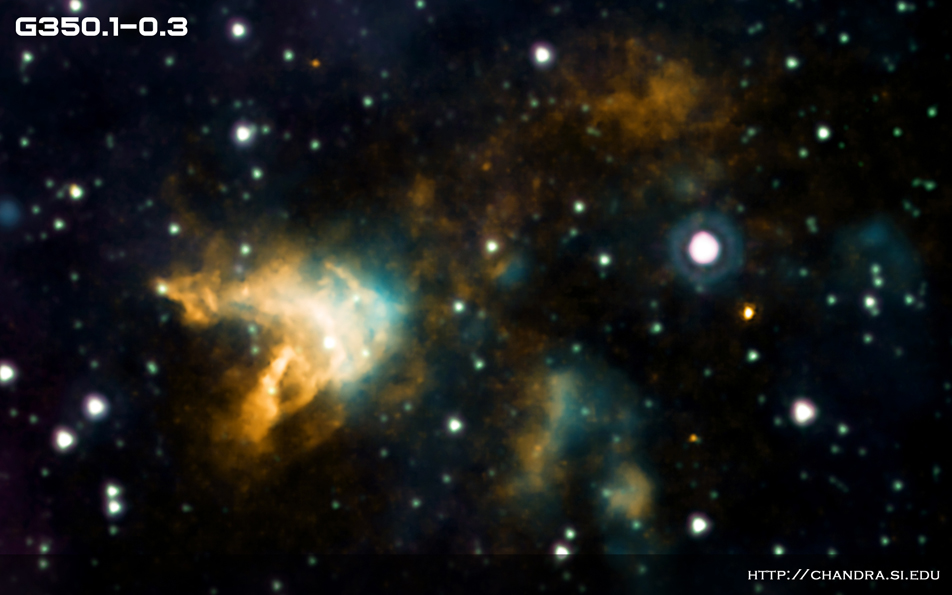 G350.1-0.3:
G350.1-0.3: A supernova remnant located about 14,700 light years from Earth toward the center of the Milky Way
[Photo Album]10 Jan 2012

 El Gordo:
El Gordo: A galaxy cluster located about 7.2 billion light years from Earth.
[Photo Album]20 Dec 2011

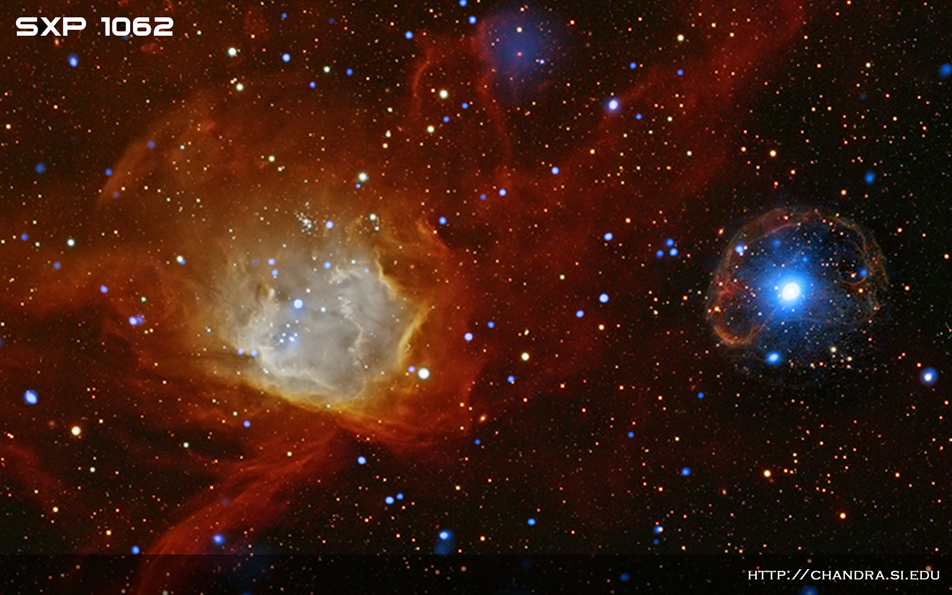 SXP 1062:
SXP 1062: A pulsar found within a supernova remnant in the Small Magellanic Cloud (SMC)
[Photo Album]13 Dec 2011

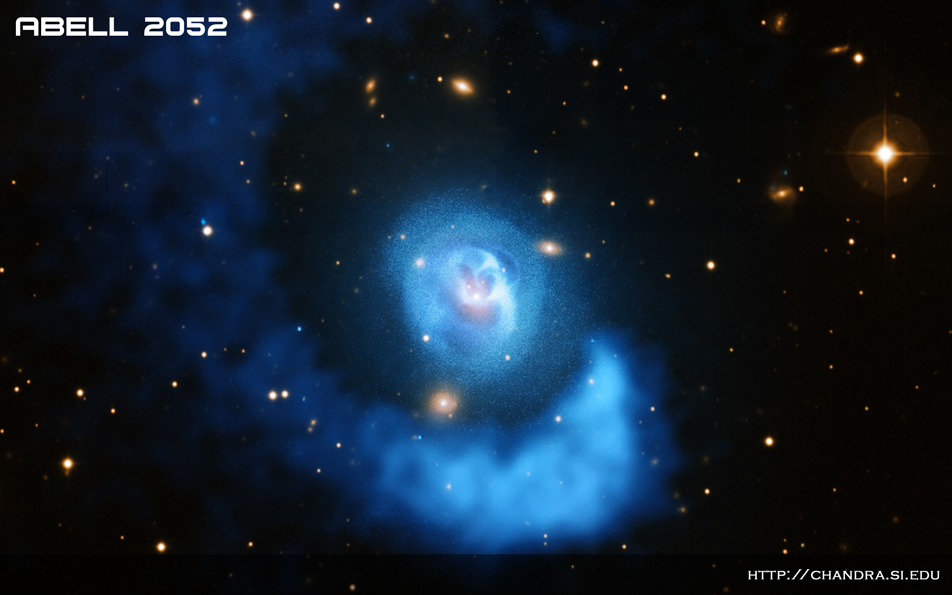 Abell 2052:
Abell 2052: A cluster of galaxies located about 480 million light years from Earth.
[Photo Album]10 Nov 2011

 Tarantula Nebula:
Tarantula Nebula: Found in the nearby Large Magellanic Cloud, 30 Doradus is one of the largest star-forming regions located close to the Milky Way.
[Photo Album]26 Oct 2011

 RCW 86:
RCW 86: A mystery that began nearly 2,000 years ago, when Chinese astronomers witnessed what would turn out to be an exploding star in the sky, has been solved.
[Photo Album]12 Oct 2011

 G299.2-2.9:
G299.2-2.9: G299.2-2.9 is an intriguing supernova remnant found about 16,000 light years away in the Milky Way galaxy.
[Photo Album]28 Sep 2011

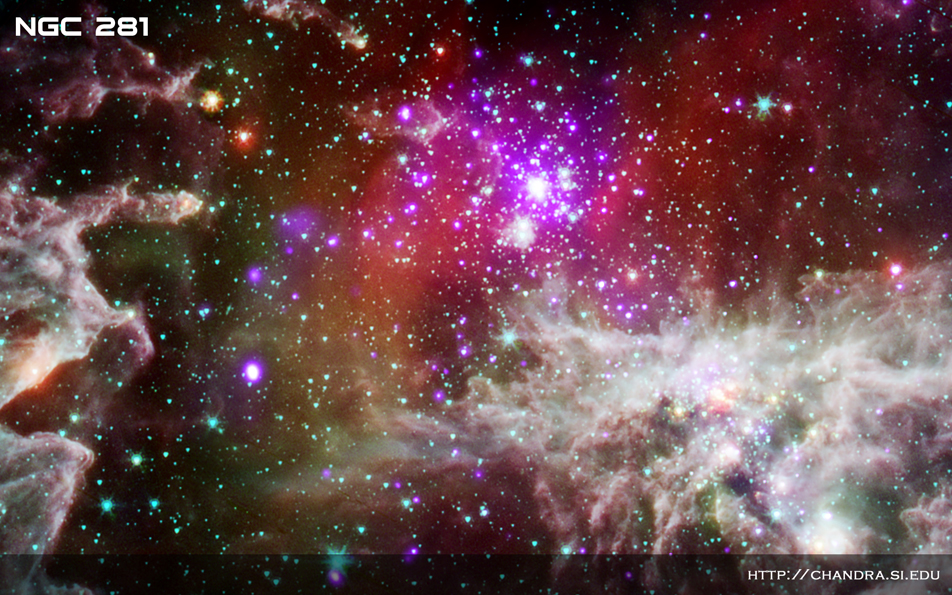 NGC 281:
NGC 281: High-mass stars are important because they are responsible for much of the energy pumped into our galaxy over its lifetime.
[Photo Album]11 Aug 2011

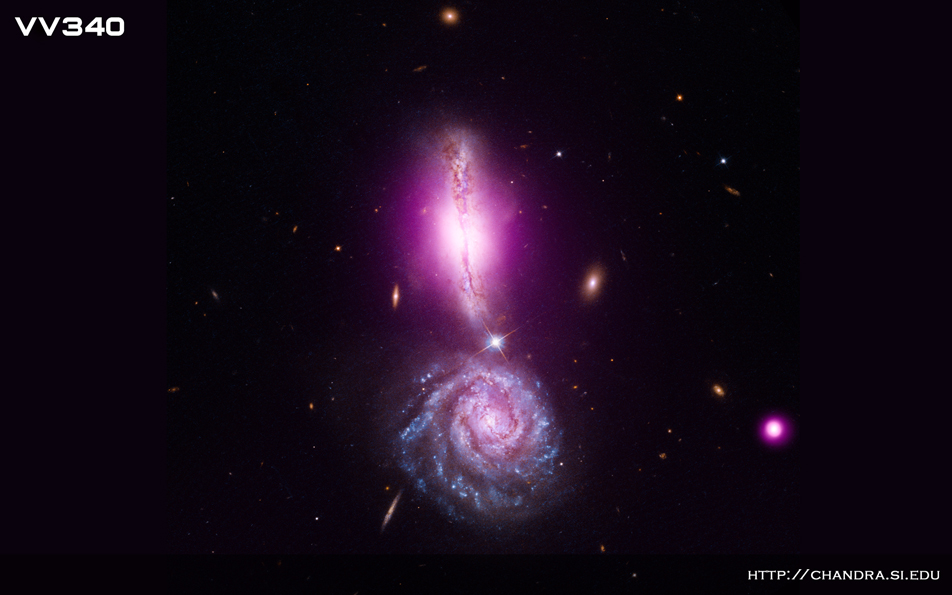 VV 340:
VV 340: A pair of galaxies located about 450 million light years from Earth.
[Photo Album]13 Jul 2011

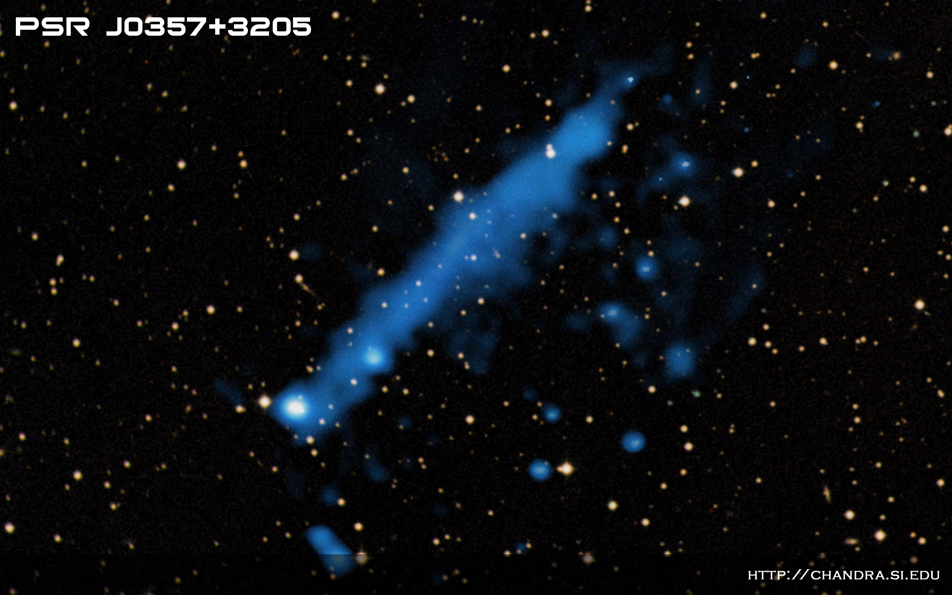 PSR J0357+3205:
PSR J0357+3205: A pulsar located about 1,600 light years from Earth.
[Photo Album]22 Jun 2011

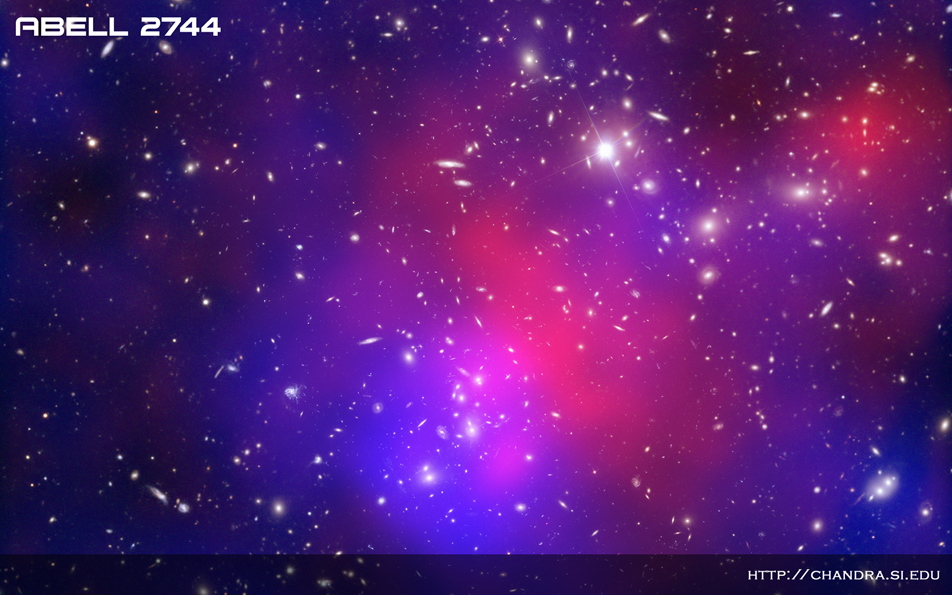 Abell 2744:
Abell 2744: A collision of galaxy clusters about 3.5 billion light years away.
[Photo Album]15 Jun 2011

 Chandra Deep Field South :
Chandra Deep Field South : A composite image combines the deepest X-ray image with optical and infrared data.
[Photo Album]24 May 2011

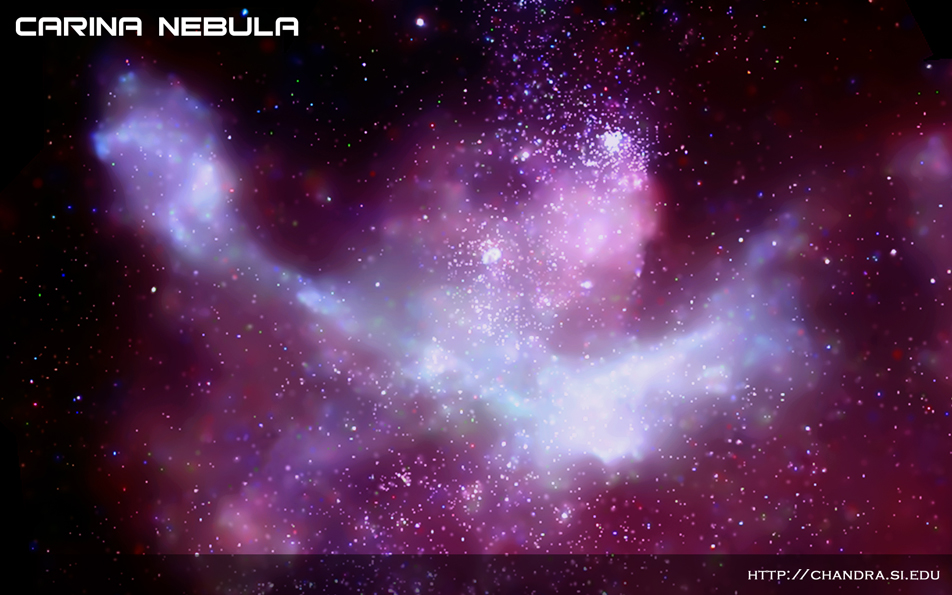 Carina Nebula:
Carina Nebula: A star-forming region about 7,500 light years from Earth.
[Photo Album]26 Apr 2011

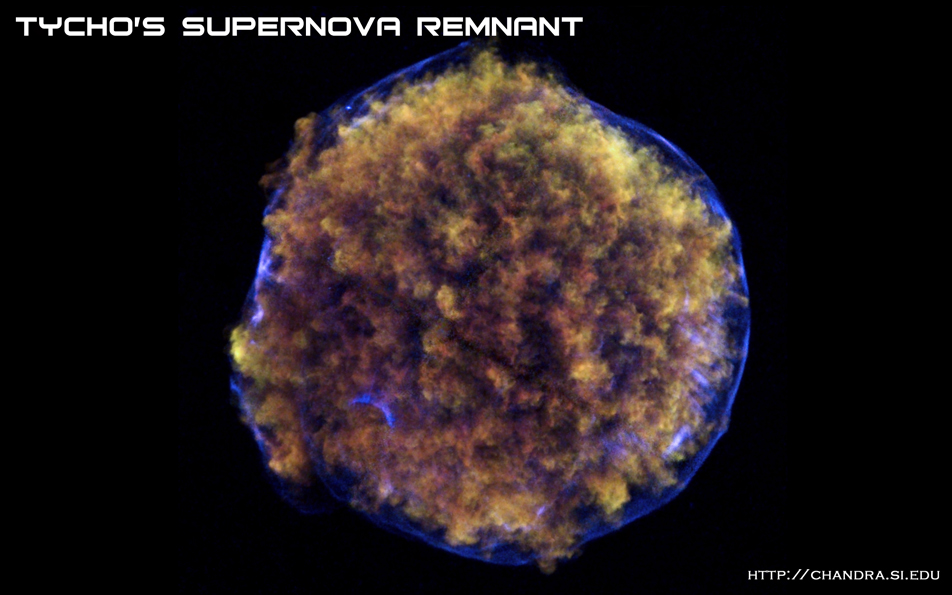 Tycho's Supernova Remnant:
Tycho's Supernova Remnant: This new image of Tycho's supernova remnant, dubbed Tycho for short, contains striking new evidence for what triggered the original supernova explosion, as seen from Earth in 1572.
[Photo Album]13 Apr 2011

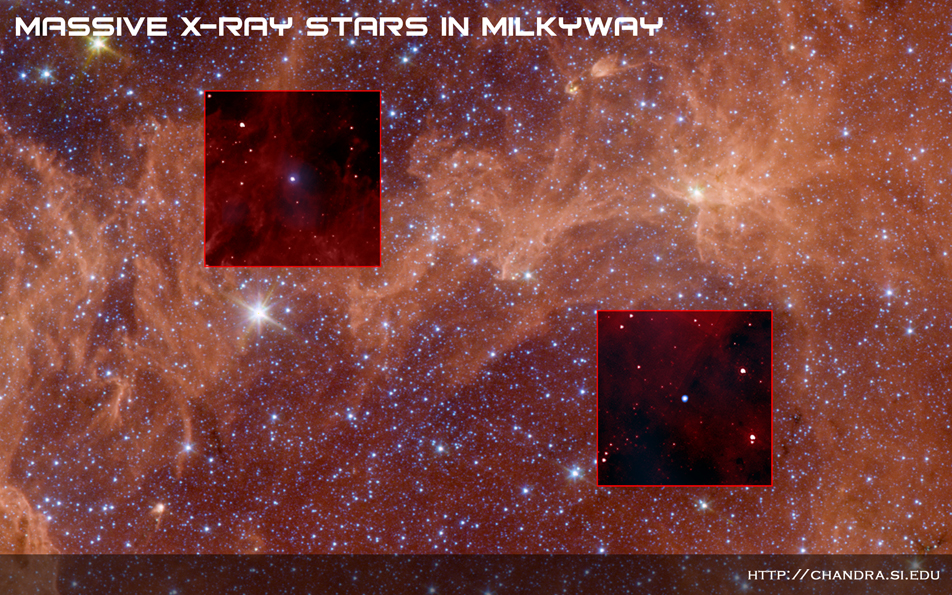 J144547-5931:
J144547-5931: Two massive stars in the Milky Way,
both about 9,000 light years from Earth.
[Photo Album]24 Mar 2011

 Tycho's Supernova Remnant:
Tycho's Supernova Remnant: This image comes from a very deep Chandra observation of the Tycho supernova remnant, produced by the explosion of a white dwarf star in our Galaxy.
[Photo Album]10 Mar 2011

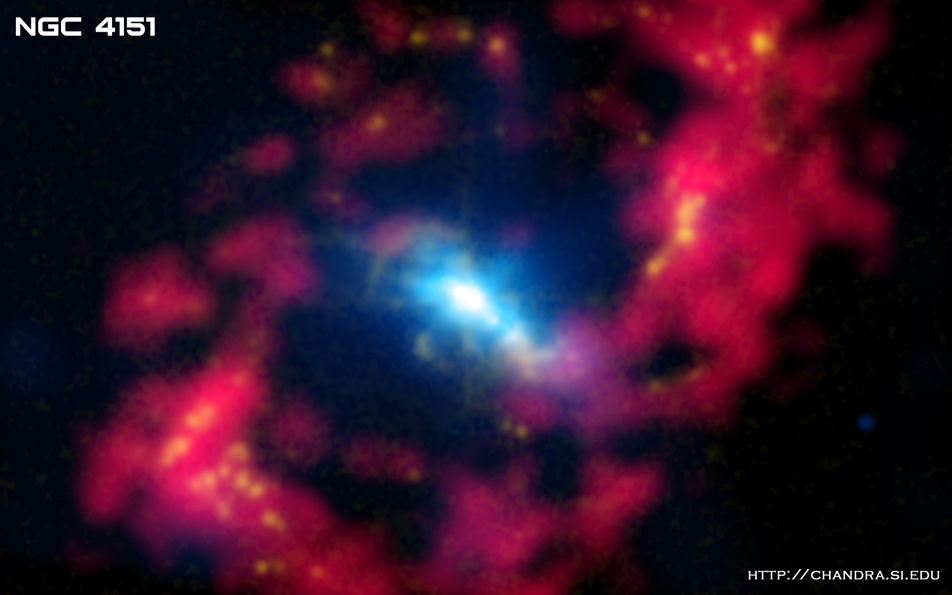 NGC 4151:
NGC 4151: A galaxy about 43 million light years from Earth with an actively growing black hole at its center.
[Photo Album]23 Feb 2011

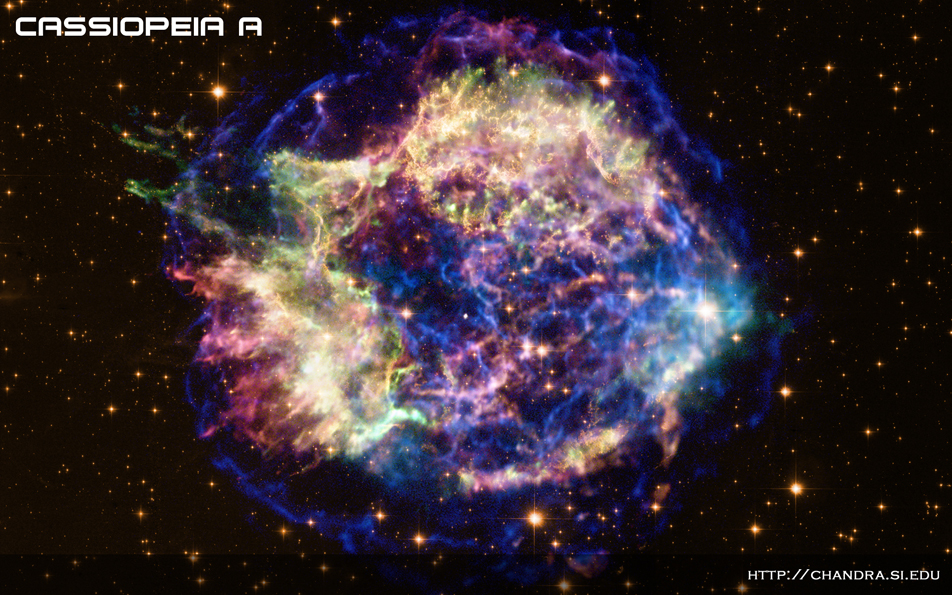 Cassiopeia A:
Cassiopeia A: This composite image shows a beautiful X-ray and optical view of Cassiopeia A (Cas A), a supernova remnant located in our Galaxy about 11,000 light years away.
[Photo Album]09 Feb 2011

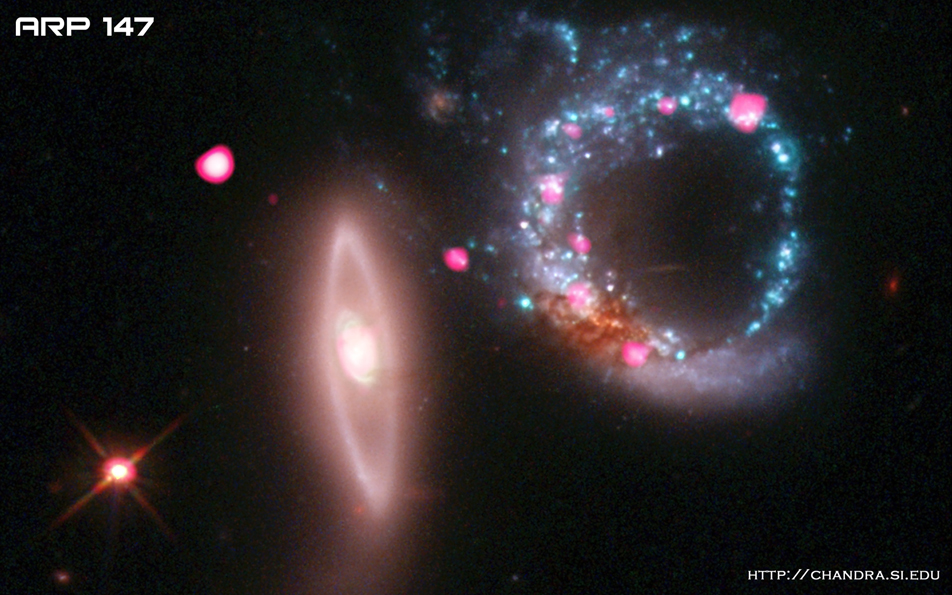 Arp 147:
Arp 147: This composite image of Arp 147, a pair of interacting galaxies located about 430 million light years from Earth.
[Photo Album]13 Jan 2011

 M82:
M82: A new Chandra X-ray Observatory image of Messier 82, or M82, shows the result of star formation on overdrive.
[Photo Album]12 Jan 2011

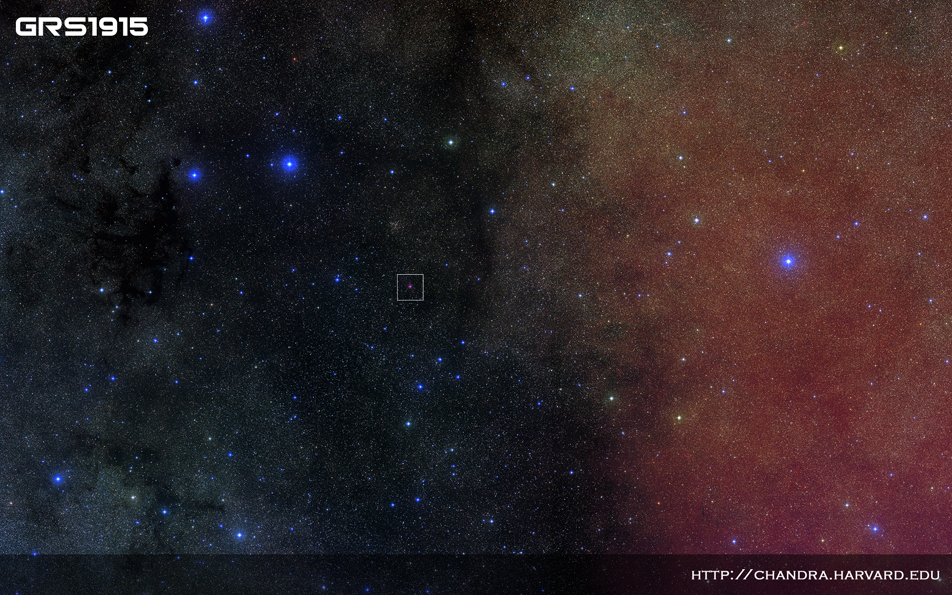 GRS 1915+105:
GRS 1915+105: A system containing a black hole about 14 times the Sun's mass in orbit with a companion star.
[Photo Album]10 Jan 2011

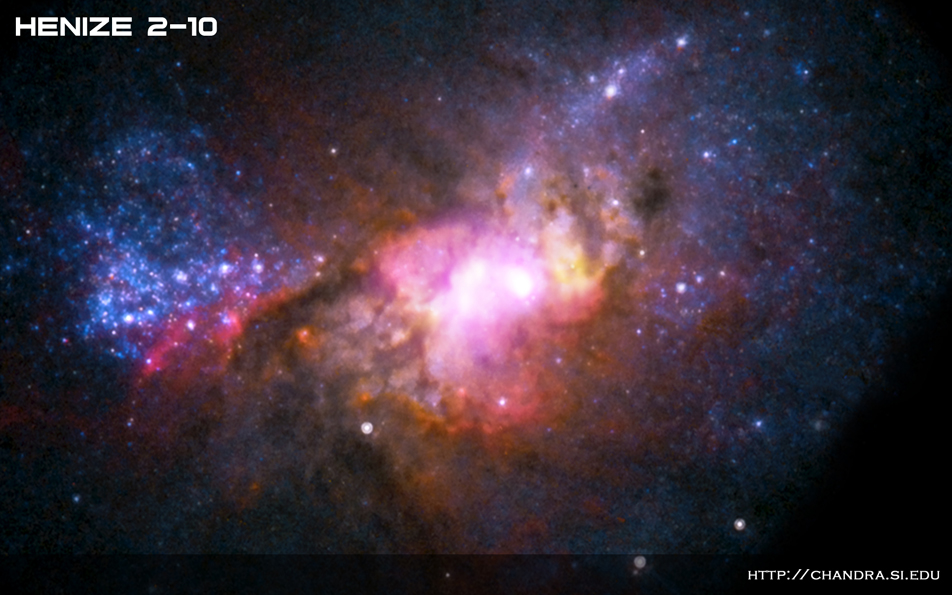 Henize 2-10:
Henize 2-10: A dwarf starburst galaxy about 30 million light years from Earth.
[Photo Album]20 Dec 2010

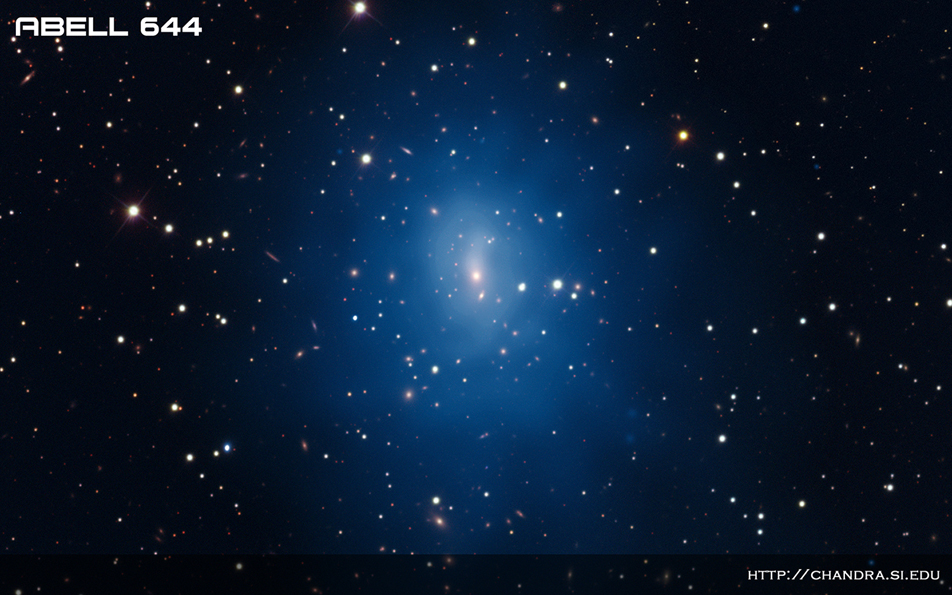 Abell 644:
Abell 644: This two-panel graphic contains two composite images of galaxies used in a recent study of supermassive black holes.
[Photo Album]14 Dec 2010

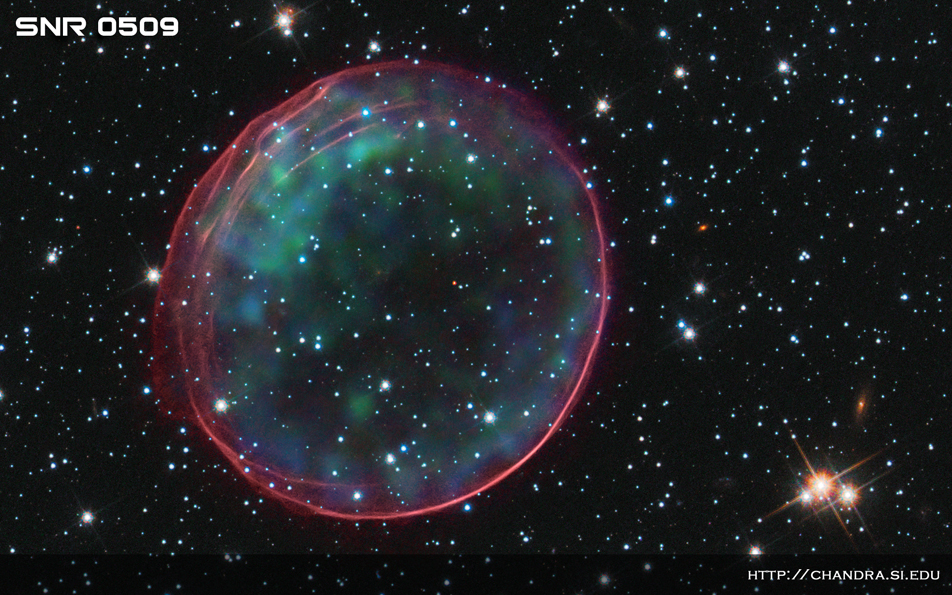 SNR 0509-67.5:
SNR 0509-67.5: This colorful creation was made by combining data from two of NASA's Great Observatories.
[Photo Album]08 Dec 2010

 NGC 5813:
NGC 5813: This composite image shows an intergalactic "weather map" around the elliptical galaxy NGC 5813, the dominant central galaxy in a galaxy group located about 105 million light years away from Earth.
[Photo Album]15 Nov 2010

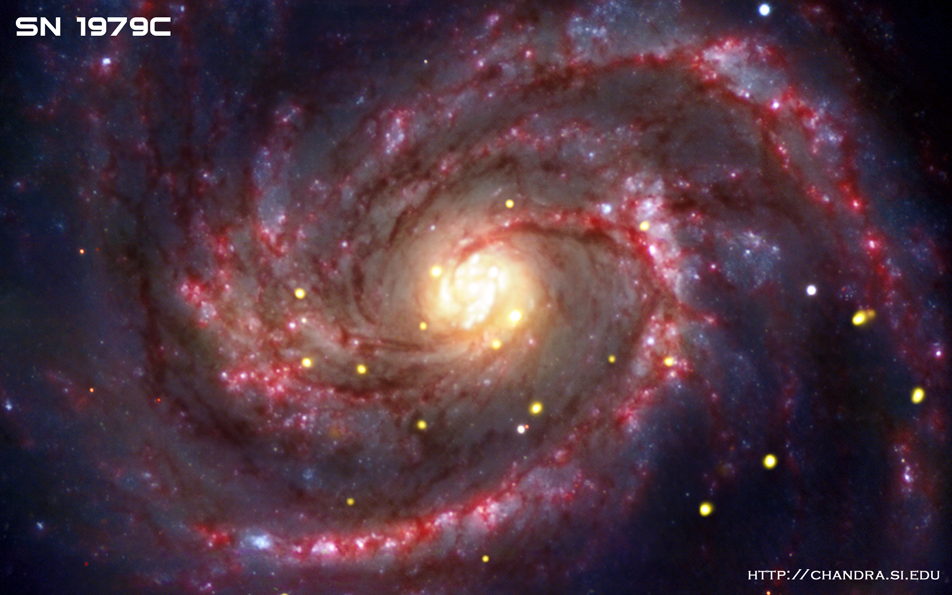 SN 1979C:
SN 1979C: A supernova that was seen to explode in 1979 from Earth, found in the galaxy M100.
[Photo Album]26 Oct 2010

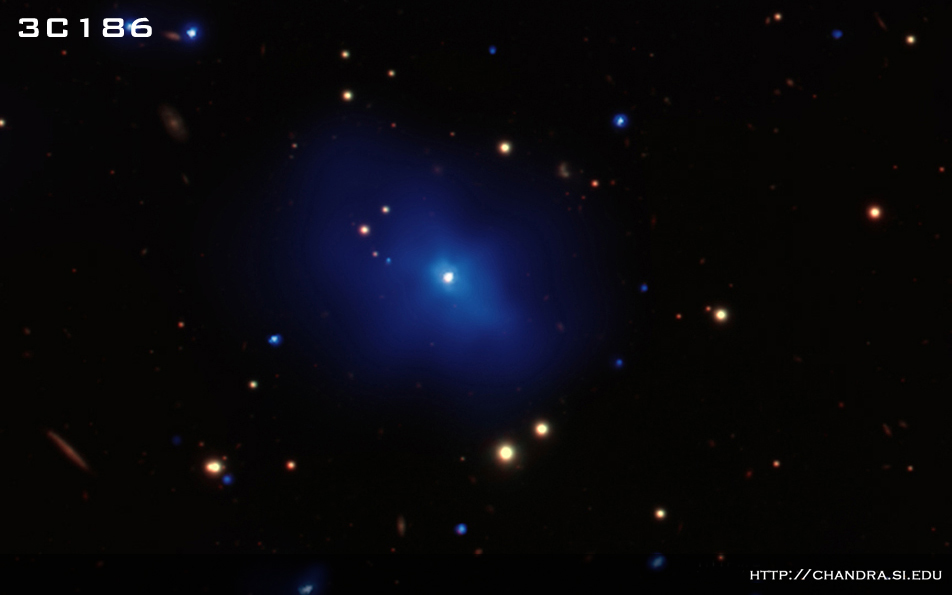 3C186:
3C186: A galaxy cluster with a central quasar located about 8 billion light years away.
[Photo Album]05 Oct 2010

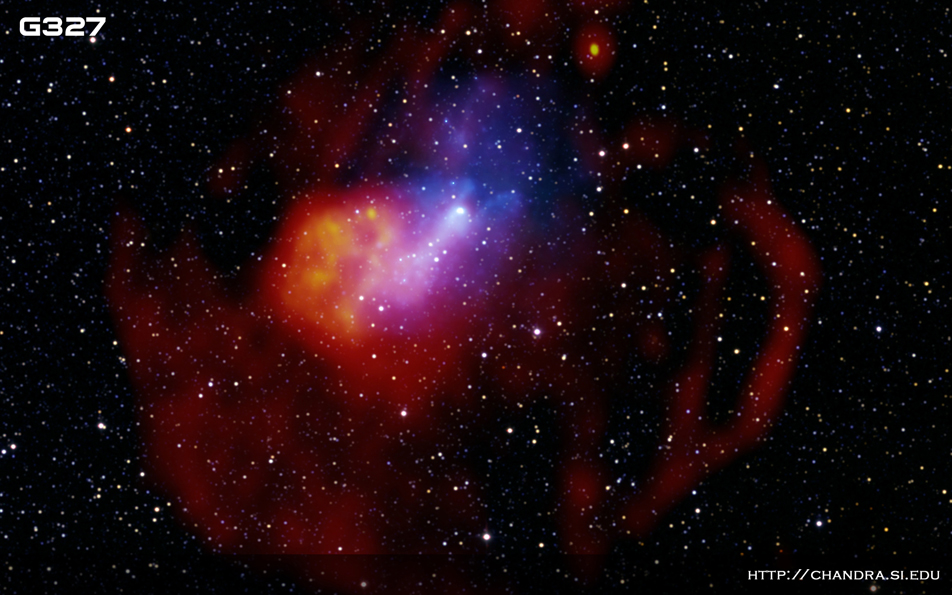 G327.1-1.1:
G327.1-1.1: G327.1-1.1 is the aftermath of a massive star that exploded as a supernova in the Milky Way galaxy.
[Photo Album]08 Sep 2010

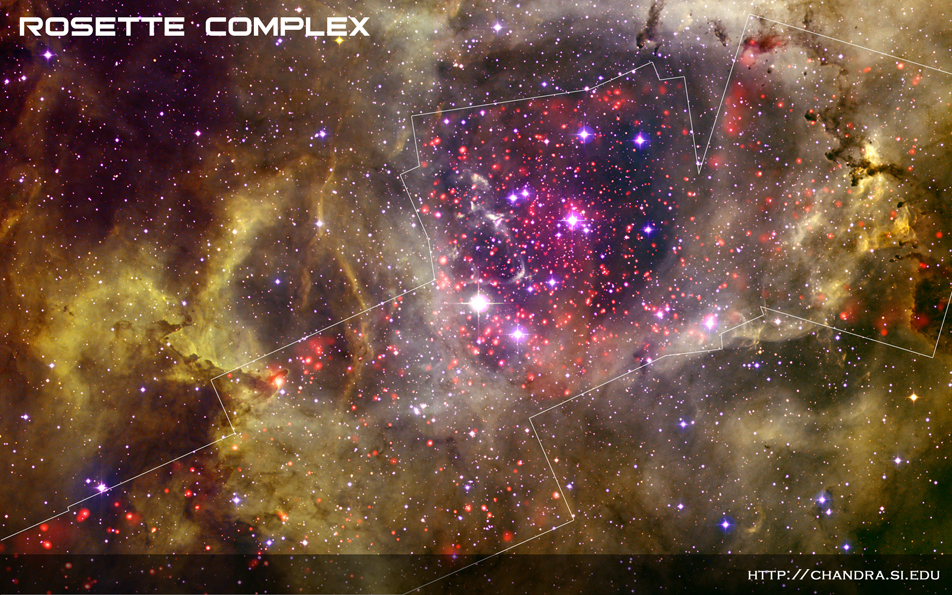 Rosette Nebula:
Rosette Nebula: This composite image shows the Rosette star formation region, located about 5,000 light years from Earth.
[Photo Album]18 Aug 2010

 M87:
M87: This image shows the eruption of a galactic "super-volcano" in the massive galaxy M87.
[Photo Album]05 Aug 2010

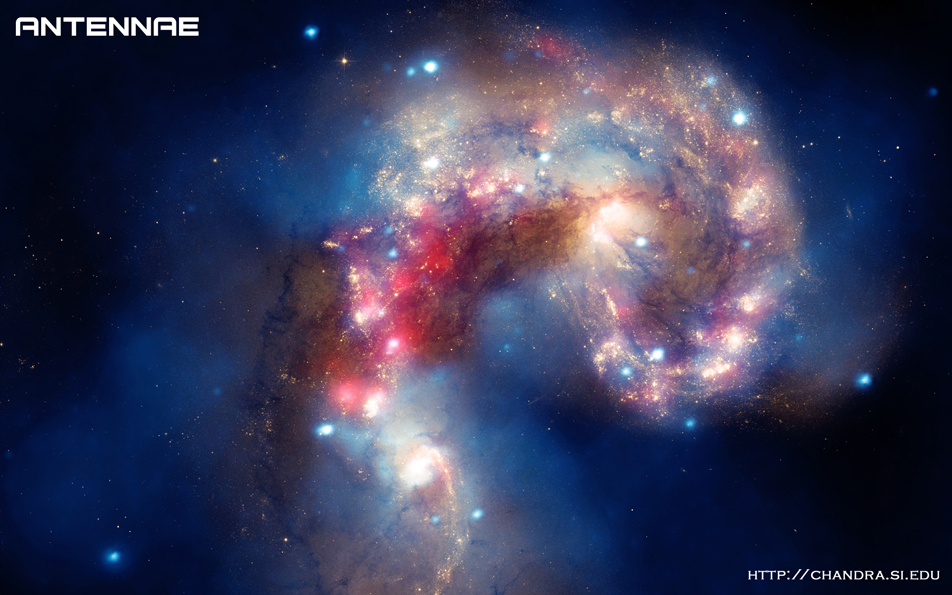 Antennae:
Antennae: A beautiful new image of two colliding galaxies has been released by NASA's Great Observatories.
[Photo Album]07 Jul 2010

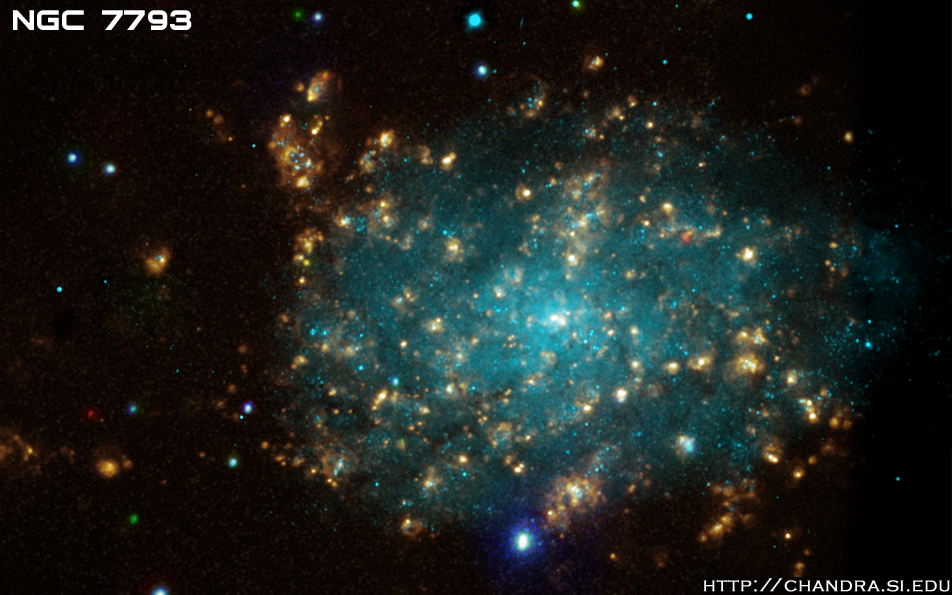 NGC 7793:
NGC 7793: Combining observations made with ESO's Very Large Telescope and NASA's Chandra X-ray telescope, astronomers have uncovered the most powerful pair of jets ever seen from a stellar black hole.
[Photo Album]24 May 2010

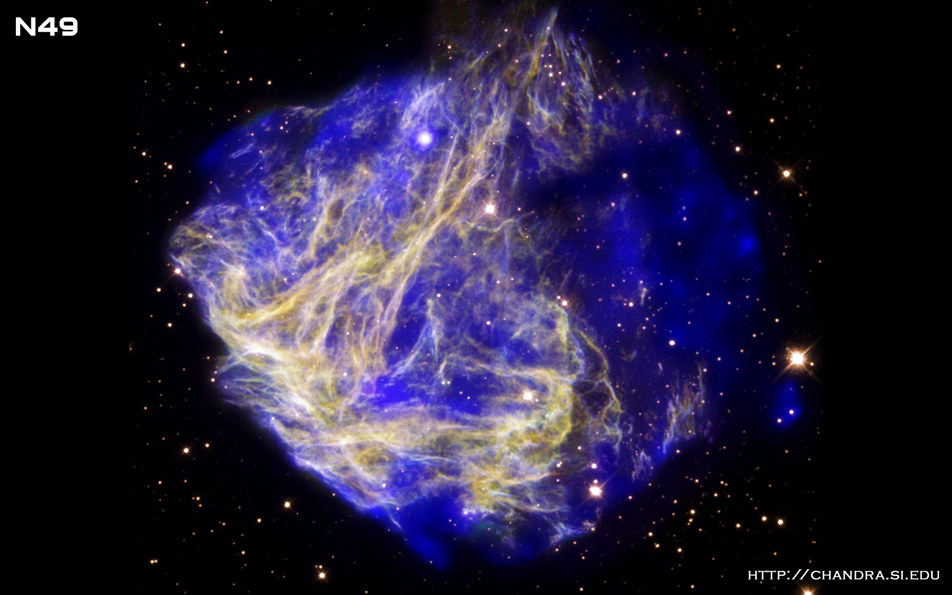 N49:
N49: This beautiful composite image shows N49, the aftermath of a supernova explosion in the Large Magellanic Cloud.
[Photo Album]29 Mar 2010

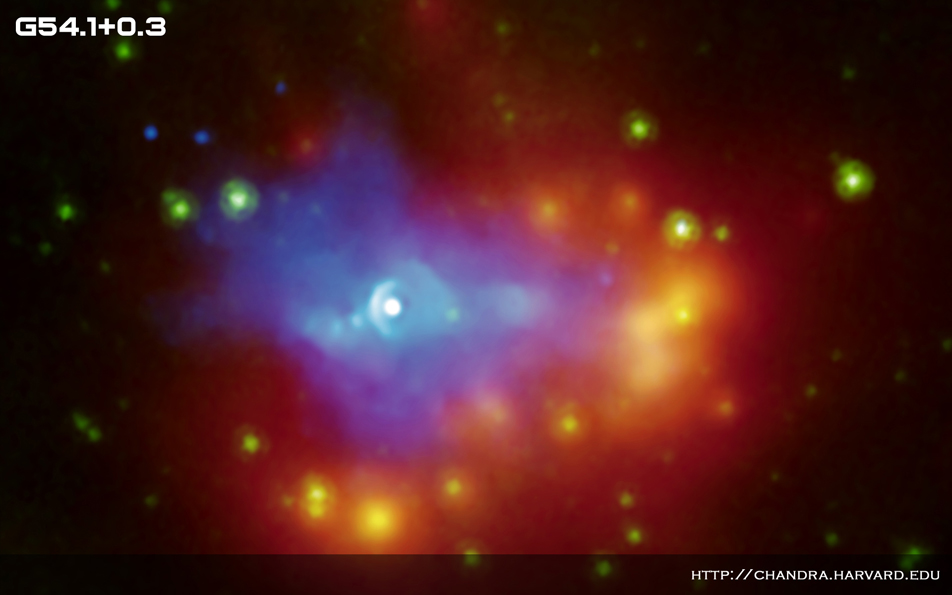 G54.1+0.3:
G54.1+0.3: A new image from NASA's Chandra X-ray Observatory and Spitzer Space Telescope shows the dusty remains of a collapsed star.
[Photo Album]03 Mar 2010

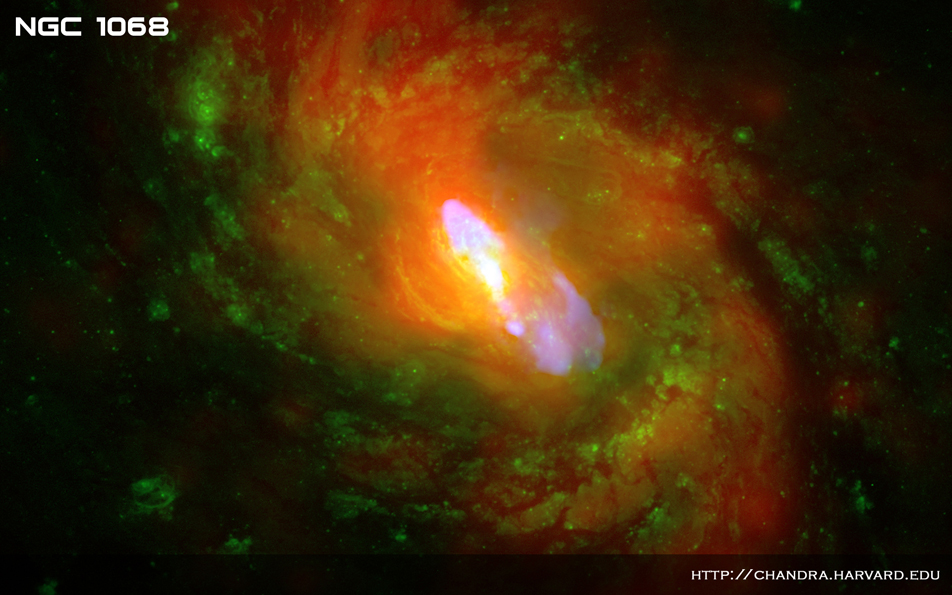 NGC 1068:
NGC 1068: This is a composite image of NGC 1068, one of the nearest and brightest galaxies containing a rapidly growing supermassive black hole.
[Photo Album]17 Feb 2010

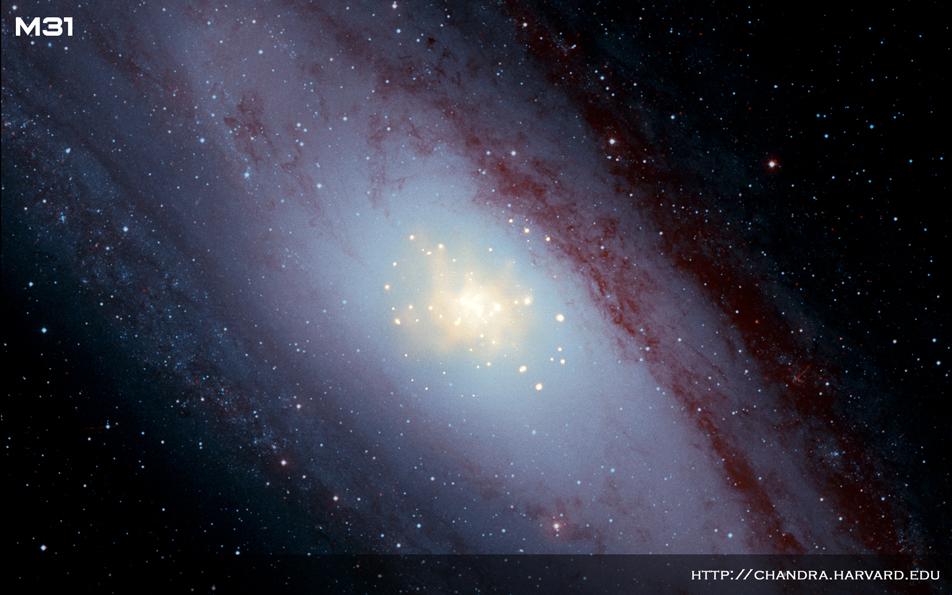 M31:
M31: A Type Ia supernova caused by accreting material produces significant X-ray emission prior to the explosion.
[Photo Album]21 Jan 2010

 Abell 3627:
Abell 3627: Using the Chandra X-ray Observatory, two spectacular tails of X-ray emission have been seen trailing behind a galaxy.
[Photo Album]05 Jan 2010

 Sagittarius A*:
Sagittarius A*: The supermassive black hole at the center of the Milky Way galaxy.
[Photo Album]04 Jan 2010

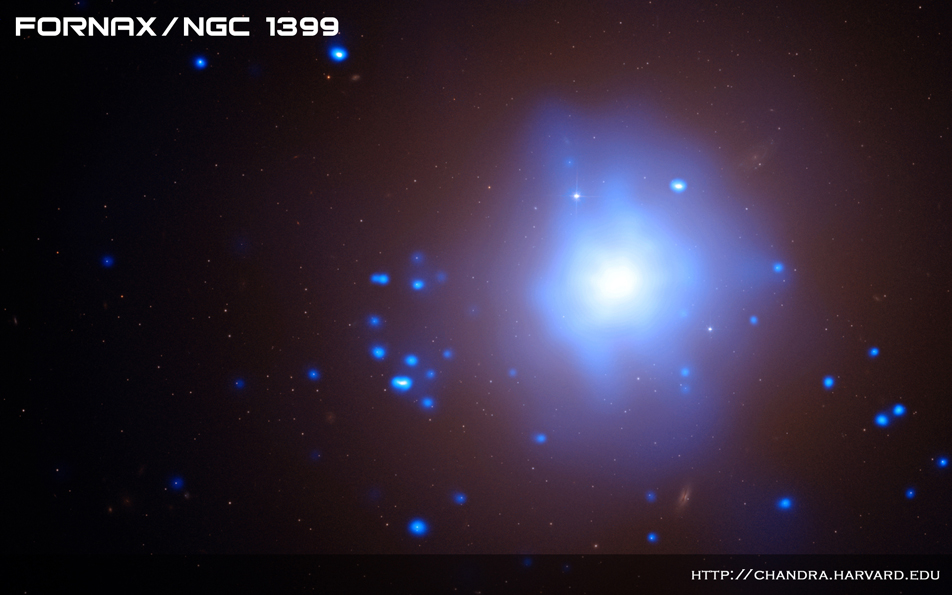 NGC 1399:
NGC 1399: An elliptical galaxy in the Fornax cluster that contains an ultraluminous X-ray source.
[Photo Album]10 Dec 2009

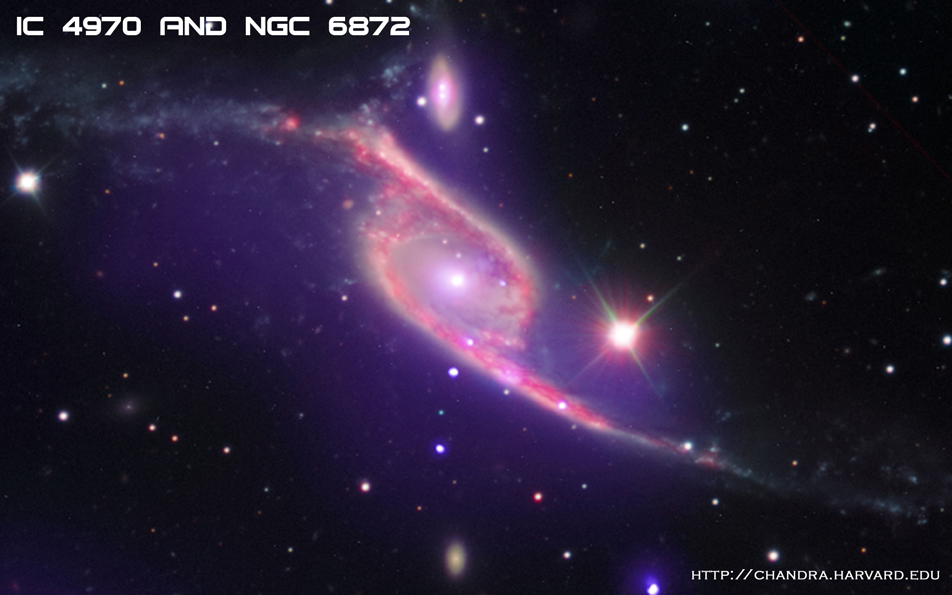 NGC 6872:
NGC 6872: This composite image of data from three different telescopes shows an ongoing collision between two galaxies, NGC 6872 and IC 4970.
[Photo Album]23 Nov 2009

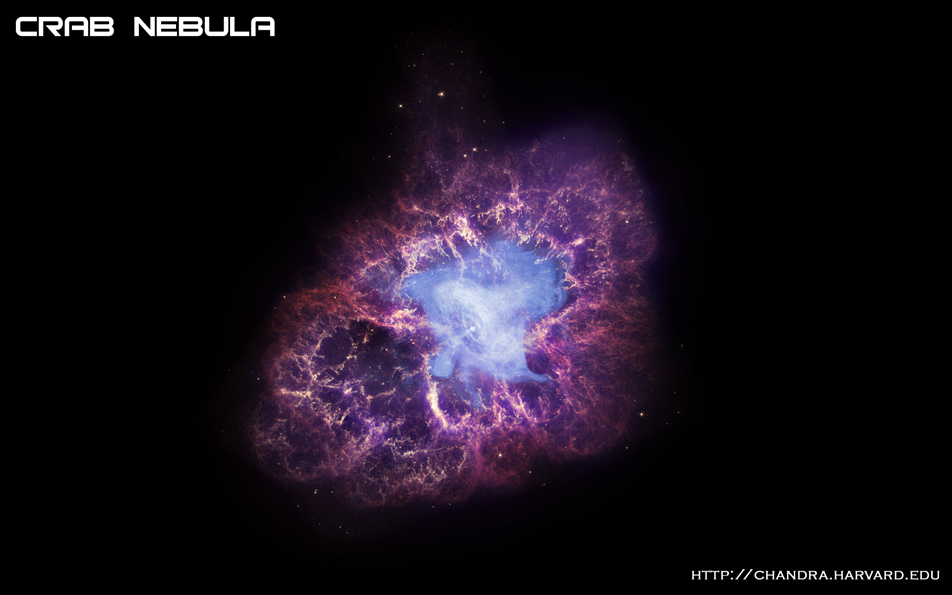 Crab Nebula:
Crab Nebula: Spectacular death of a star in the constellation Taurus was observed on Earth as the supernova of 1054 A.D.
[Photo Album]10 Nov 2009

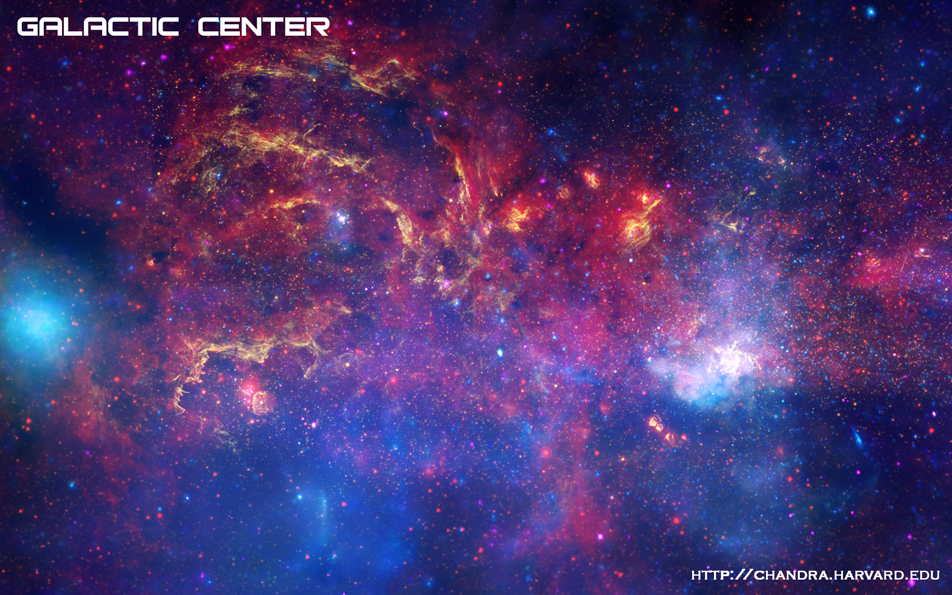 Galactic Center:
Galactic Center: In this spectacular image, observations using infrared light and X-ray light see through the obscuring dust and reveal the intense activity near the galactic core.
[Photo Album]06 Oct 2009

 NGC 6240:
NGC 6240: A galaxy about 330 million light years from Earth.
[Photo Album]22 Sep 2009

 Galactic Center:
Galactic Center: A dramatic new vista of the center of the Milky Way galaxy from Chandra X-ray Observatory exposes new levels of the complexity and intrigue in the Galactic center.
[Photo Album]14 Sep 2009

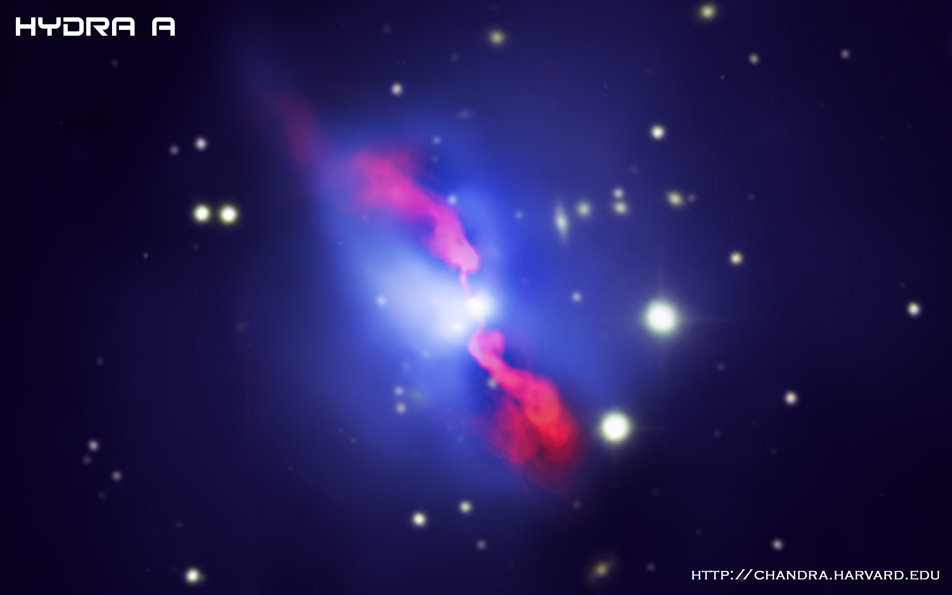 Hydra A:
Hydra A: A galaxy cluster about 840 million light years from Earth.
[Photo Album]12 Aug 2009

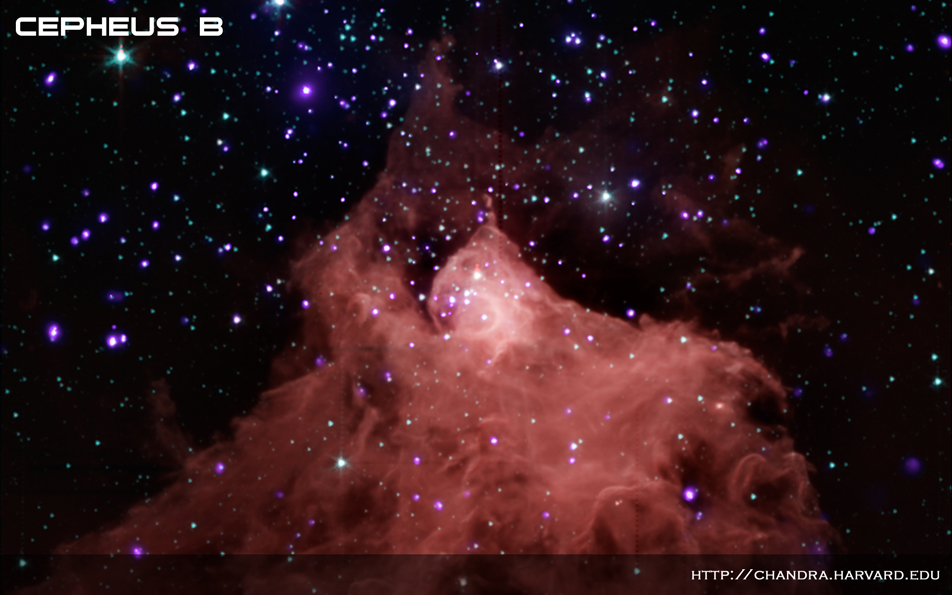 Cepheus B:
Cepheus B: This composite image, combining data from Chandra and Spitzer shows the molecular cloud Cepheus B, located in our Galaxy about 2,400 light years from the Earth.
[Photo Album]23 Jul 2009

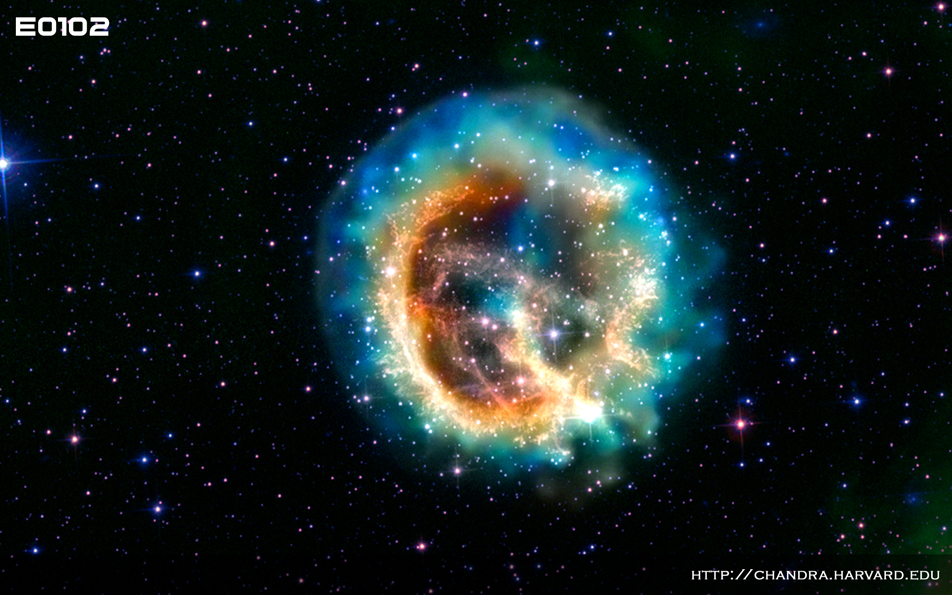 E0102-72.3:
E0102-72.3: Officially known as 1E0102.2-7219, a supernova remnant in the Small Magellanic Cloud.
[Photo Album]09 Jul 2009

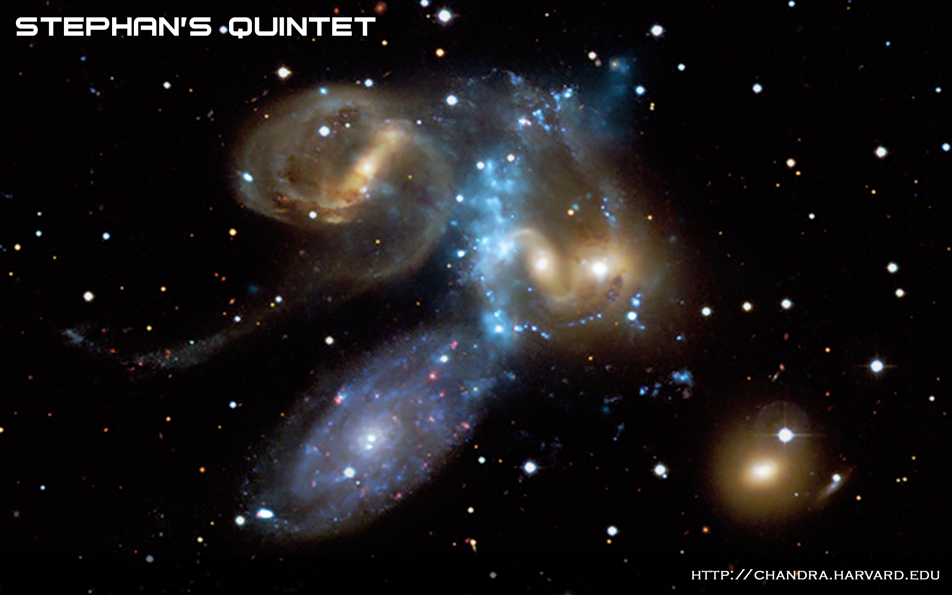 Stephan's Quintet:
Stephan's Quintet: This beautiful image gives a new look at a compact group of galaxies discovered about 130 years ago and located about 280 million light years from Earth.
[Photo Album]26 Jun 2009

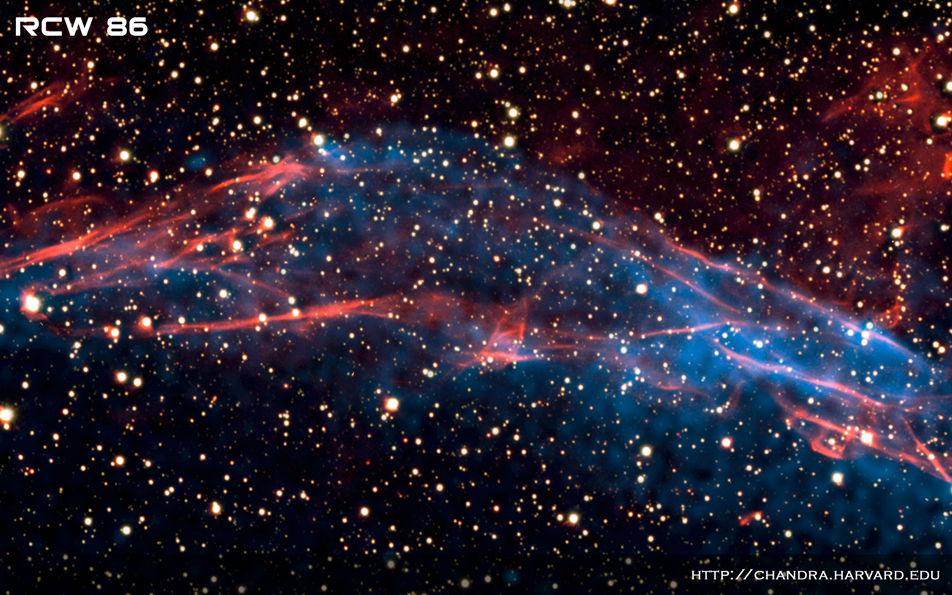 RCW 86:
RCW 86: A supernova remnant in the Milky Way, about 8,200 light years from Earth.
[Photo Album]09 Jun 2009

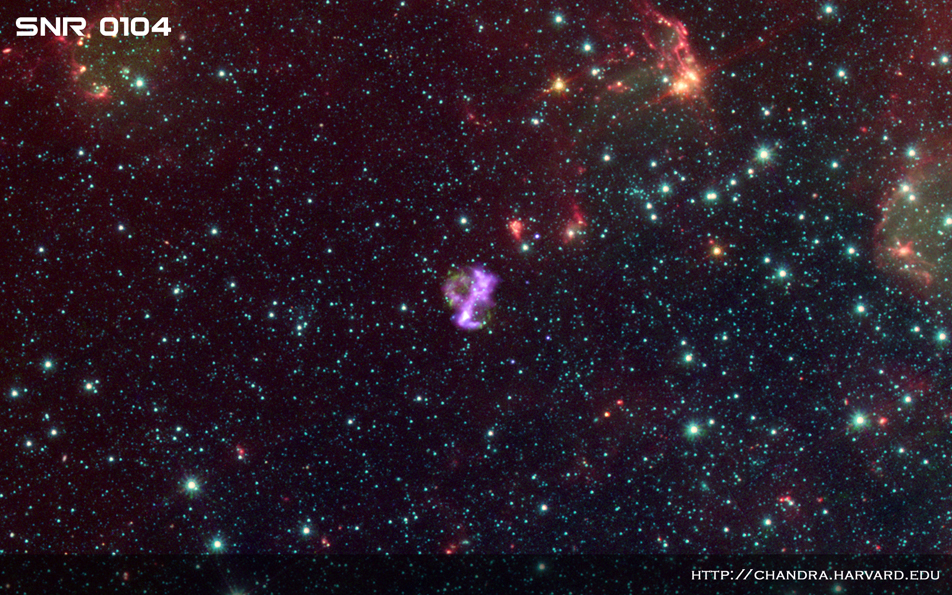 SNR 0104-72.3:
SNR 0104-72.3: A new image from Chandra X-ray Observatory shows a supernova remnant with a different look.
[Photo Album]14 May 2009

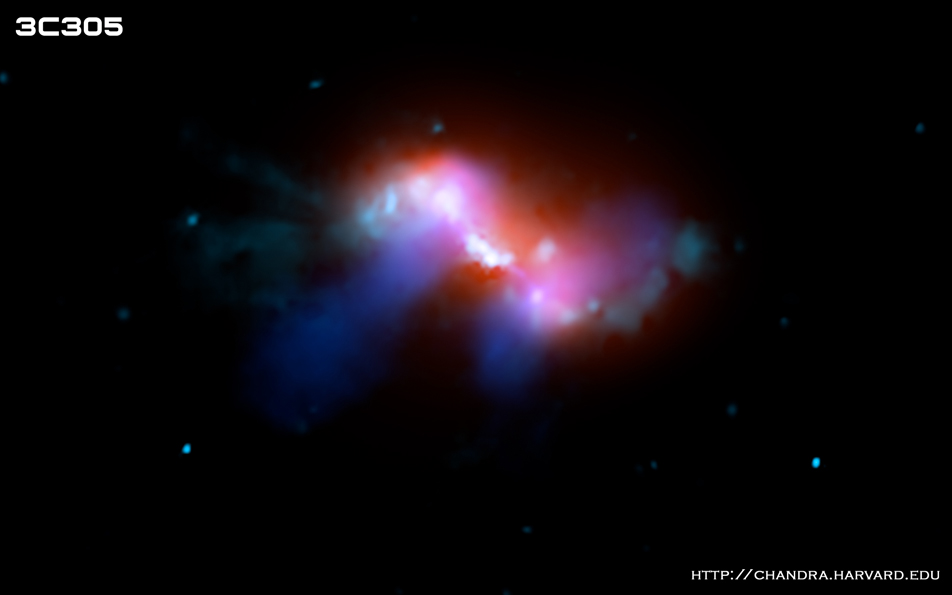 3C305:
3C305: Activity from a supermassive black hole is responsible for the intriguing appearance of galaxy 3C305, located 600 million light years away in the constellation Draco.
[Photo Album]16 Apr 2009

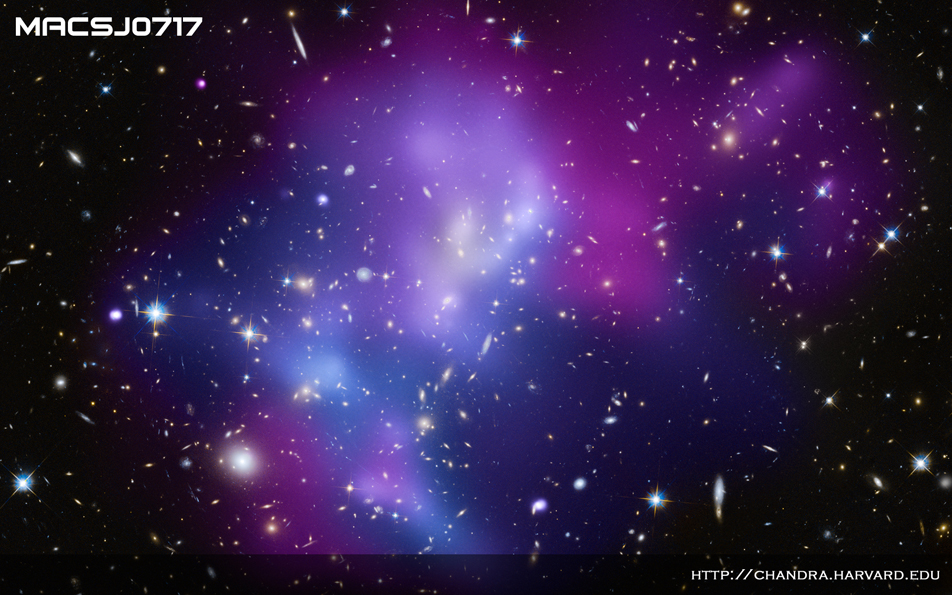 MACSJ0717.5+3745:
MACSJ0717.5+3745: One of the most complex galaxy clusters known, located about 5.4 billion light years from Earth.
[Photo Album]03 Apr 2009

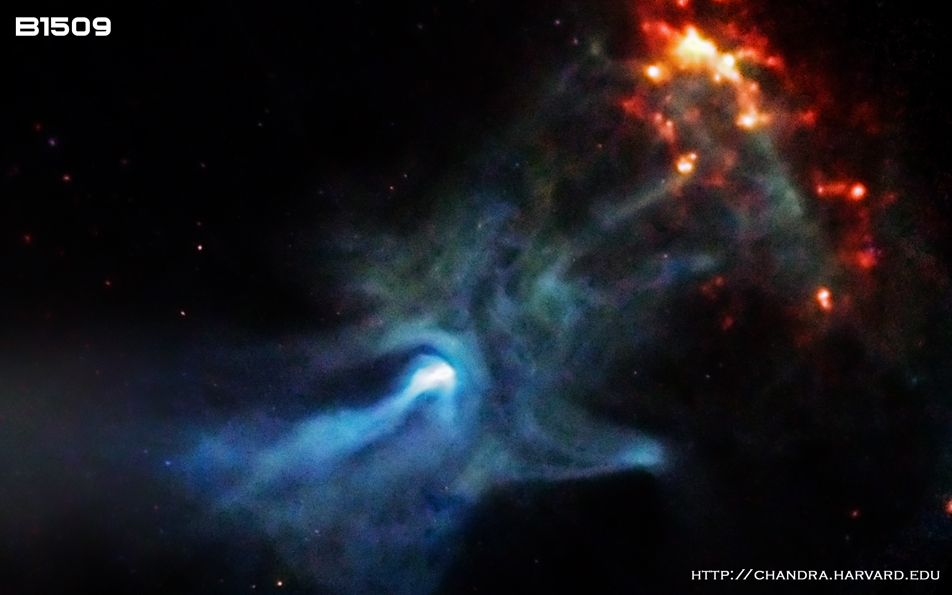 PSR B1509-58:
PSR B1509-58: A small, dense object only twelve miles in diameter is responsible for this beautiful X-ray nebula that spans 150 light years.
[Photo Album]25 Mar 2009

 GRS 1915+105:
GRS 1915+105: New results from Chandra have made a major advance in explaining how a special class of black holes may shut off the high-speed jets they produce.
[Photo Album]11 Mar 2009

18 Feb 2009

 Tycho's Supernova Remnant:
Tycho's Supernova Remnant: Composite image of the Tycho supernova remnant
[Photo Album]10 Feb 2009

 M101:
M101: This image of the spiral galaxy Messier 101 (M101) is a composite of data from Chandra X-ray Observatory, the Hubble Space Telescope, and the Spitzer Space Telescope.
[Photo Album]30 Jan 2009

 Centaurus A:
Centaurus A: An active galaxy at a distance of 10 million light years from Earth.
[Photo Album]27 Jan 2009

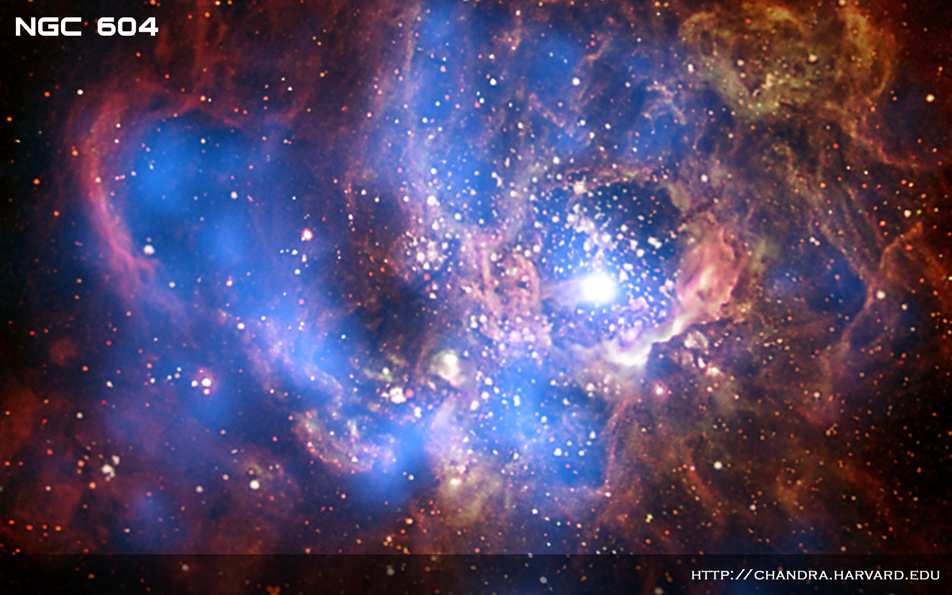 NGC 604:
NGC 604: A new study unveils NGC 604, the largest region of star formation in the nearby galaxy M33, in its first deep, high-resolution view in X-rays.
[Photo Album]06 Jan 2009

 Cassiopeia A:
Cassiopeia A: This new movie of X-ray data from Chandra of supernova remnant Cassiopeia A was made by combining observations taken between January 2000 and December 2007.
[Photo Album]

































































































































































































































































































